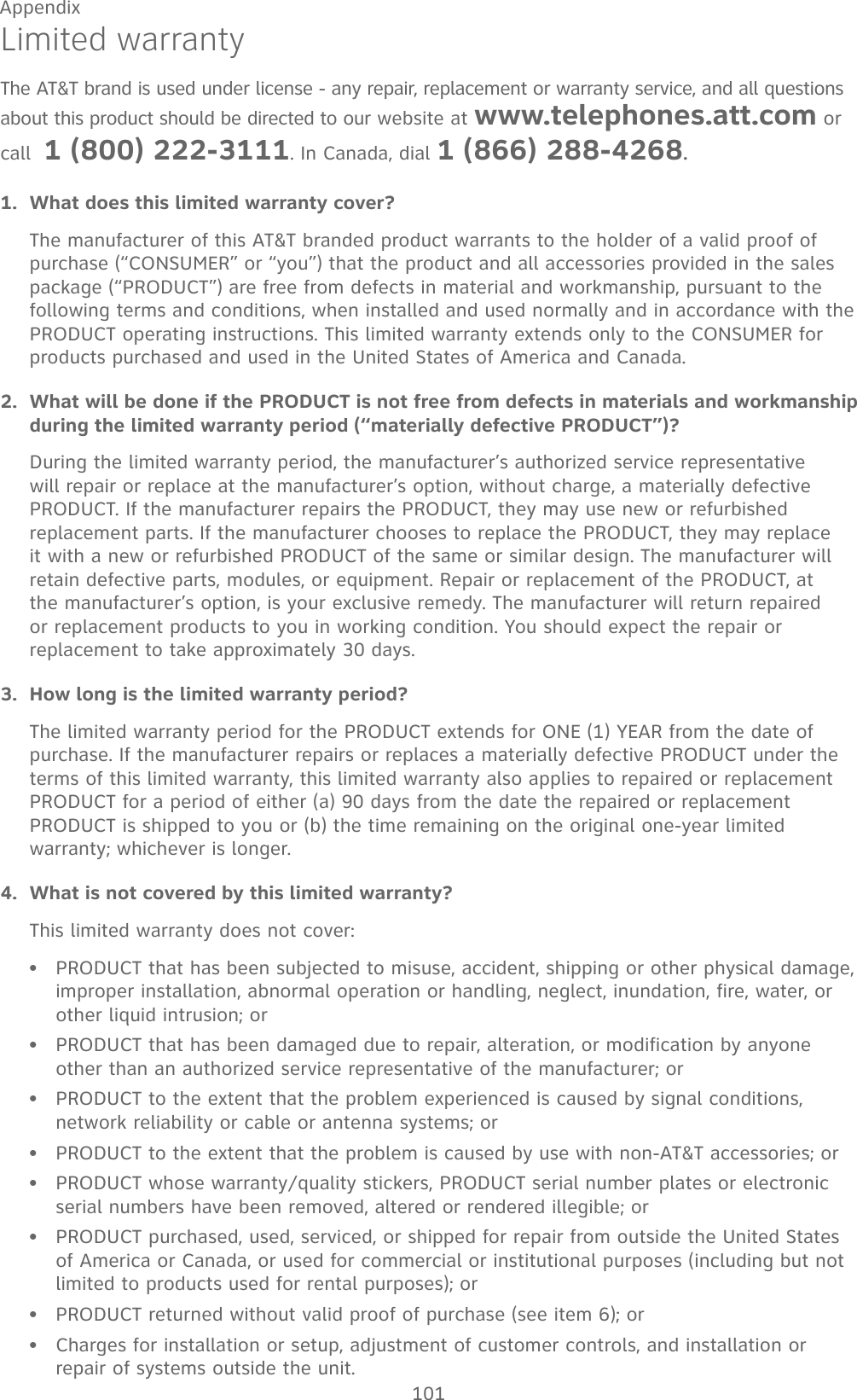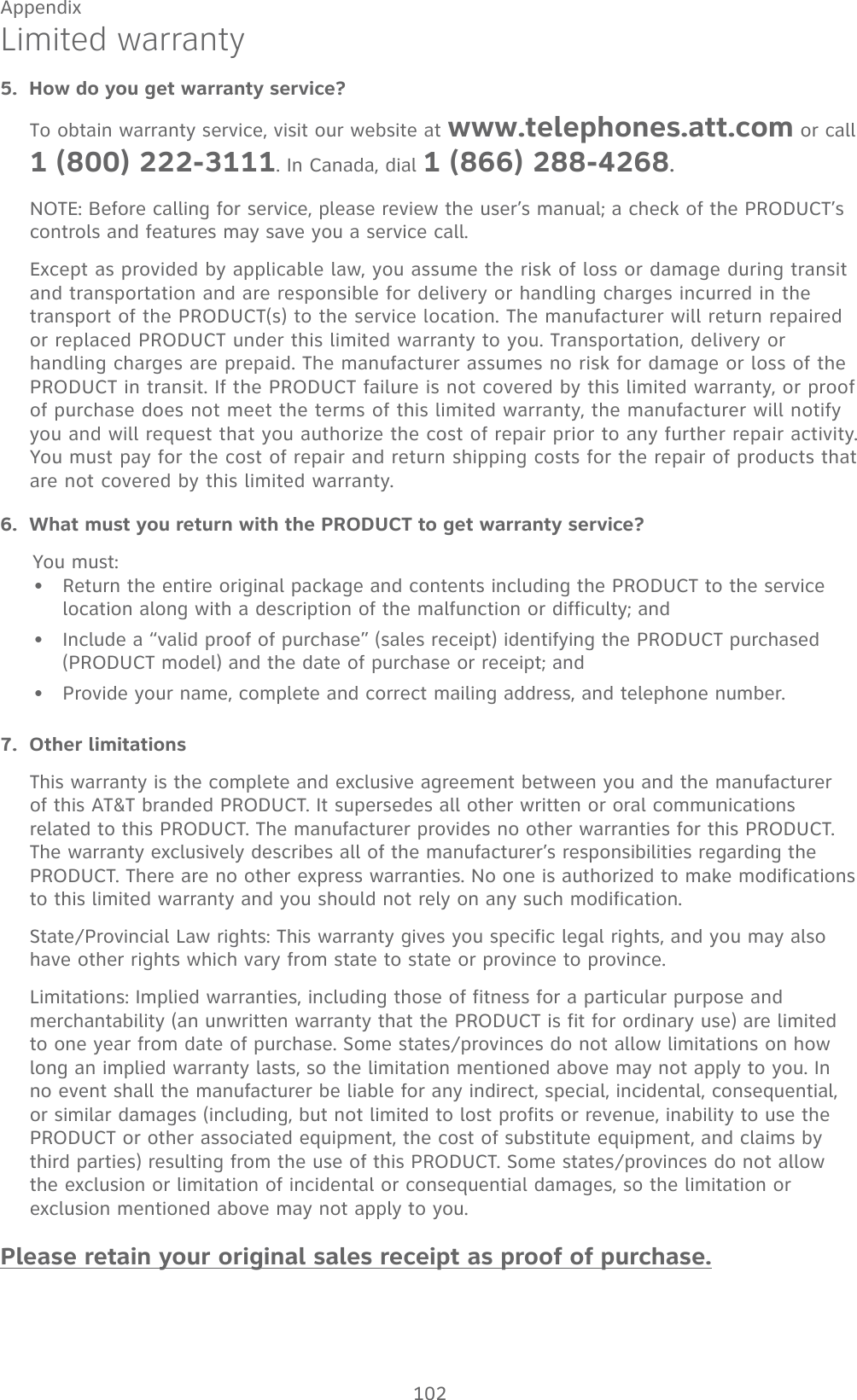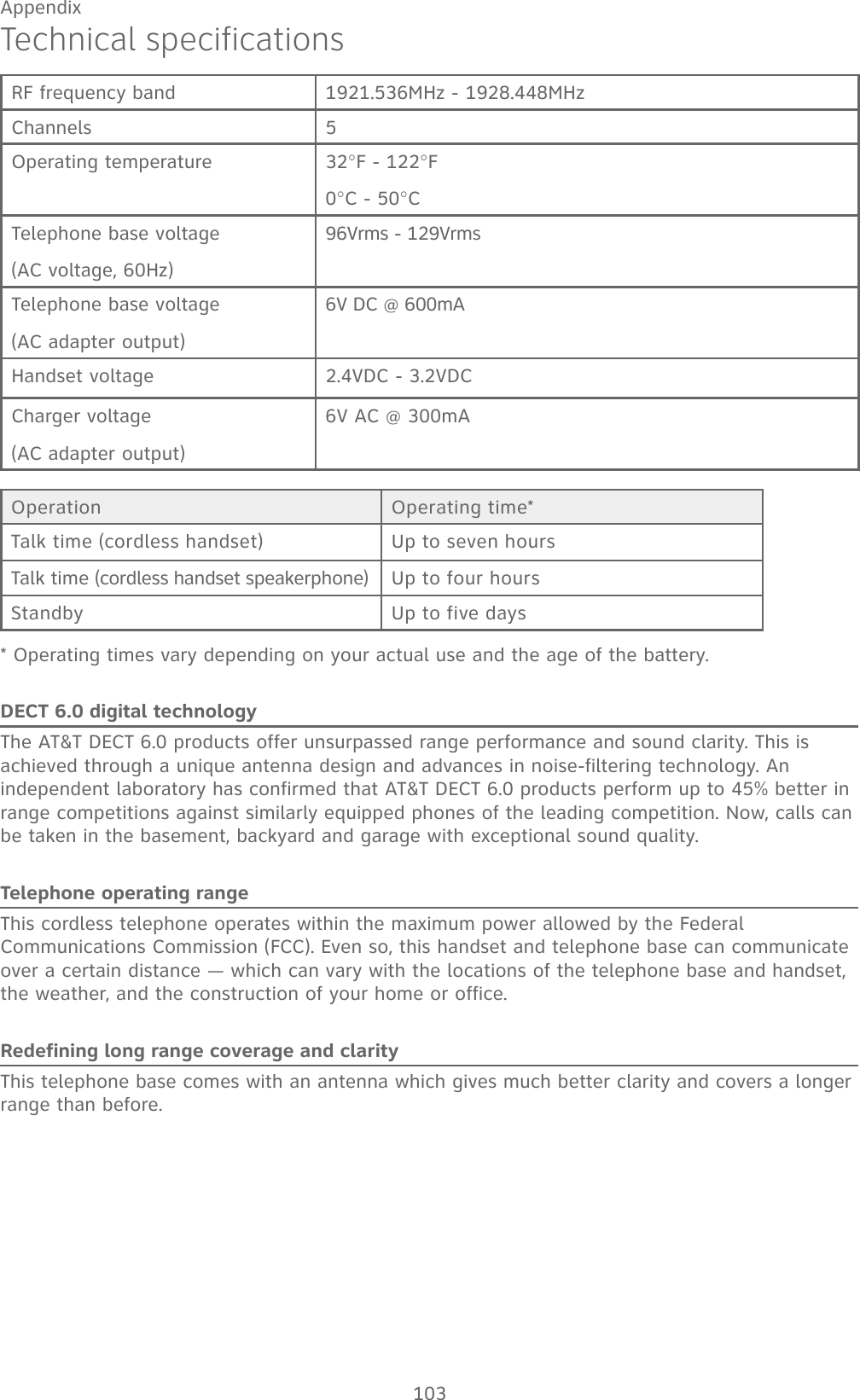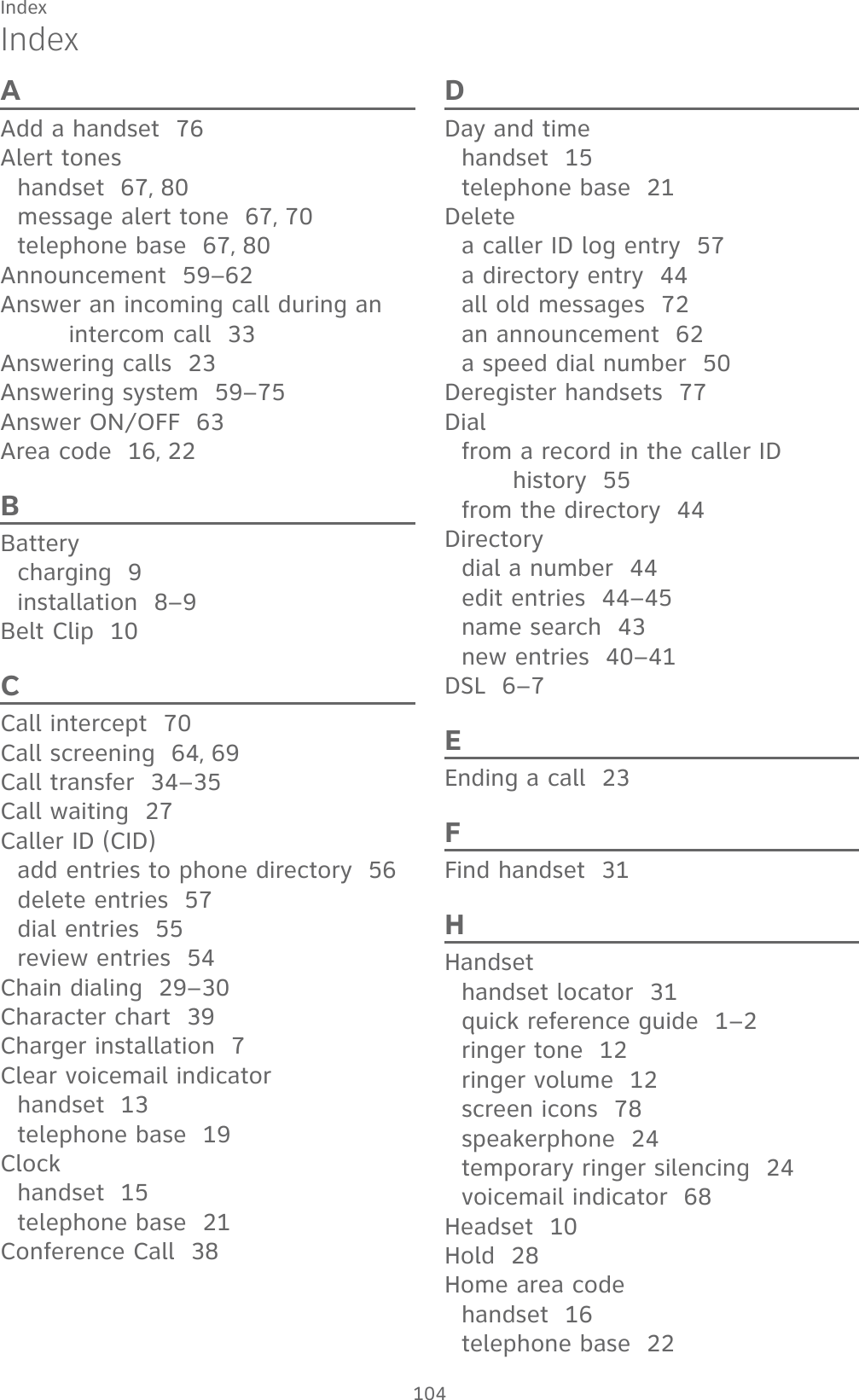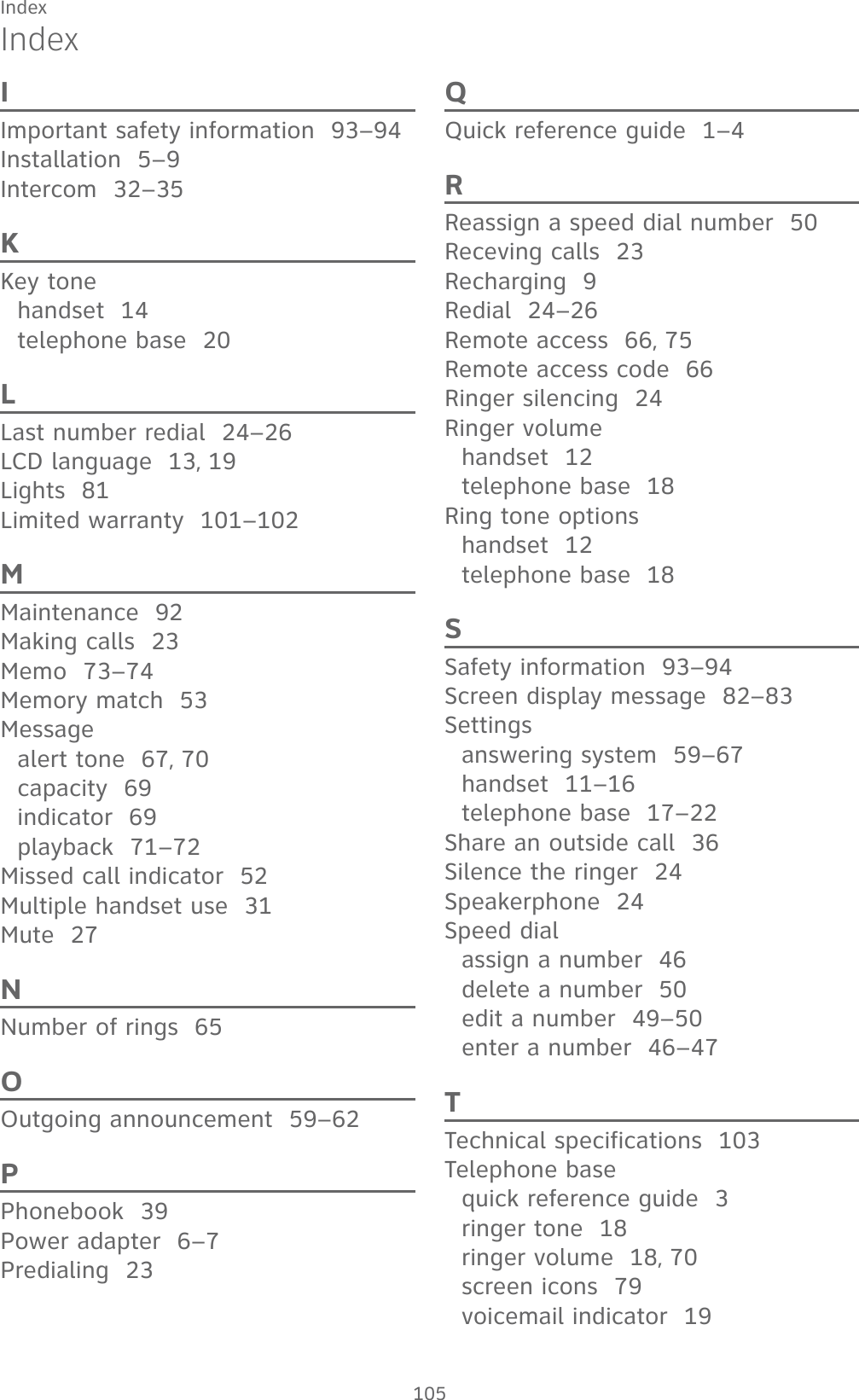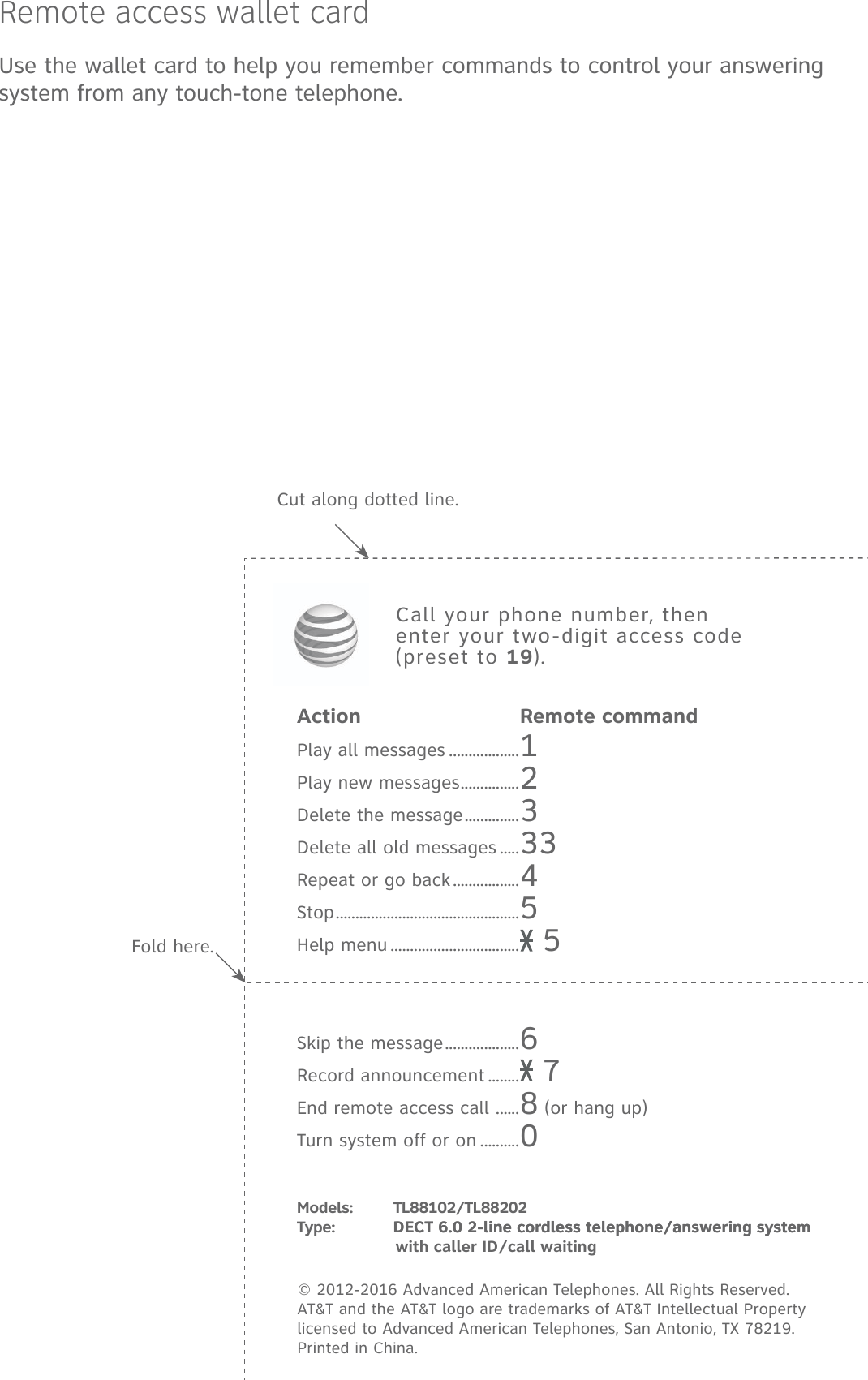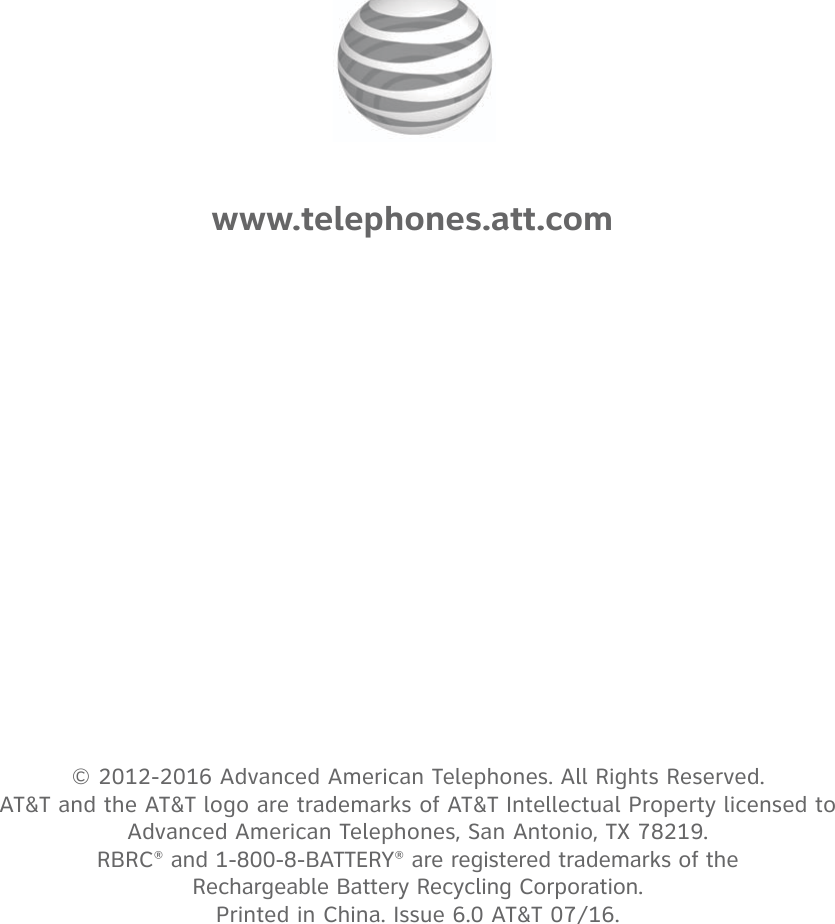VTech Telecommunications 80-7009-01 DECT6.0 Cordless Telephone/Answering System User Manual TL88X02 CIB i6 0 20161018
VTech Telecommunications Ltd DECT6.0 Cordless Telephone/Answering System TL88X02 CIB i6 0 20161018
Contents
- 1. User Manual
- 2. User manual
User manual
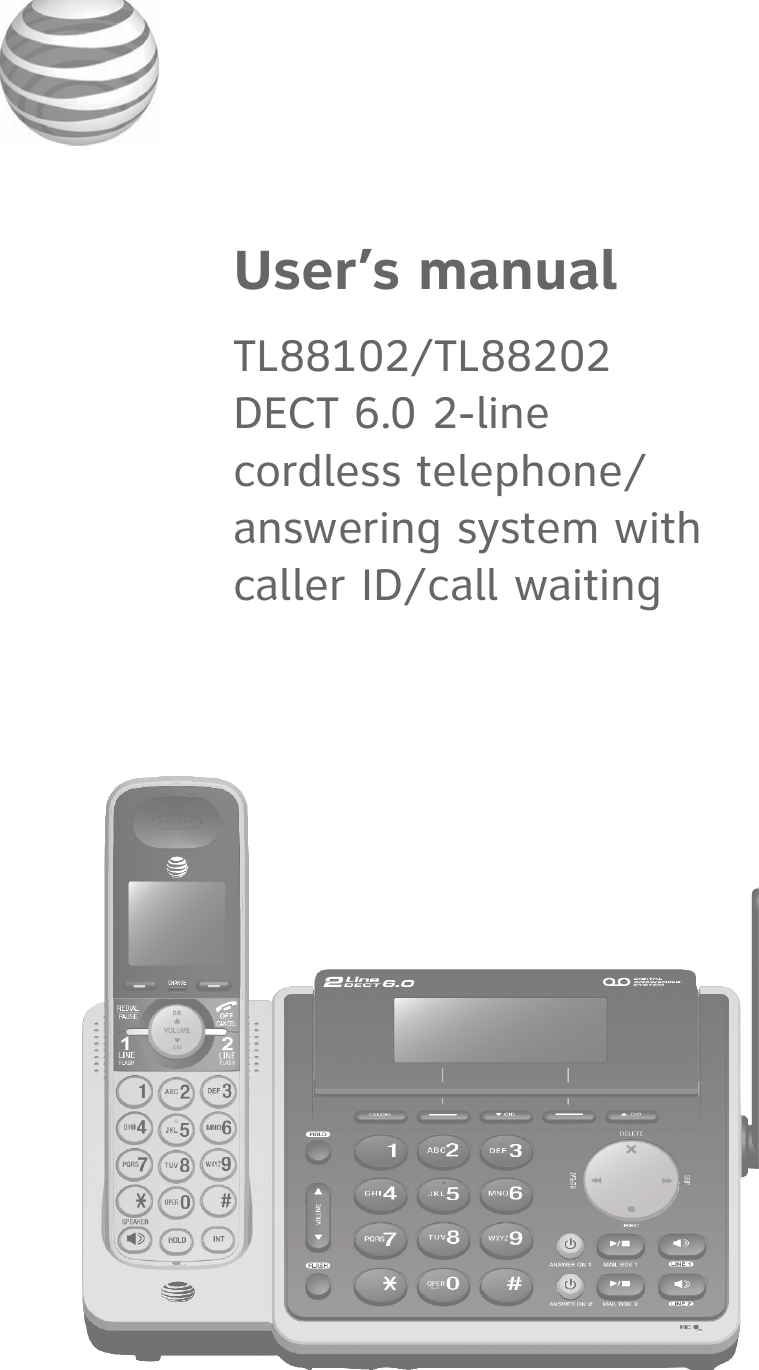
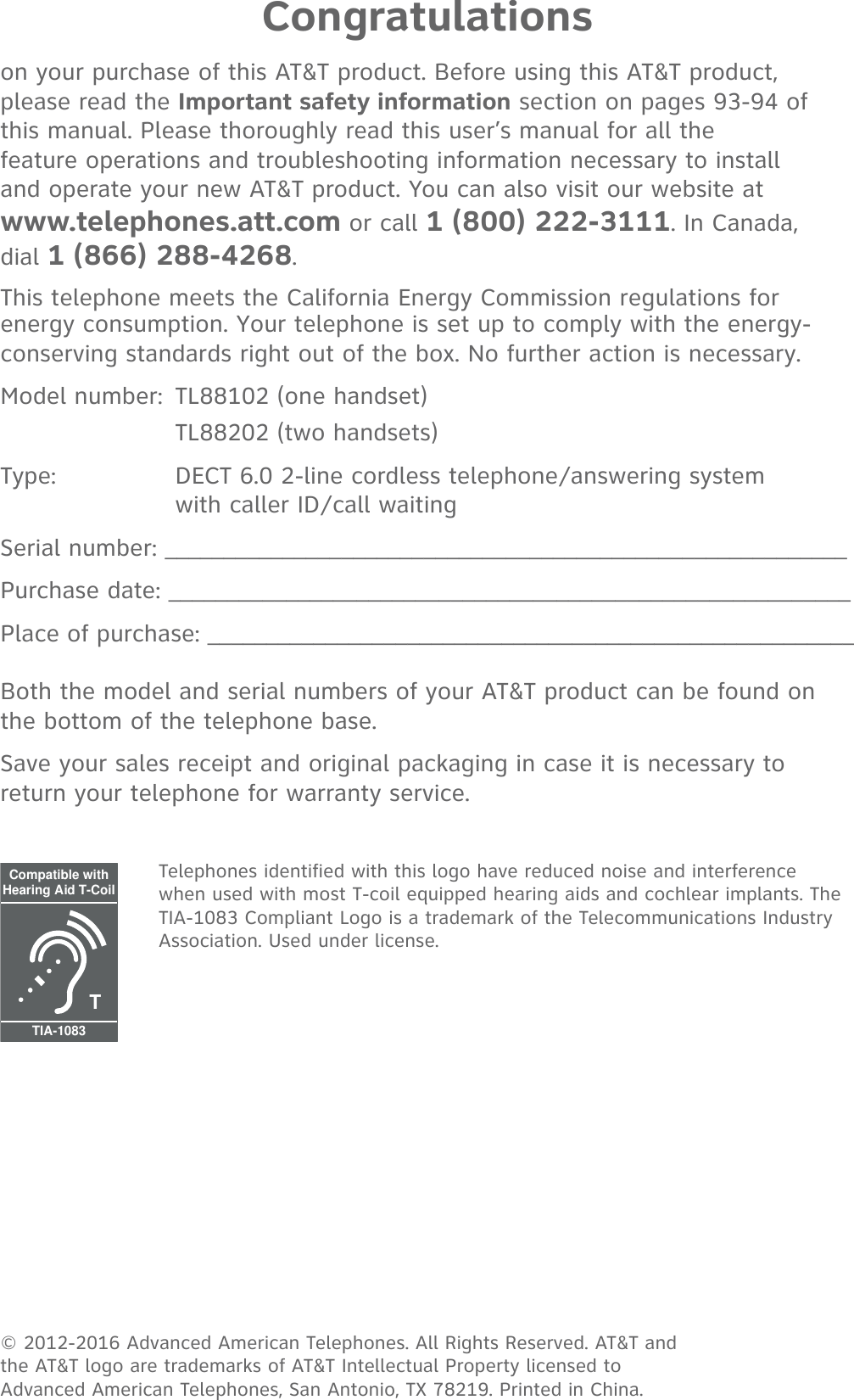
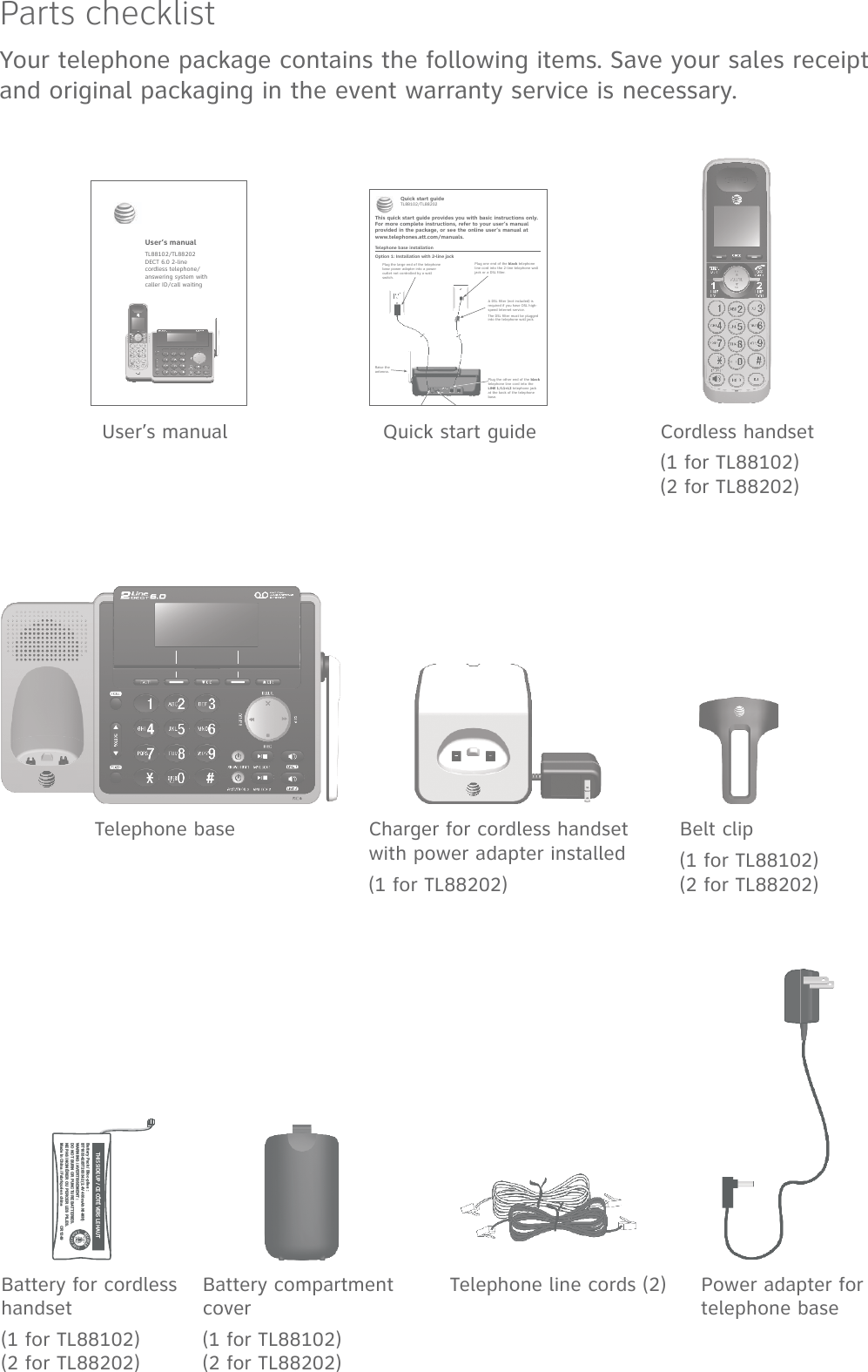
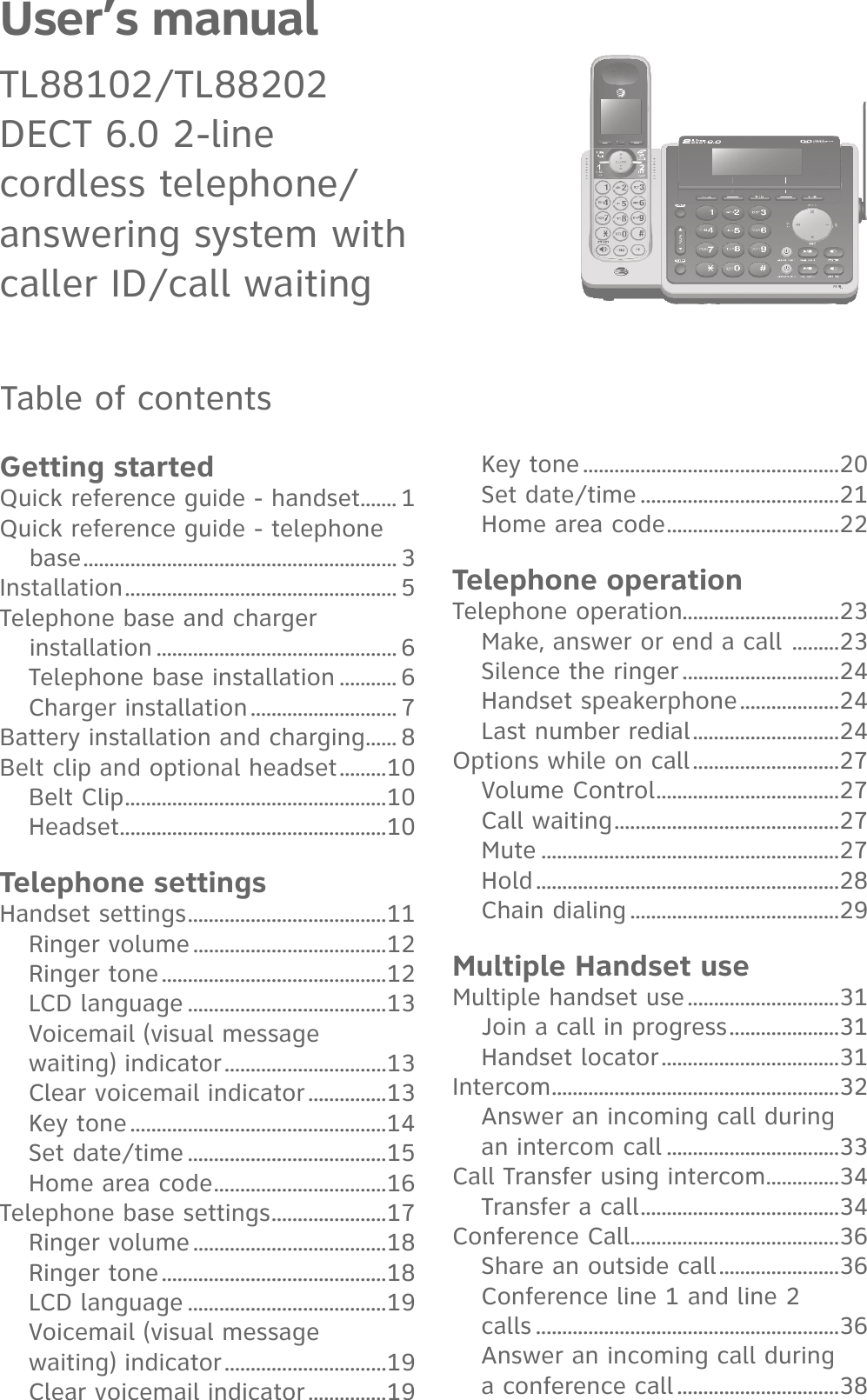
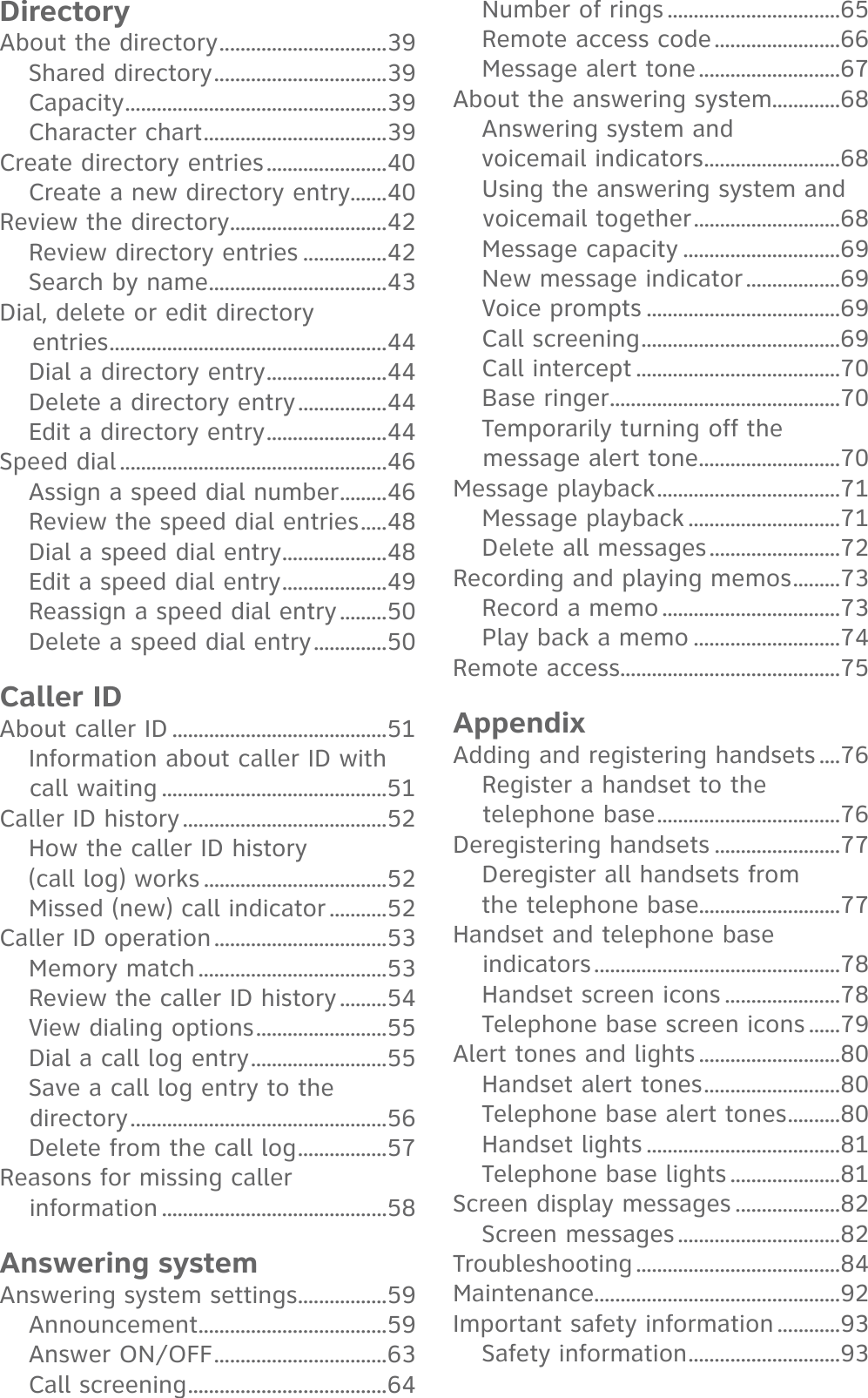
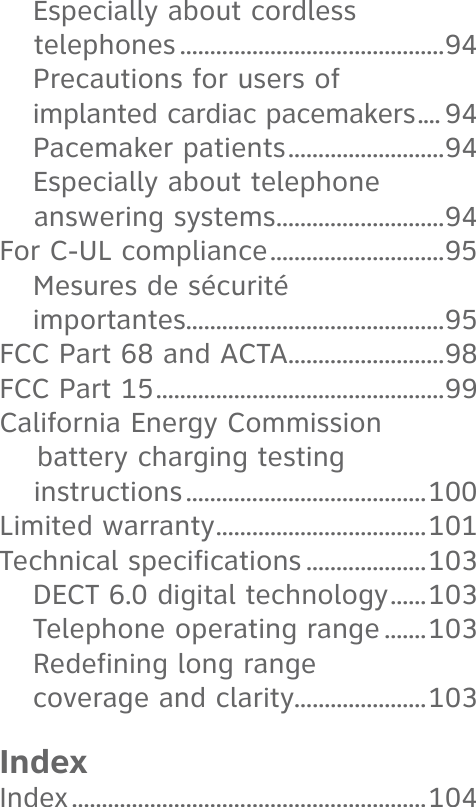
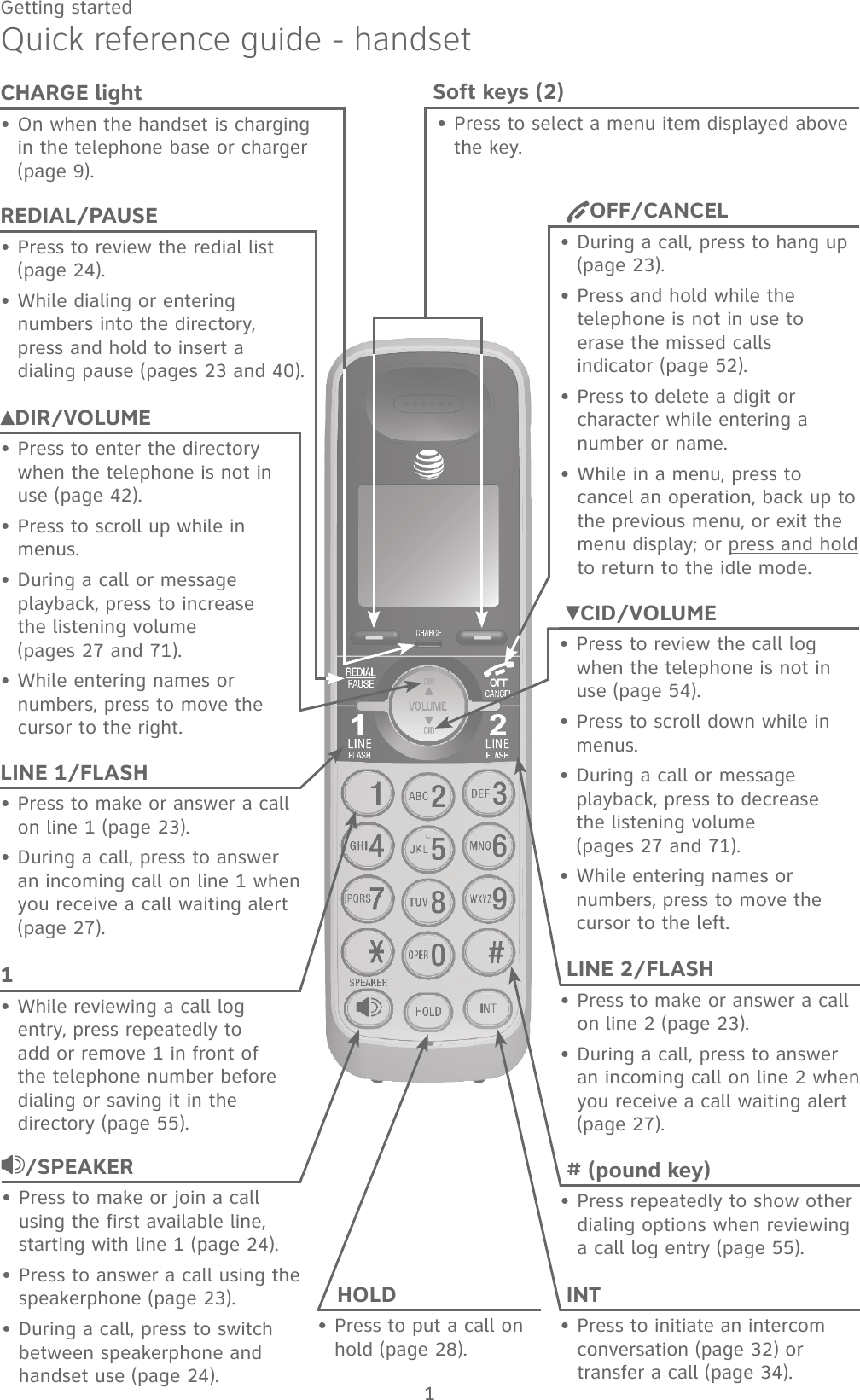
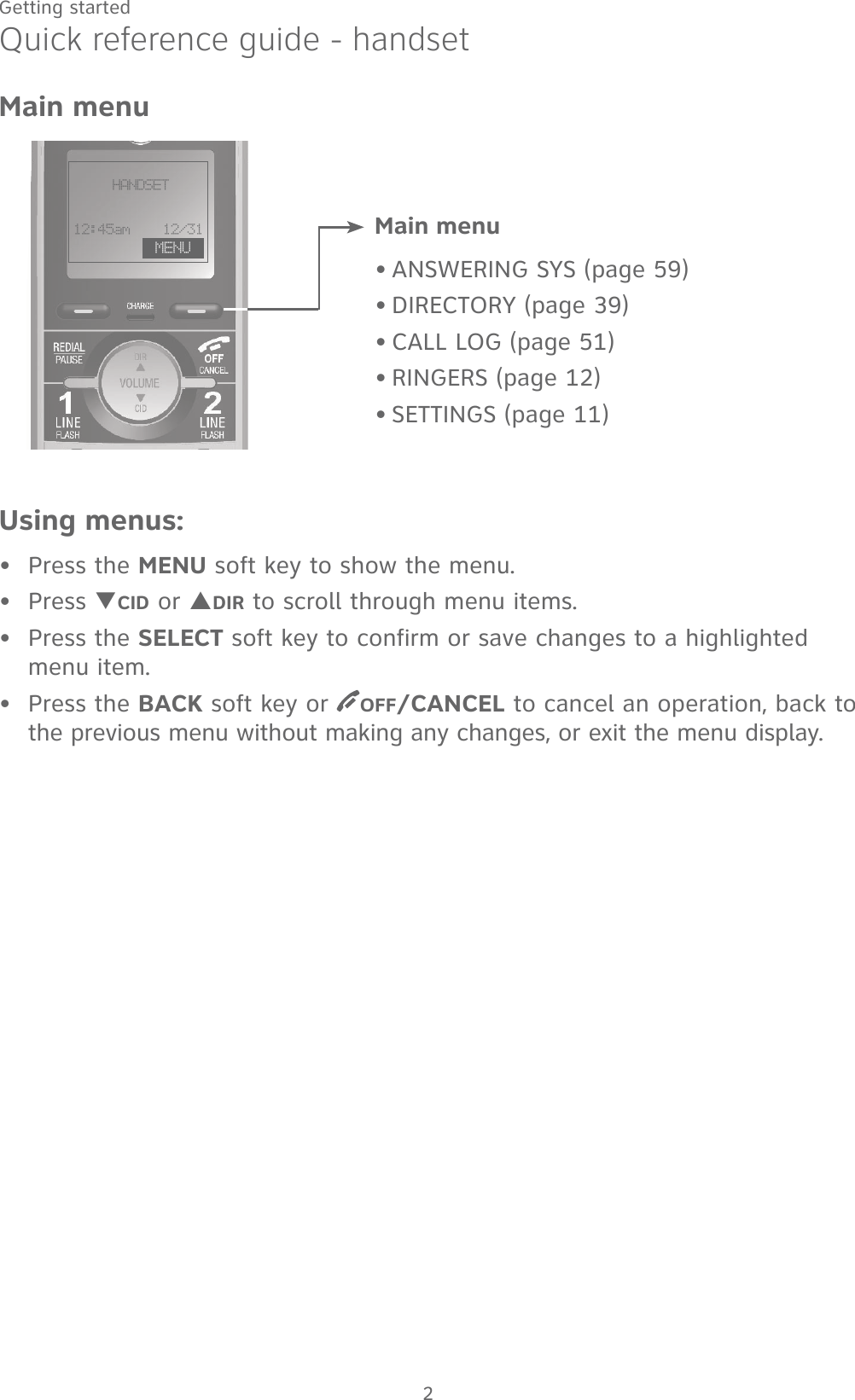
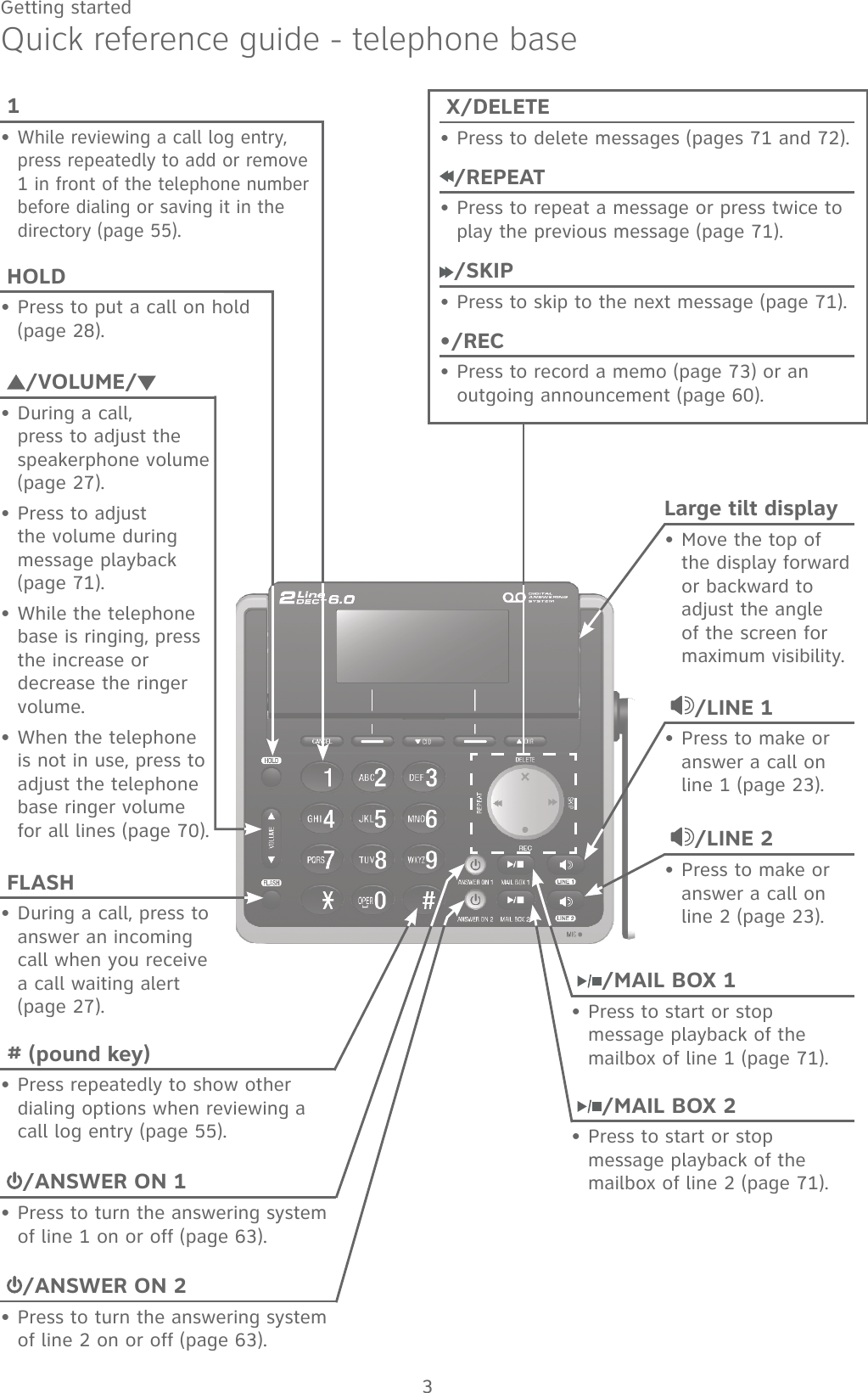
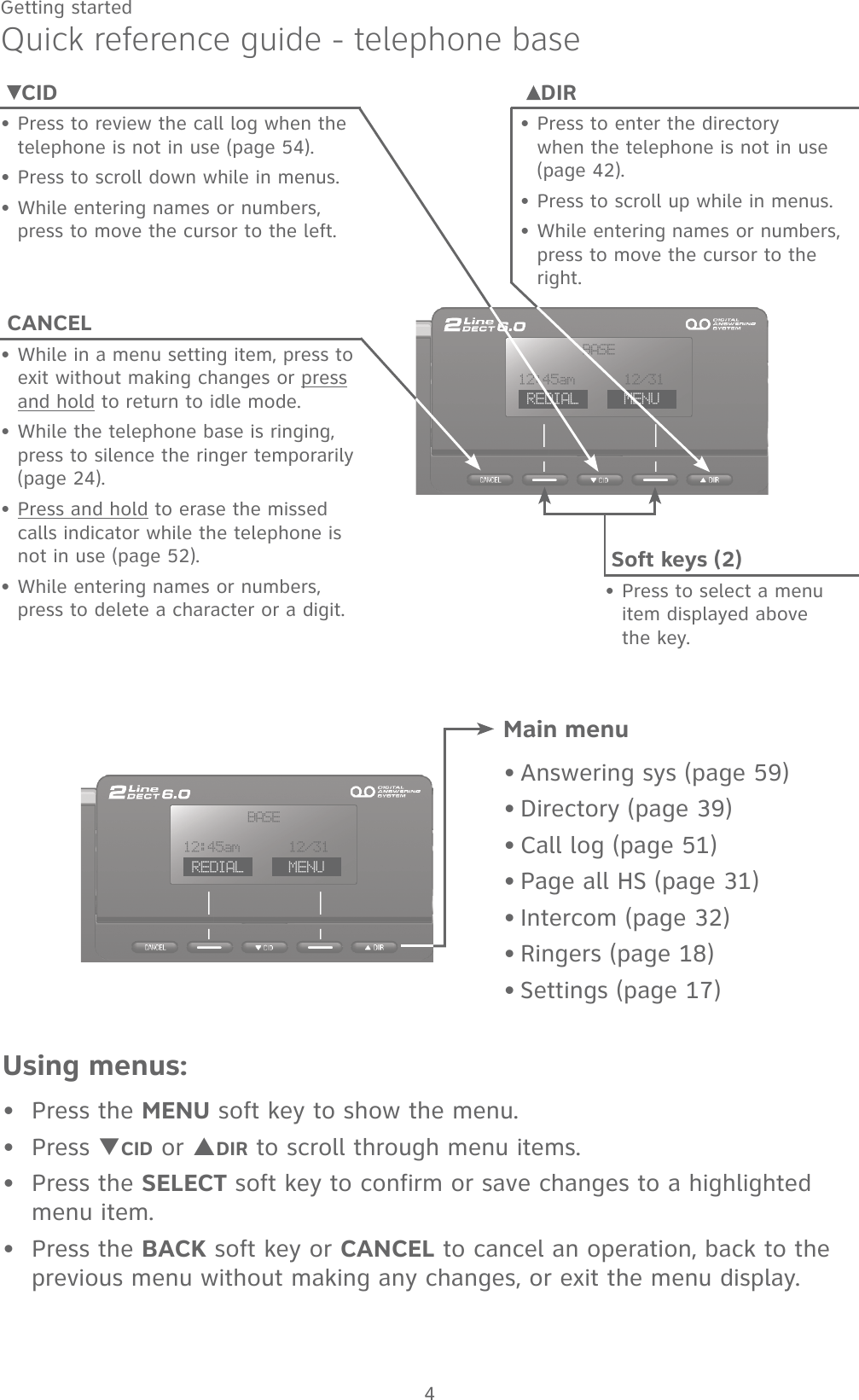
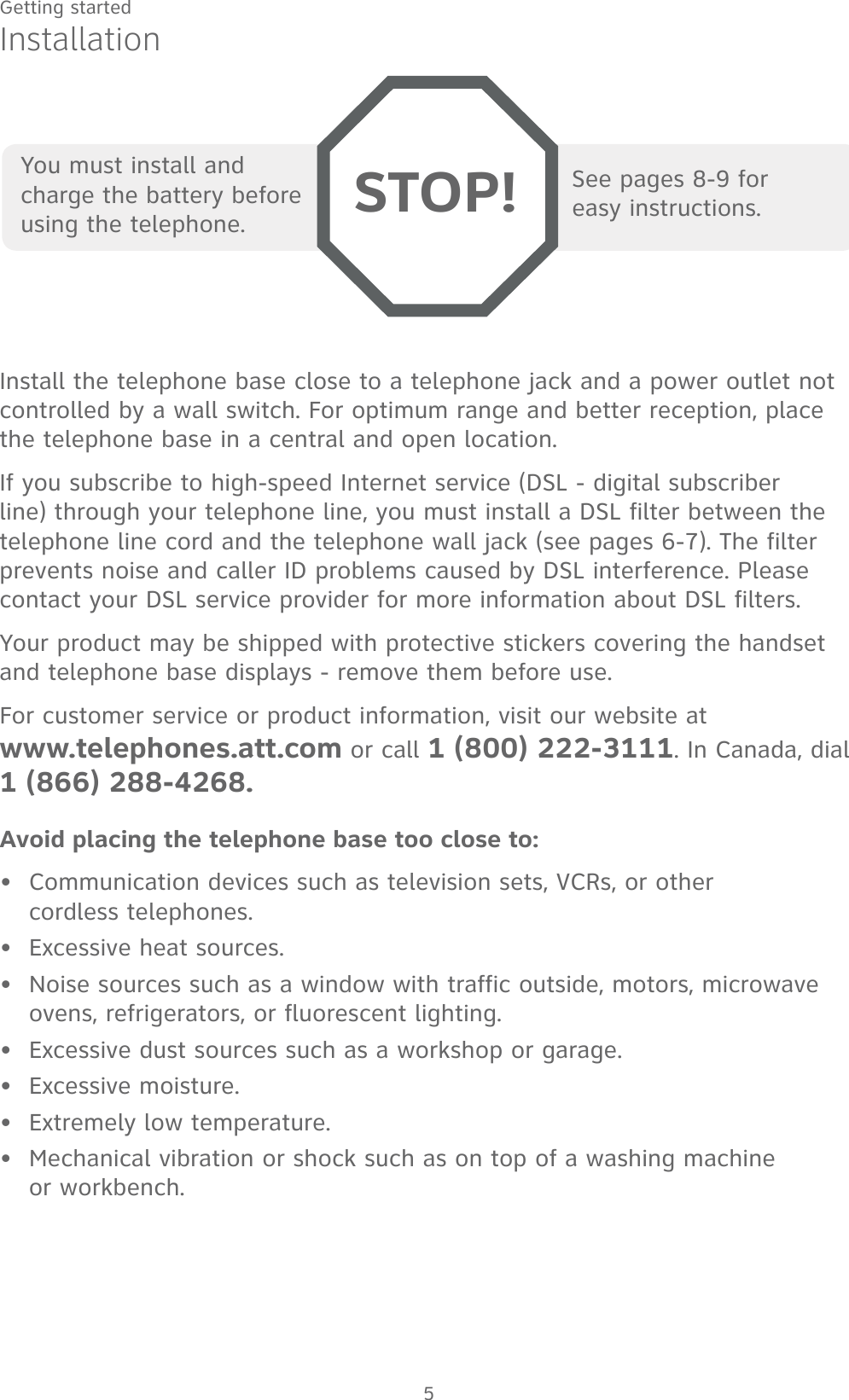
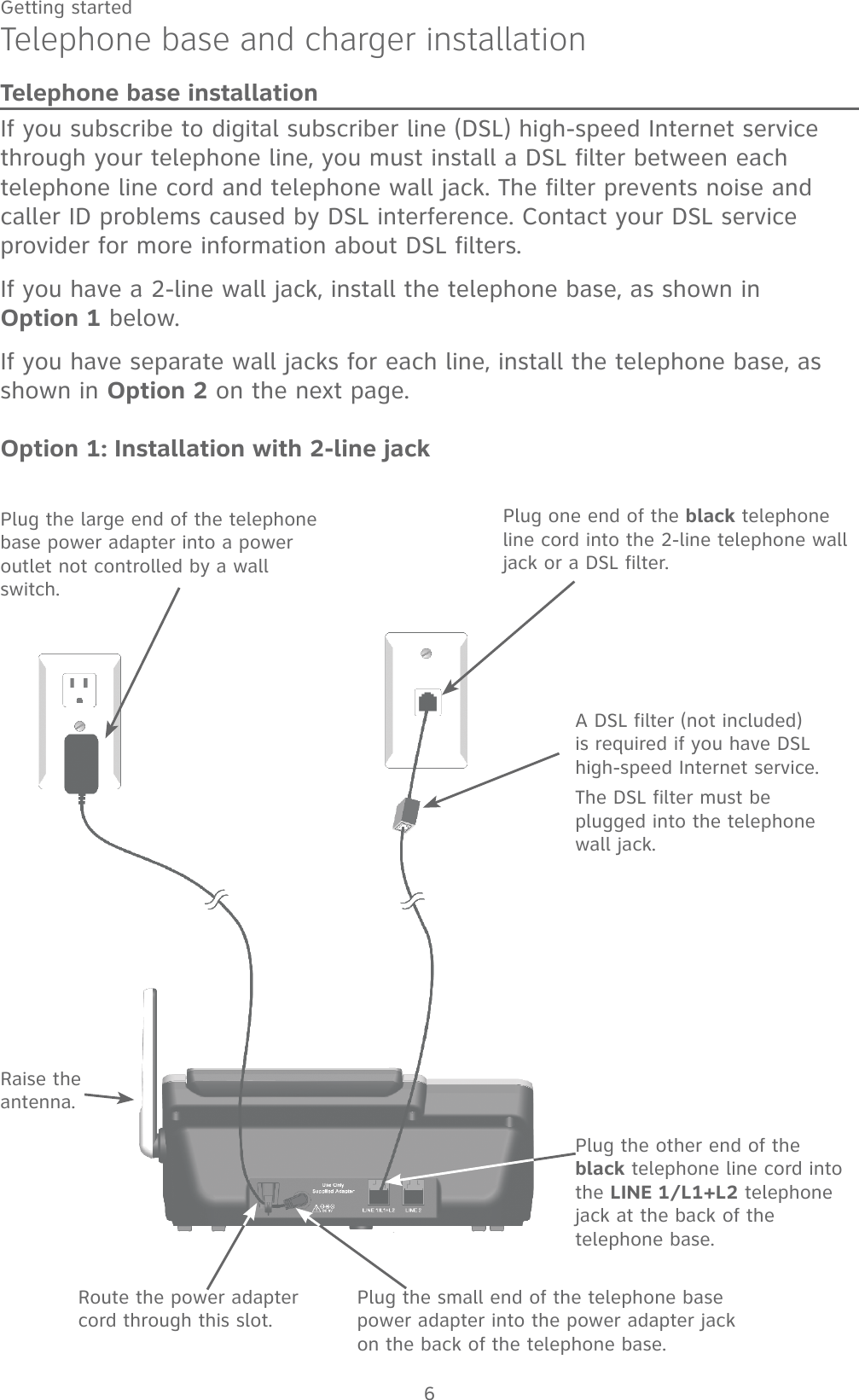
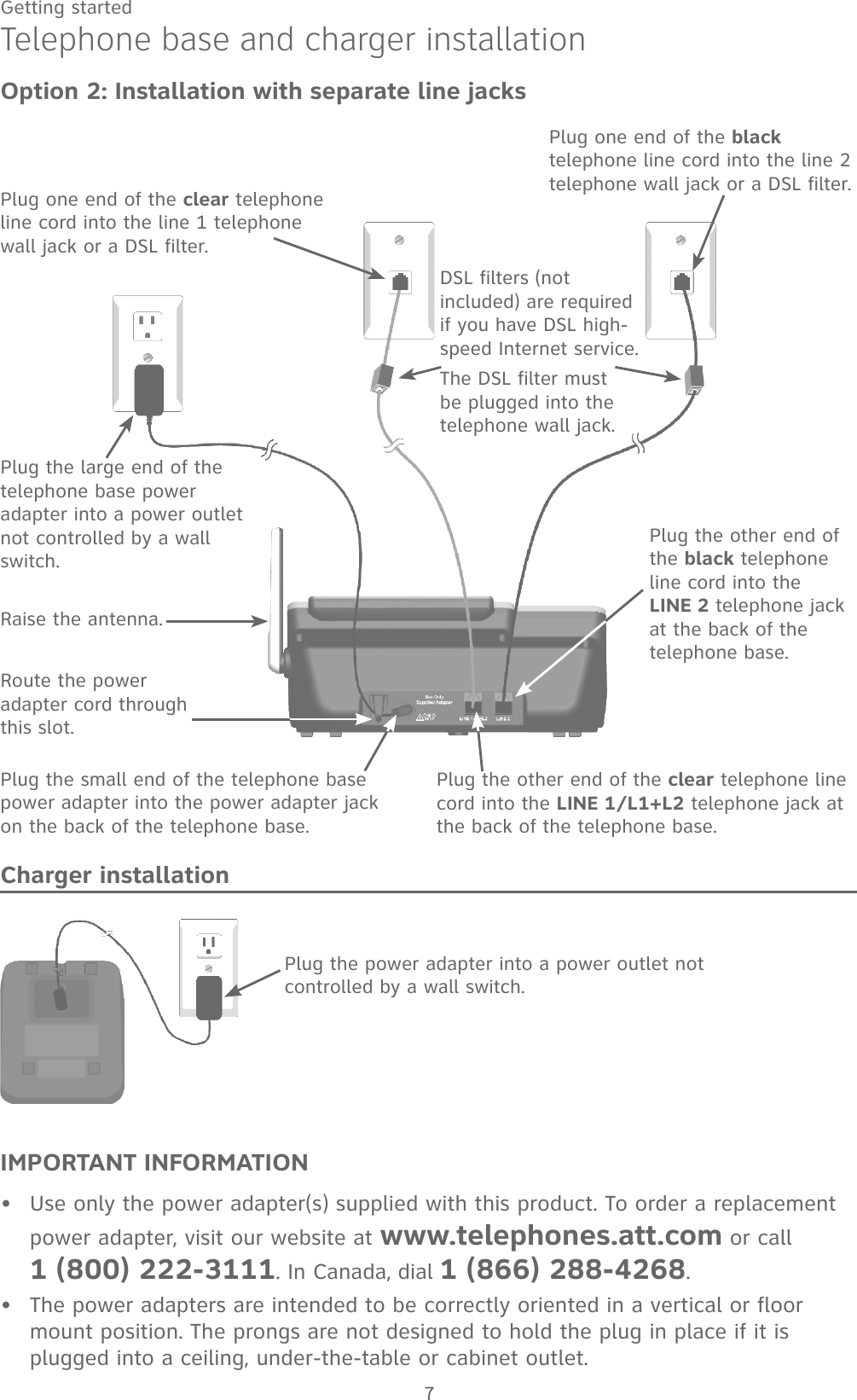
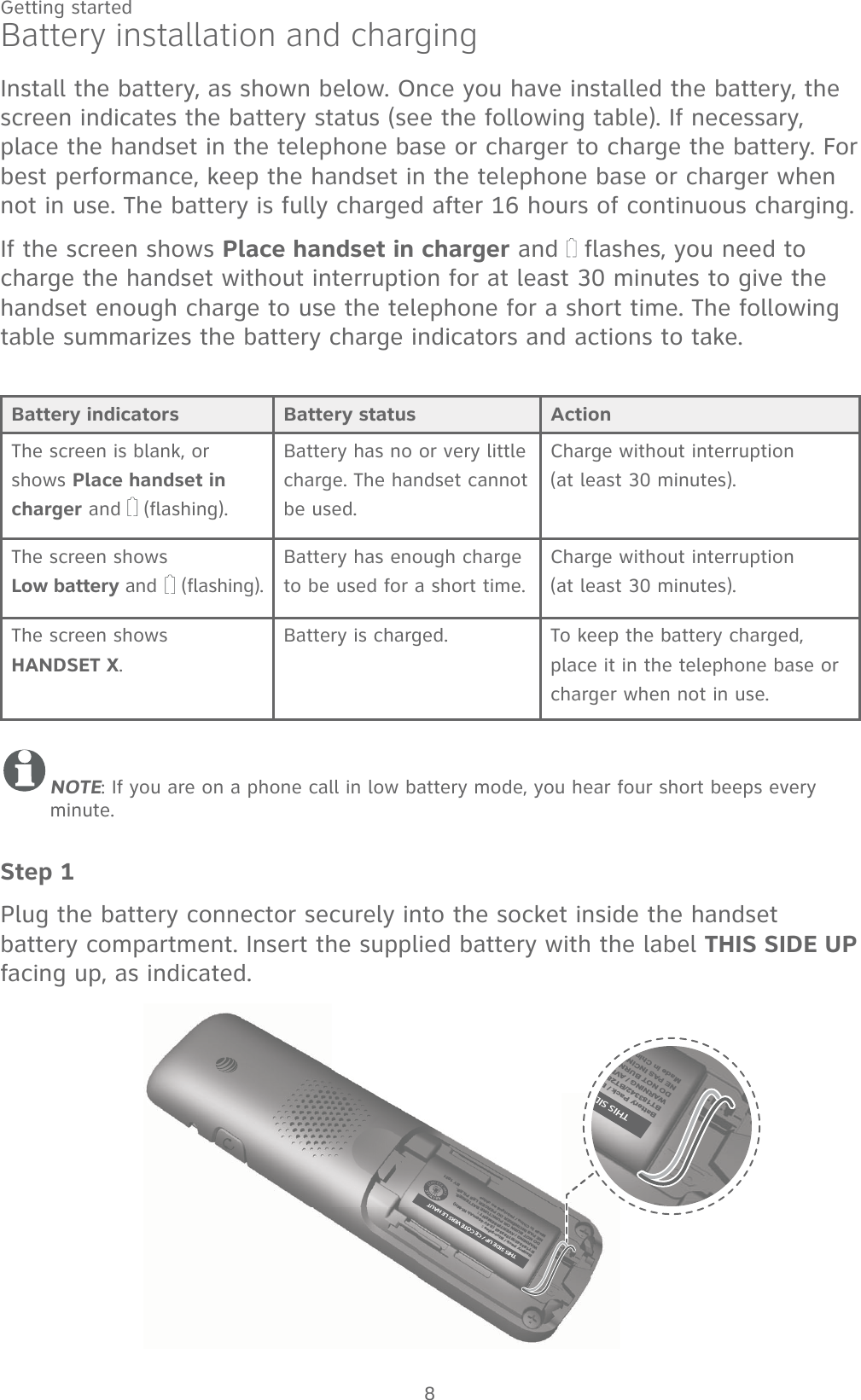
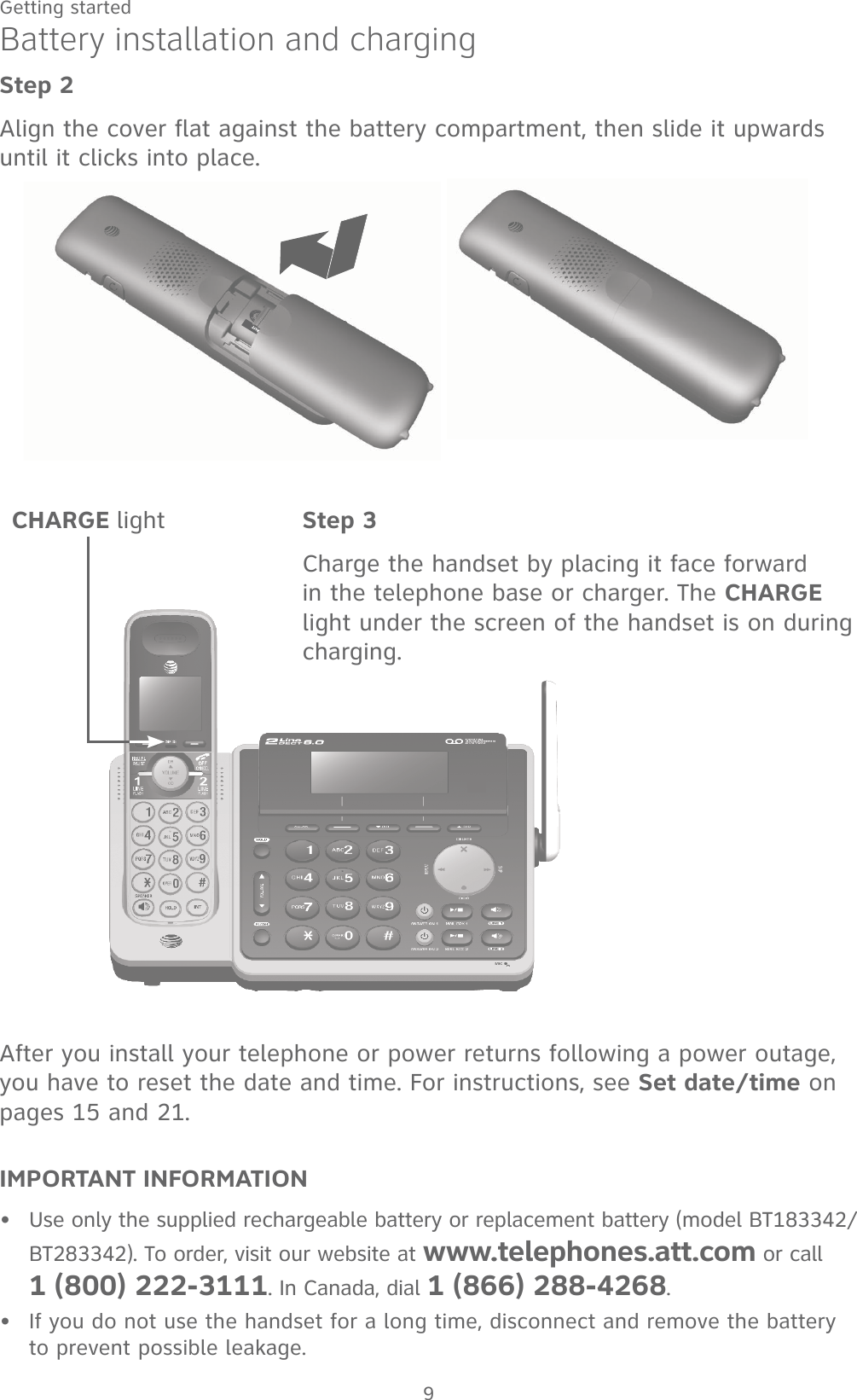
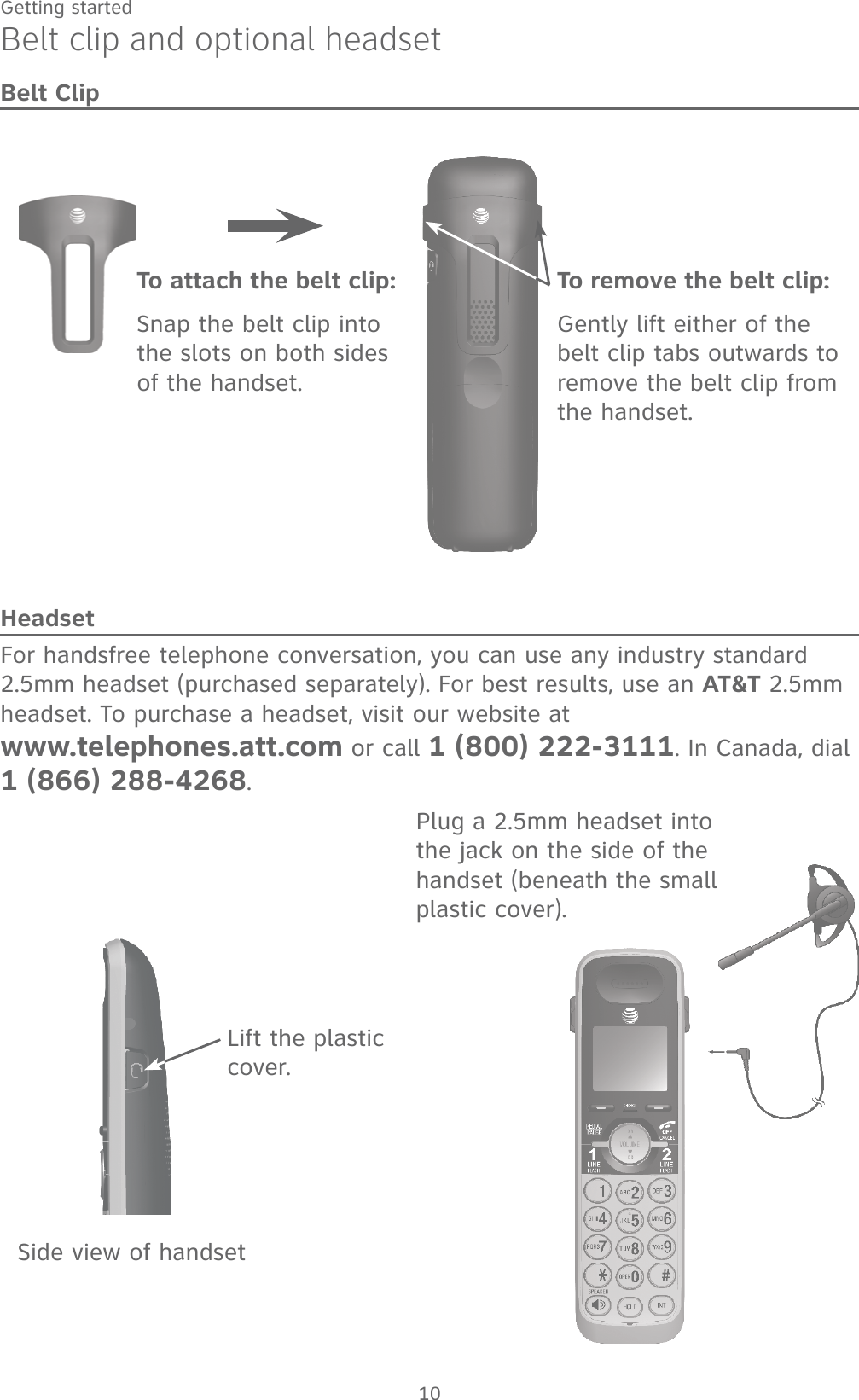
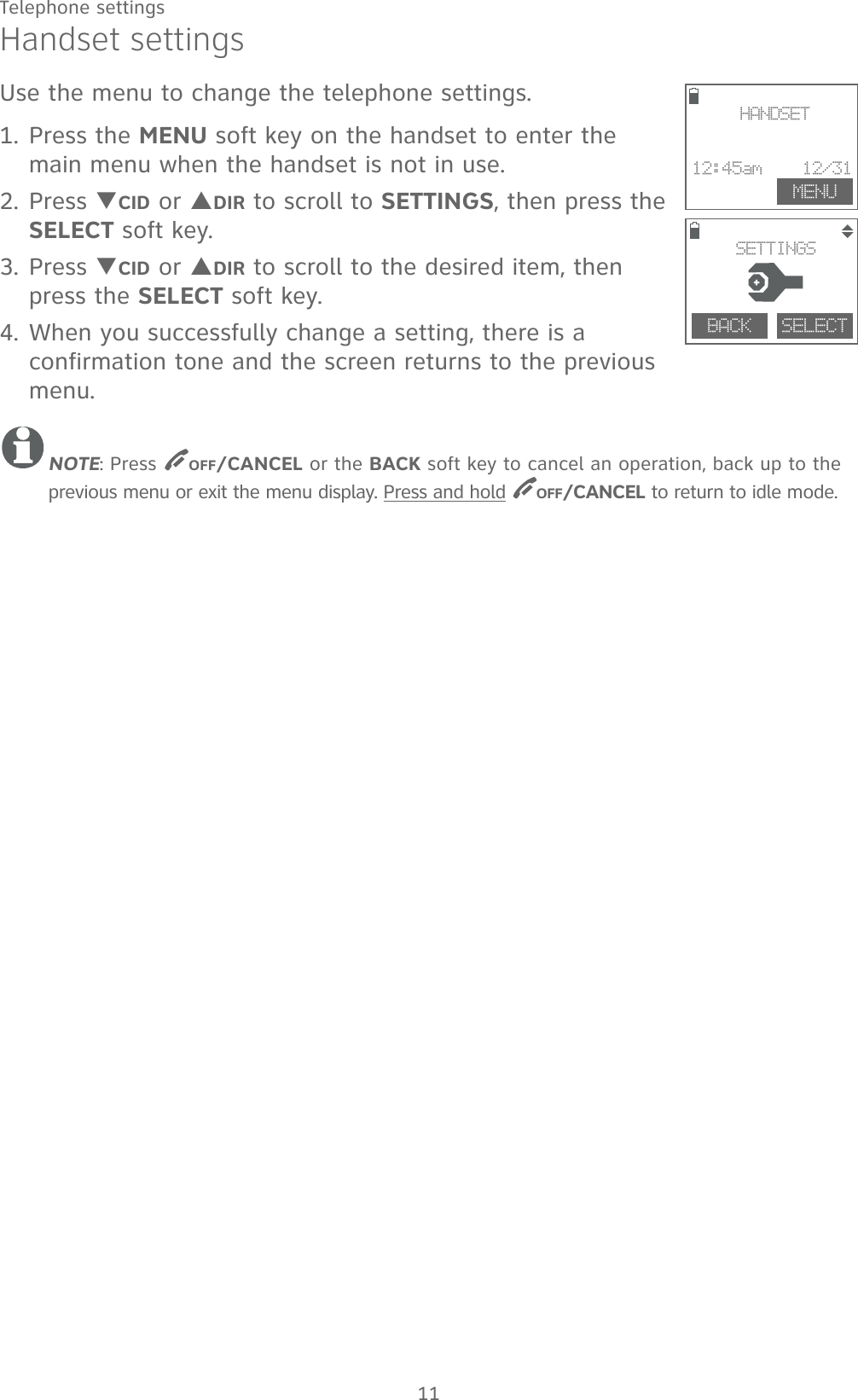
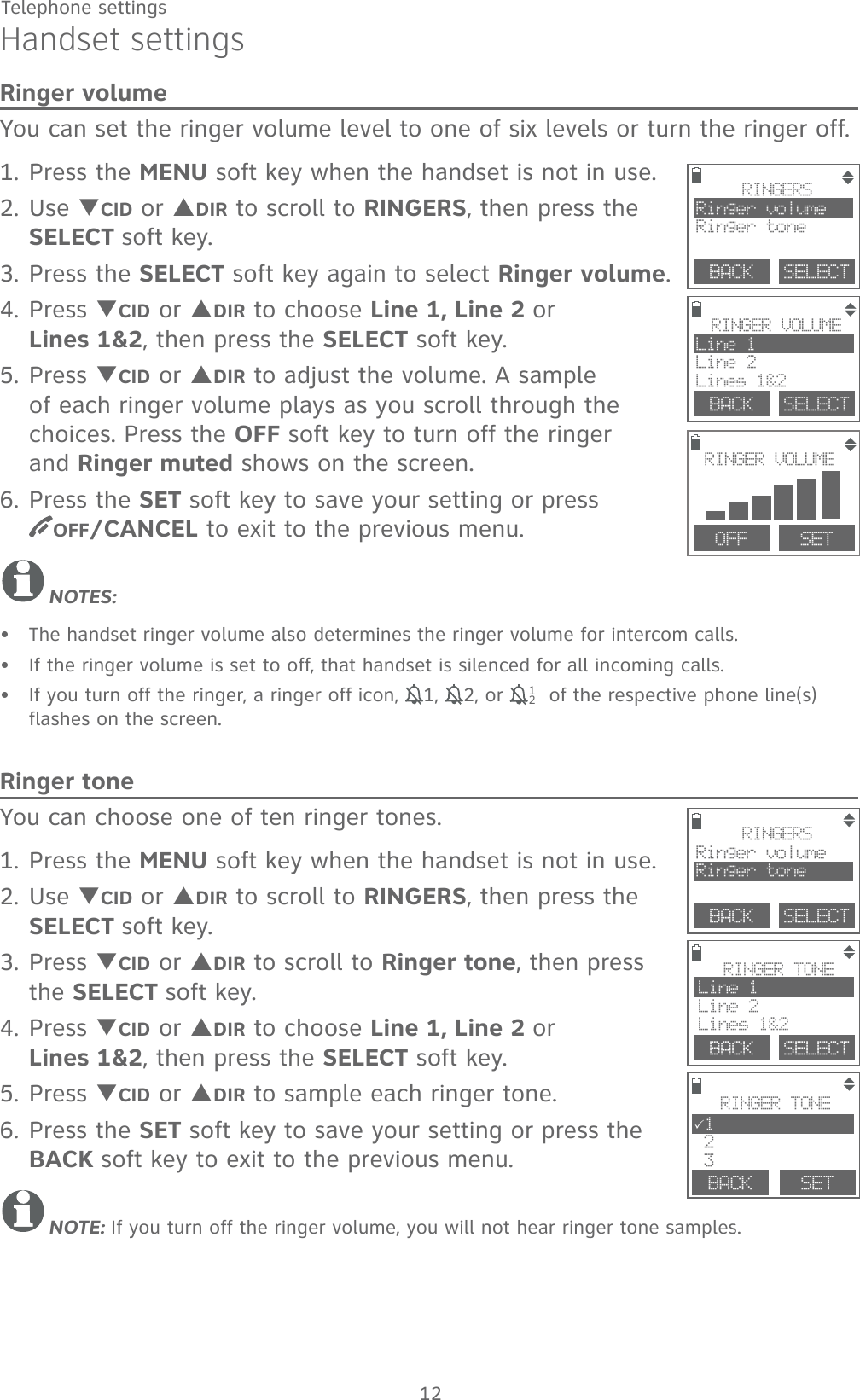
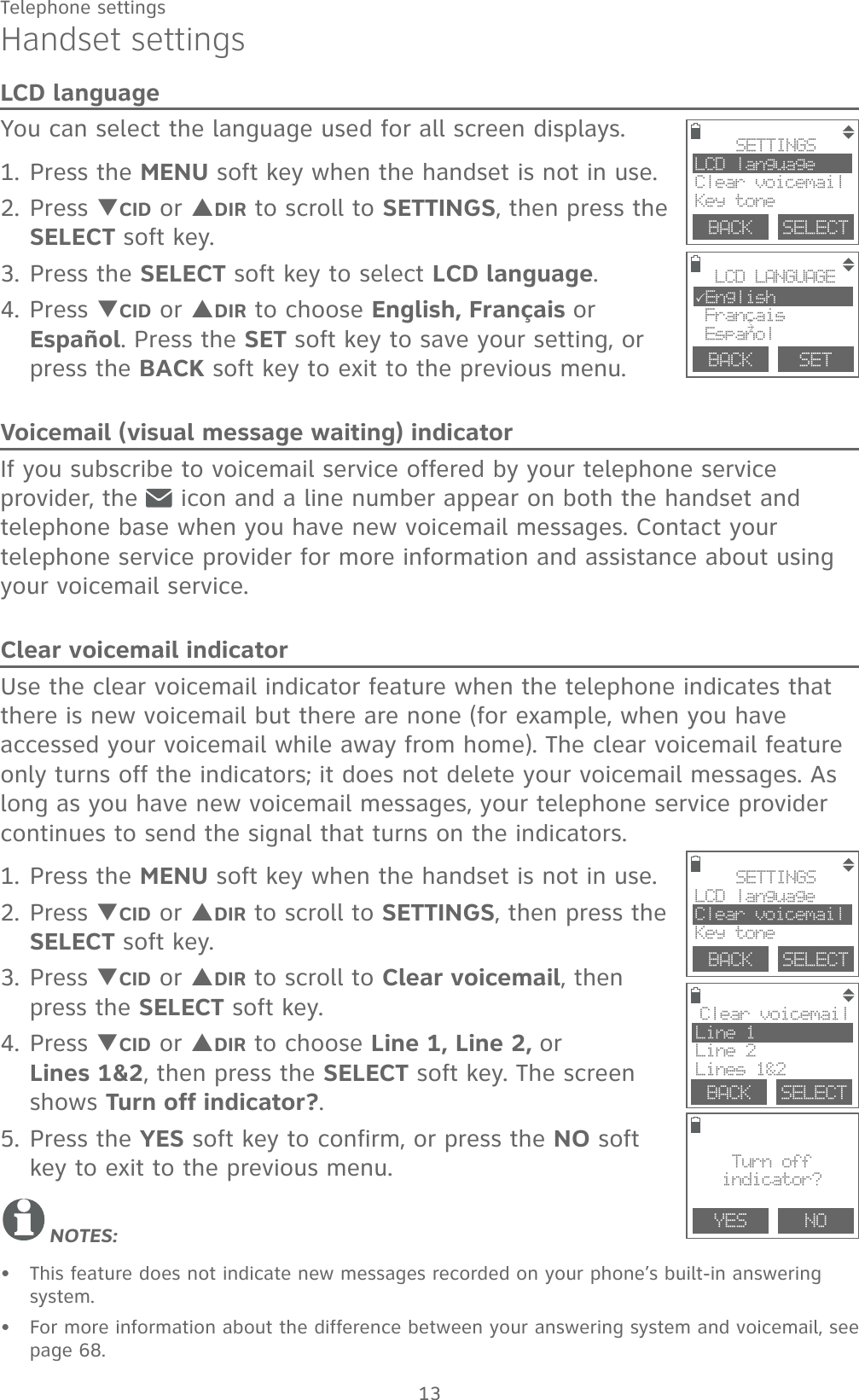
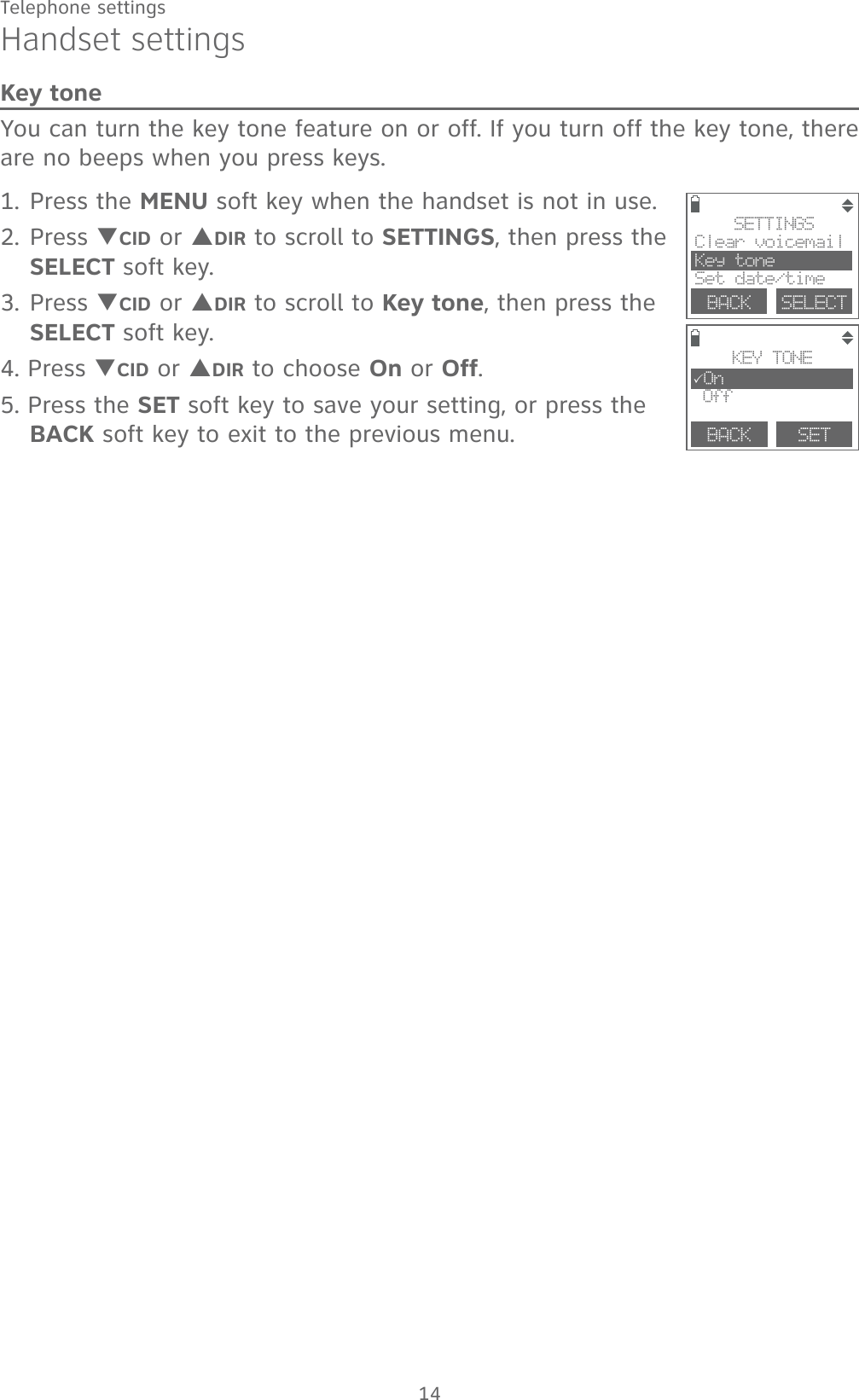
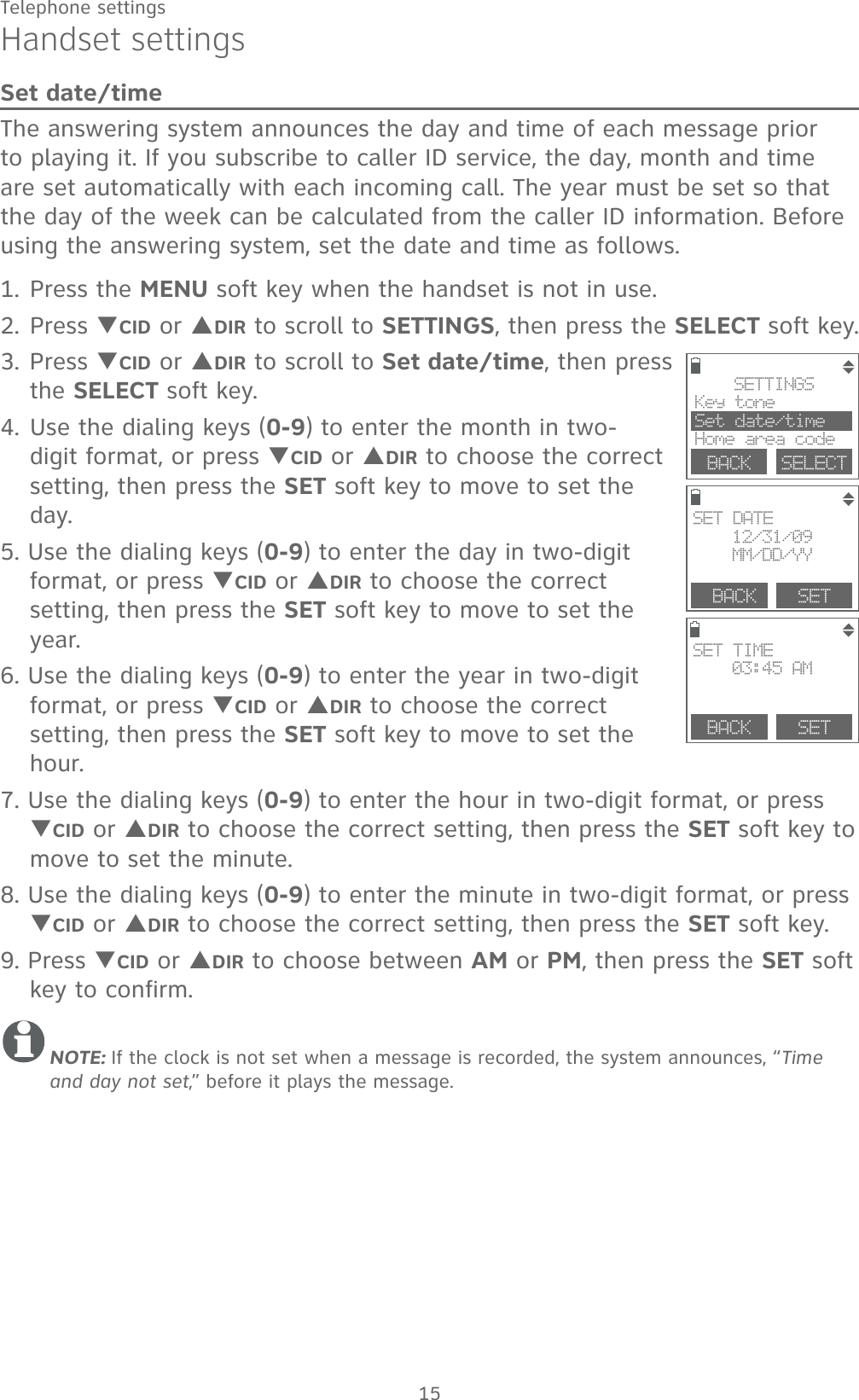
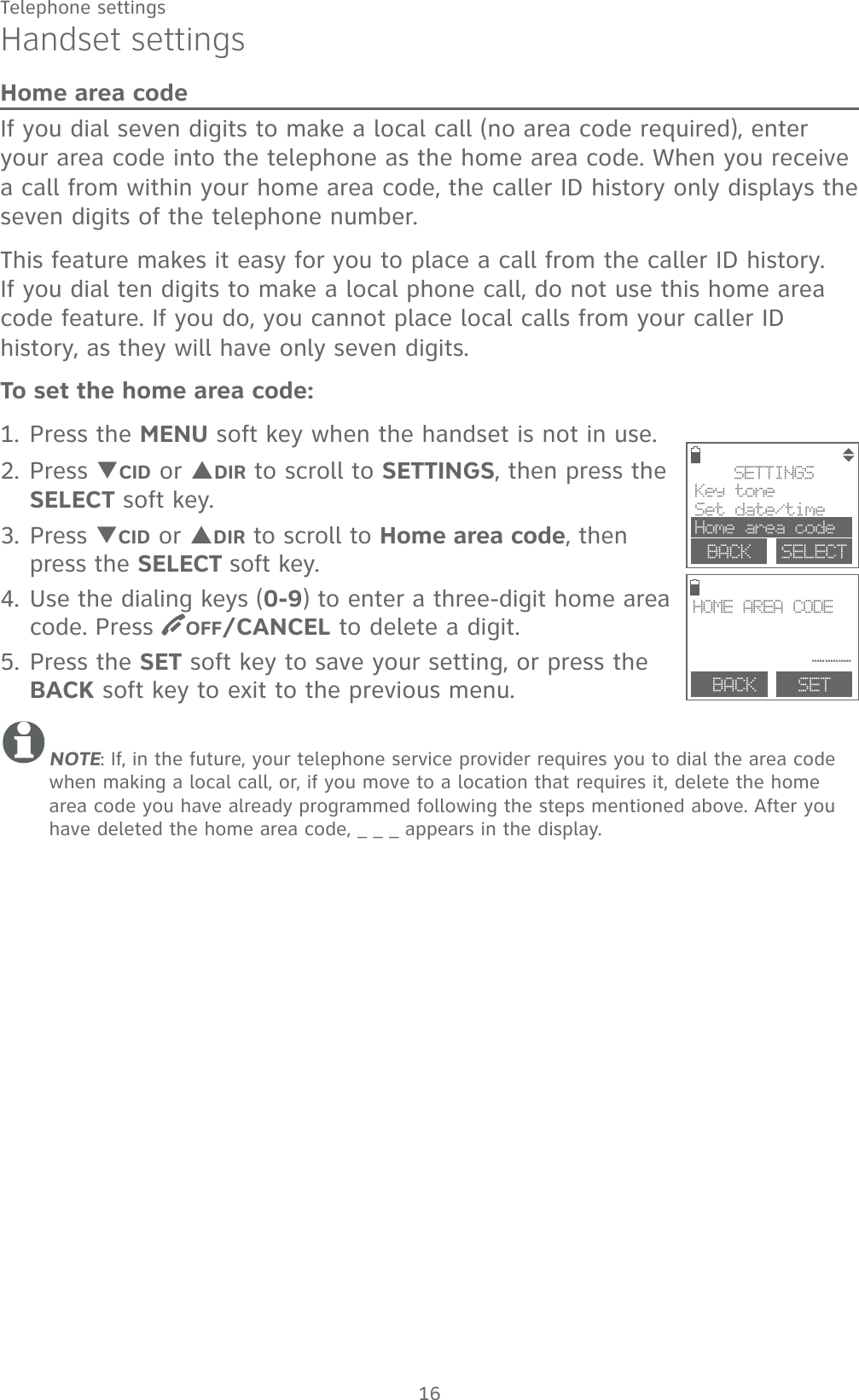
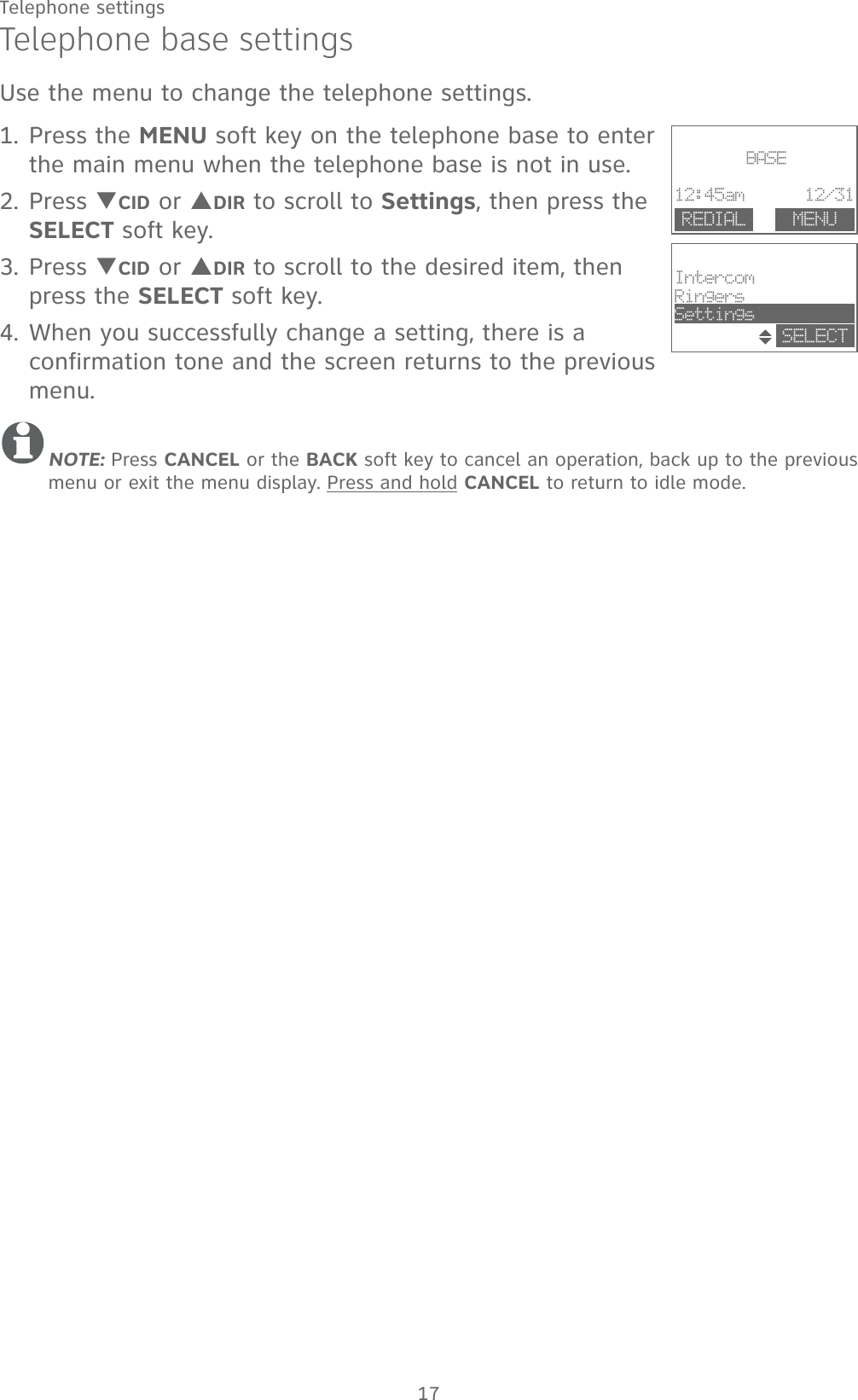
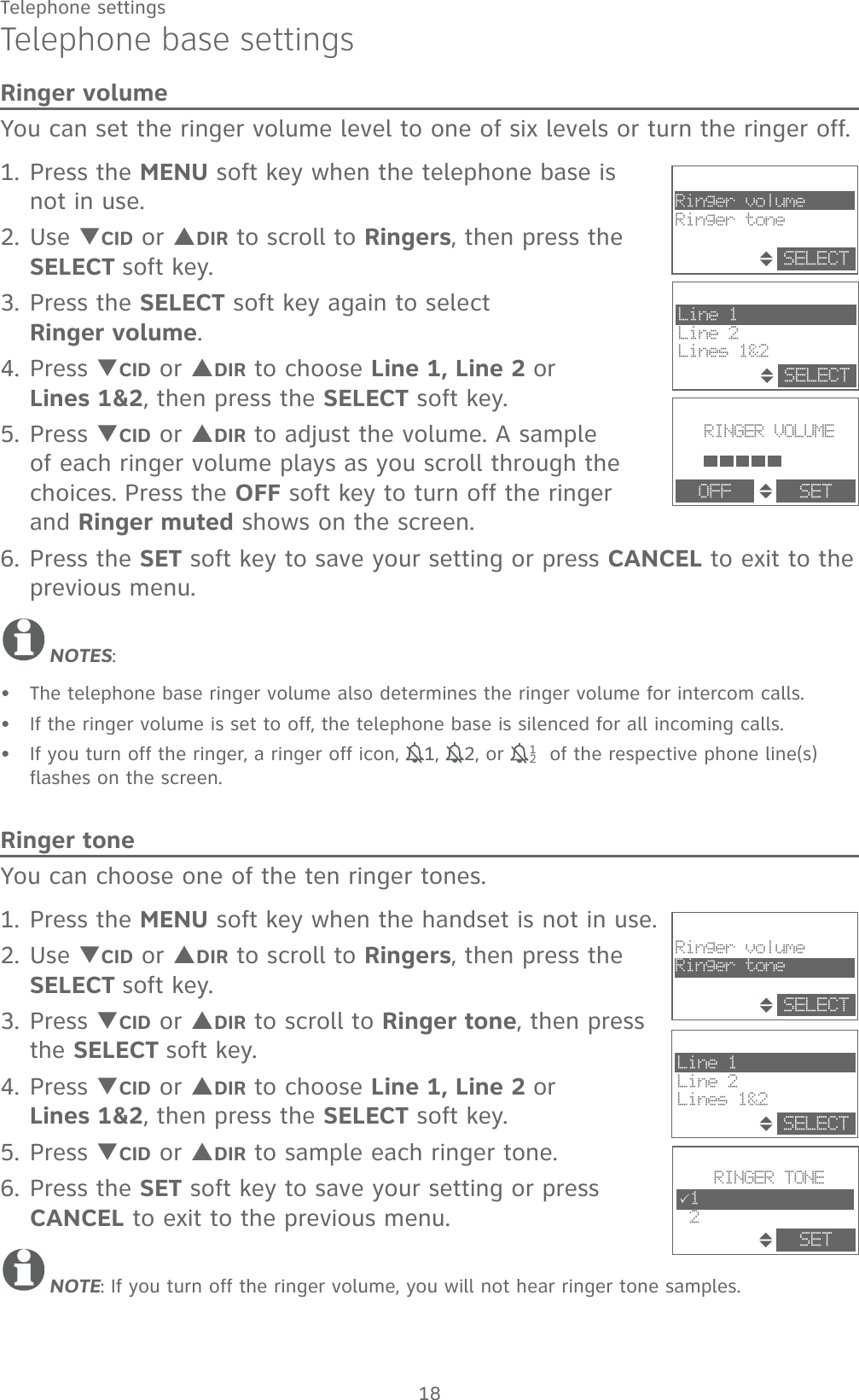
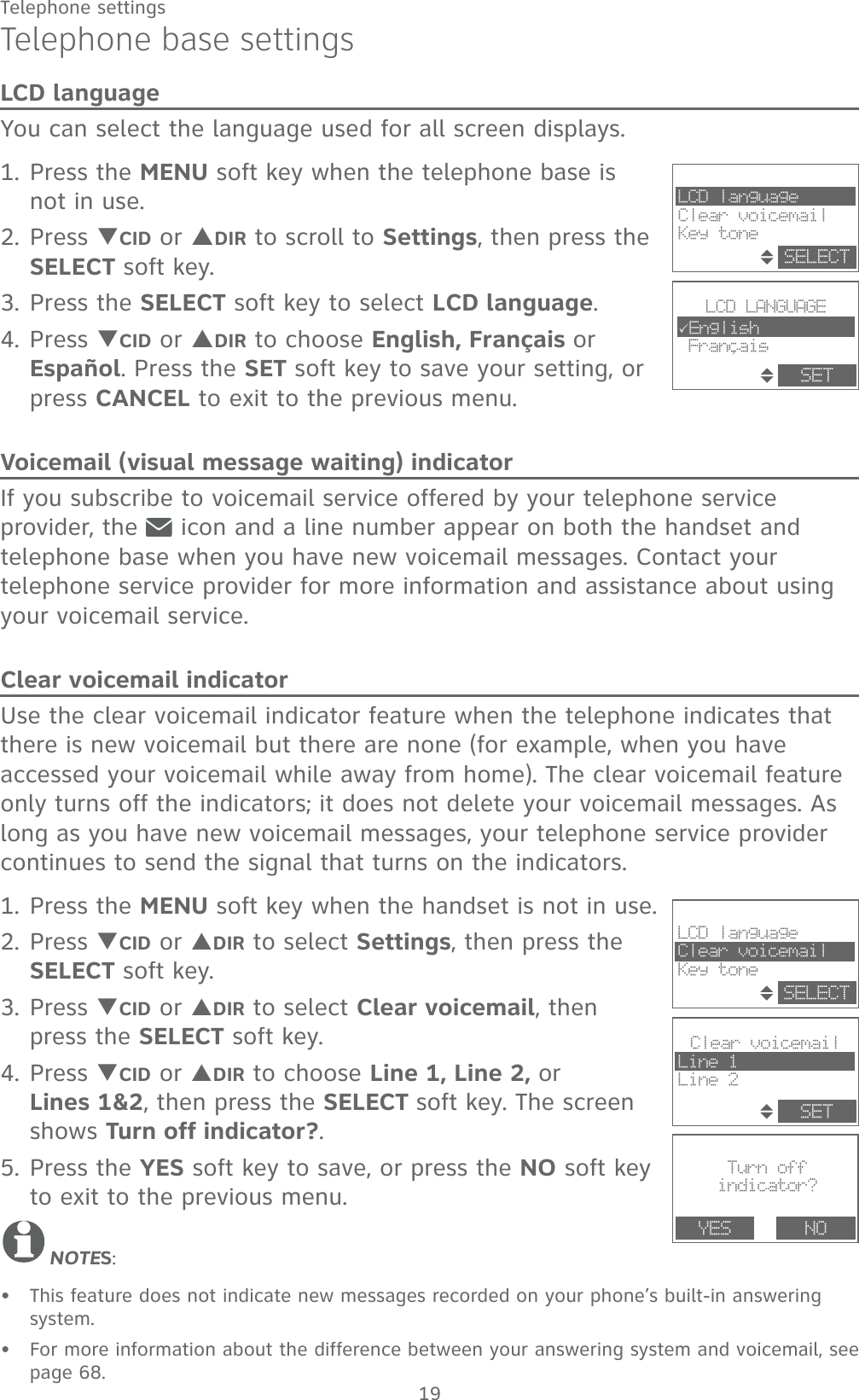
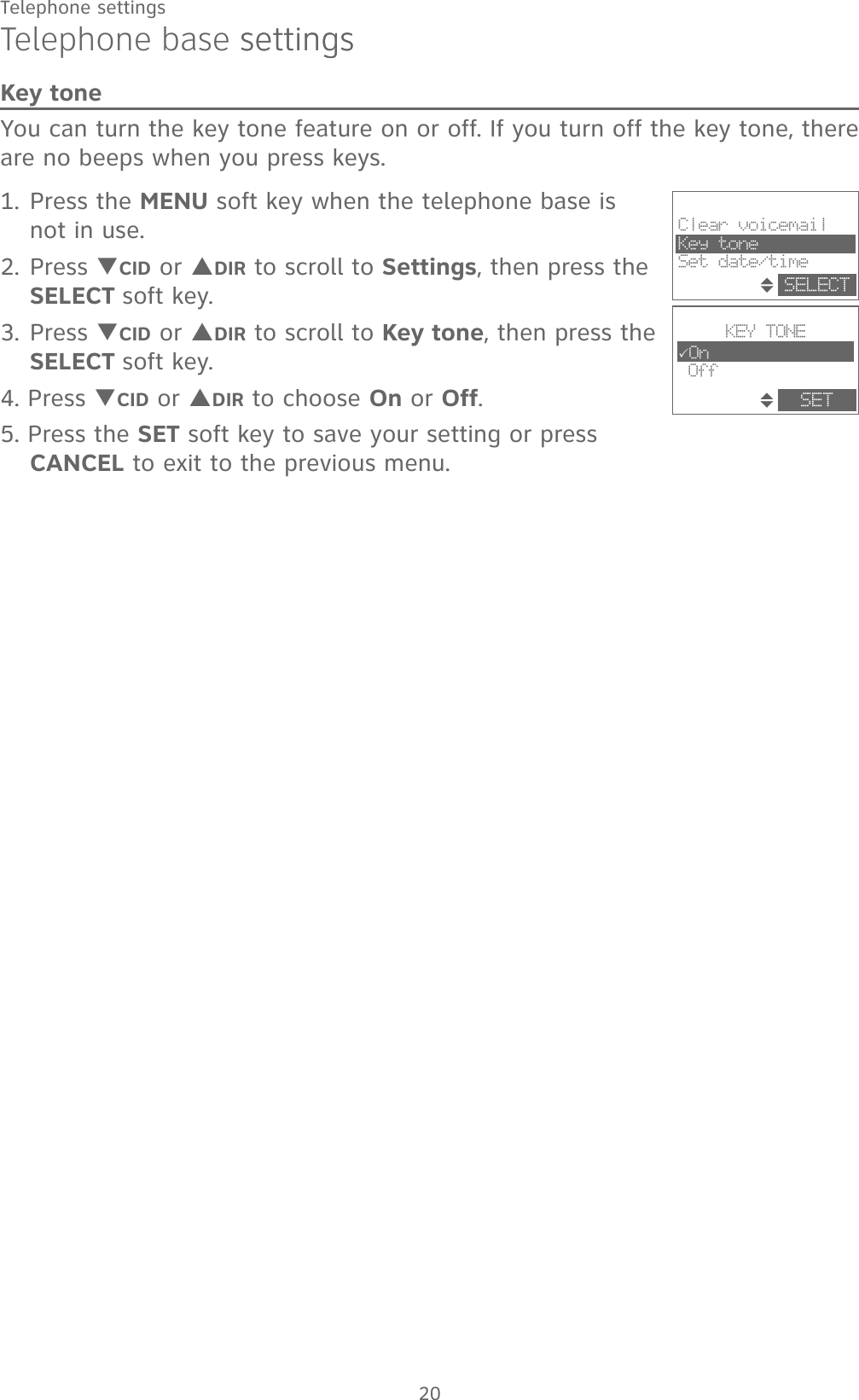
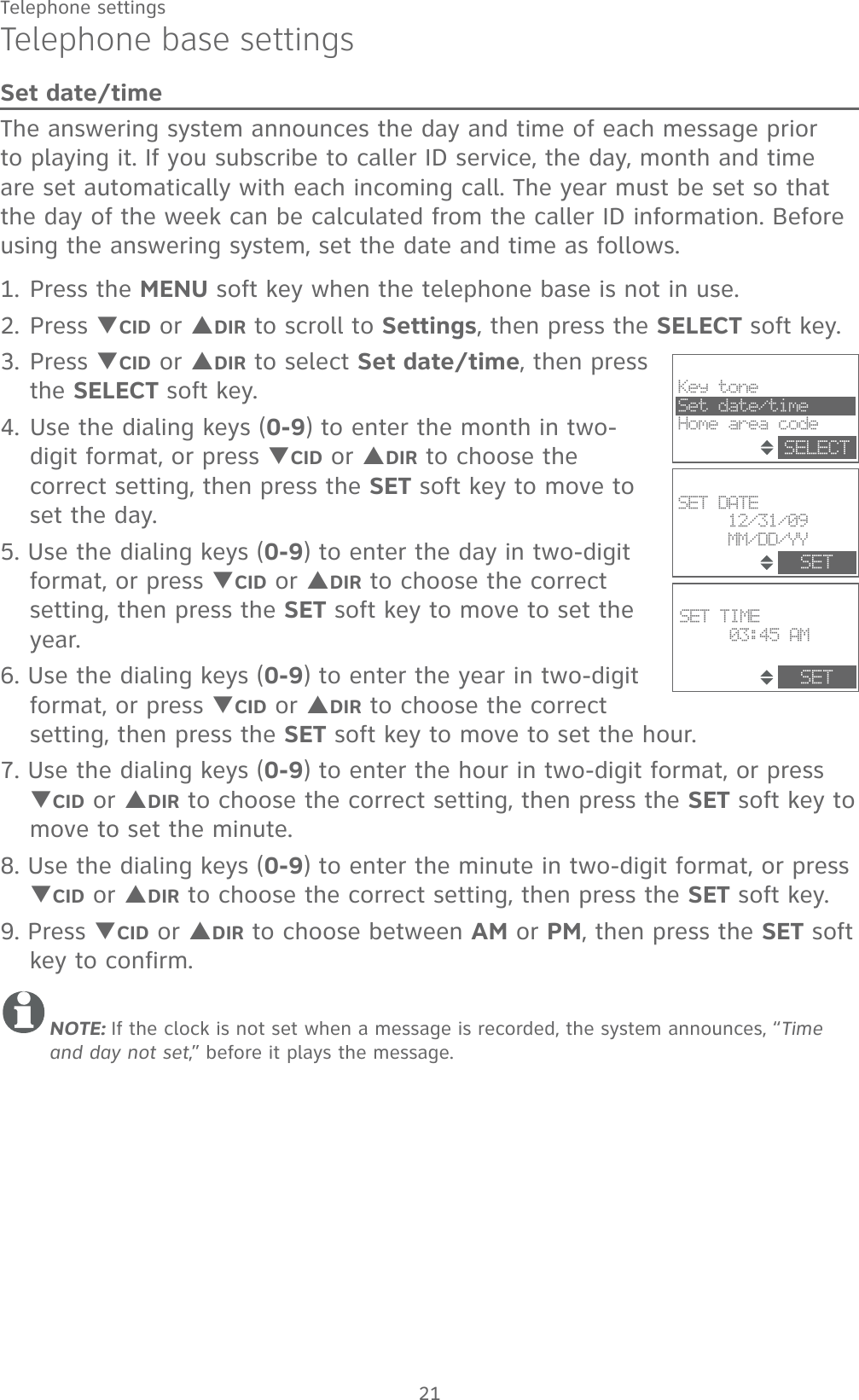
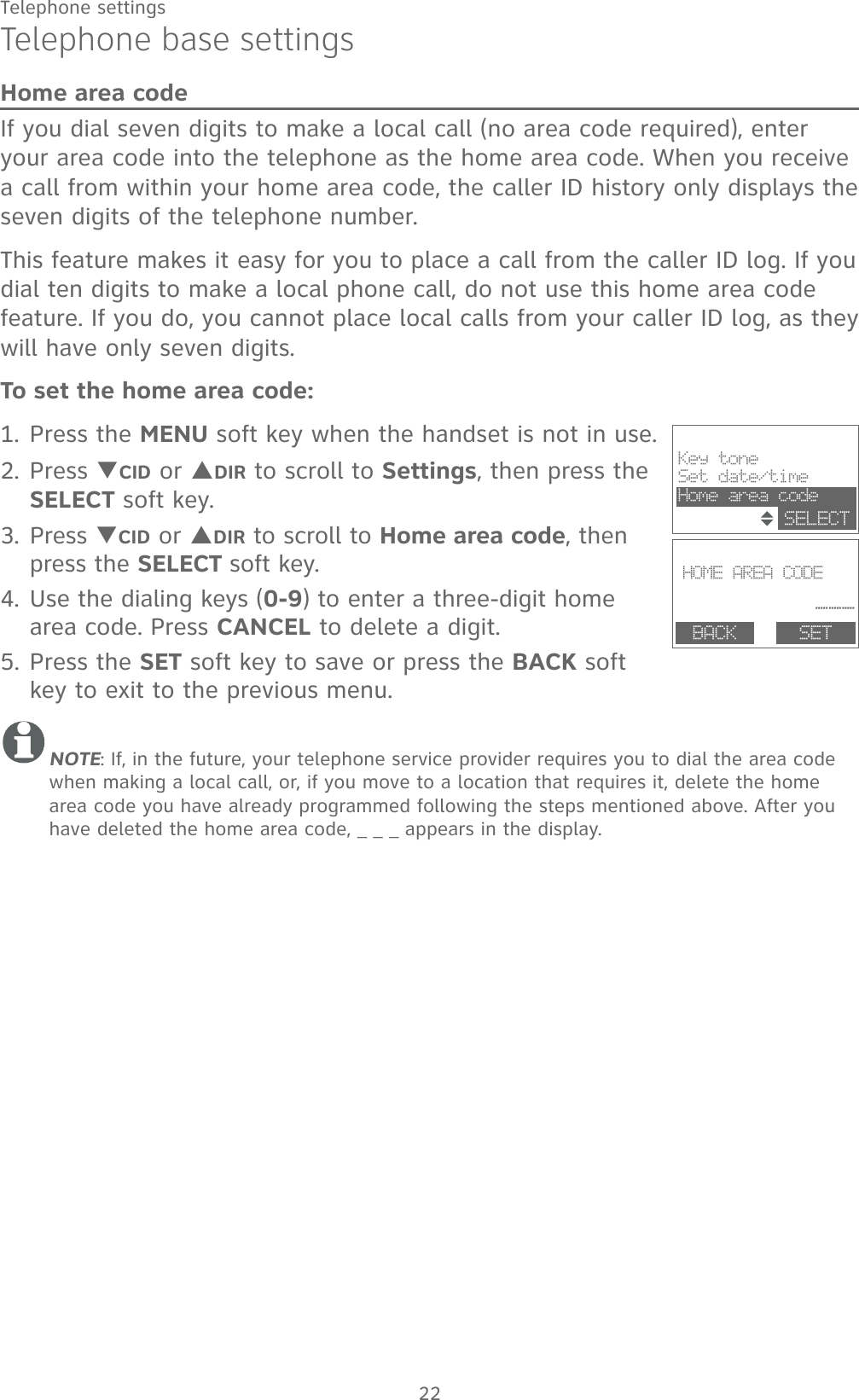
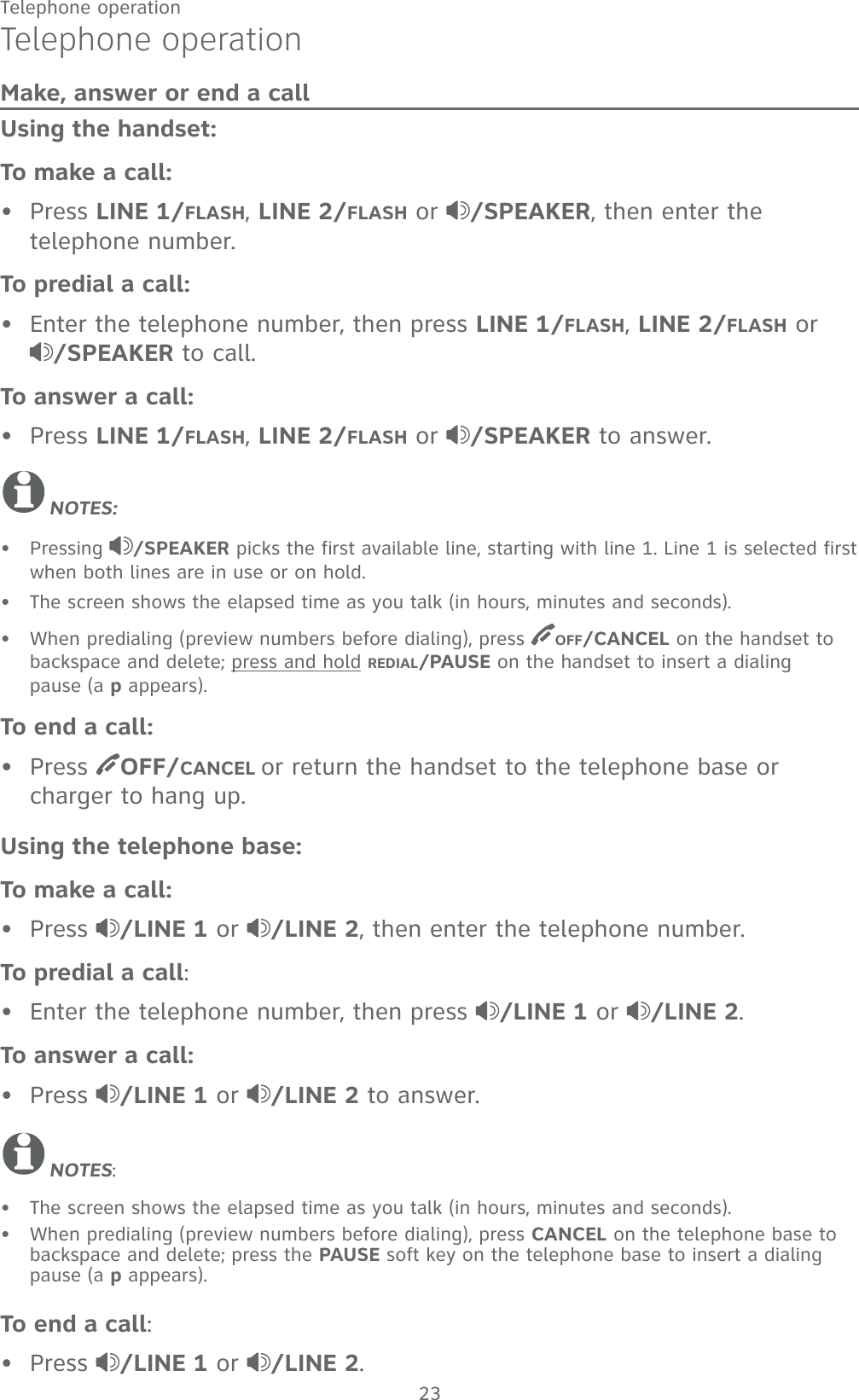
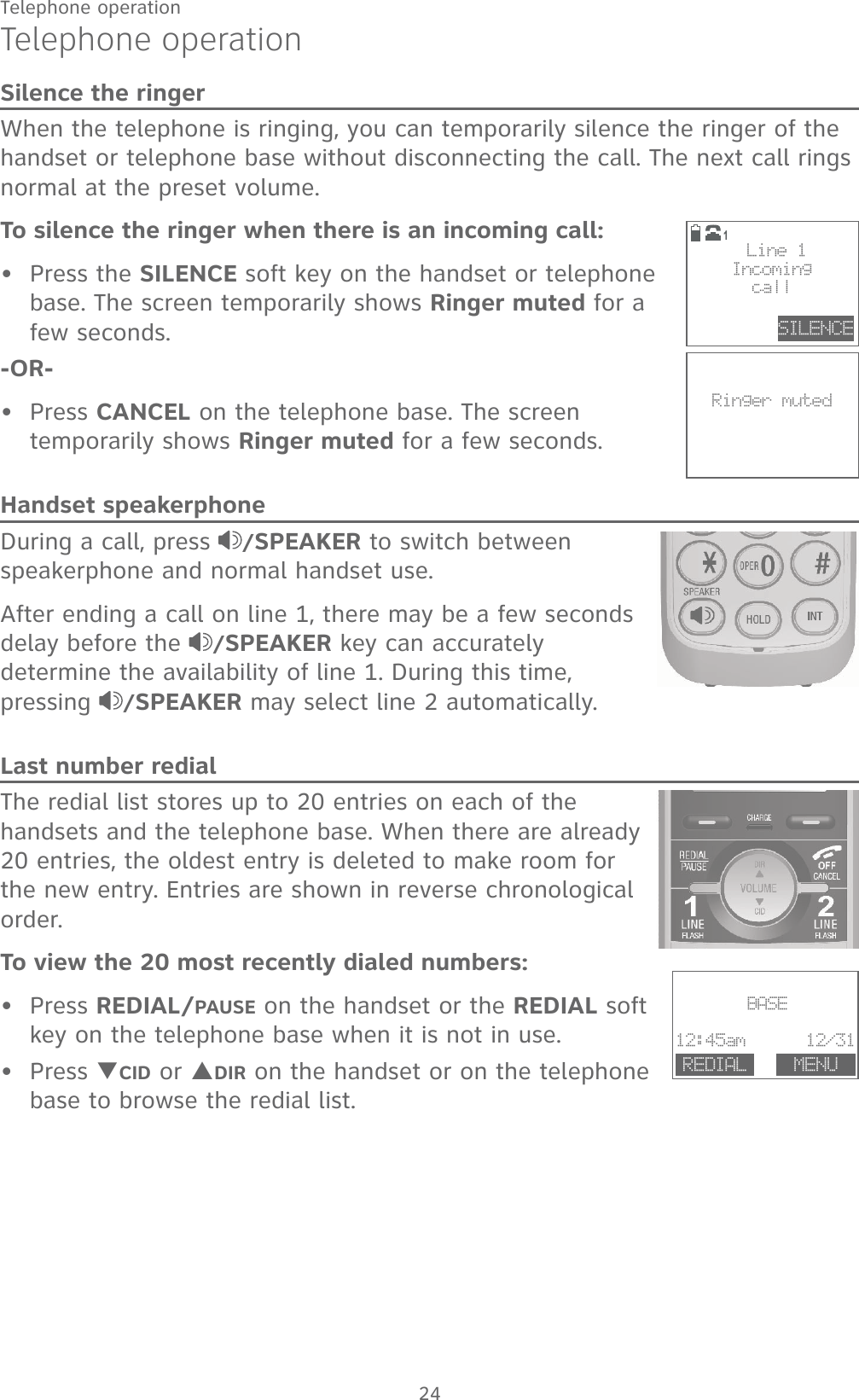
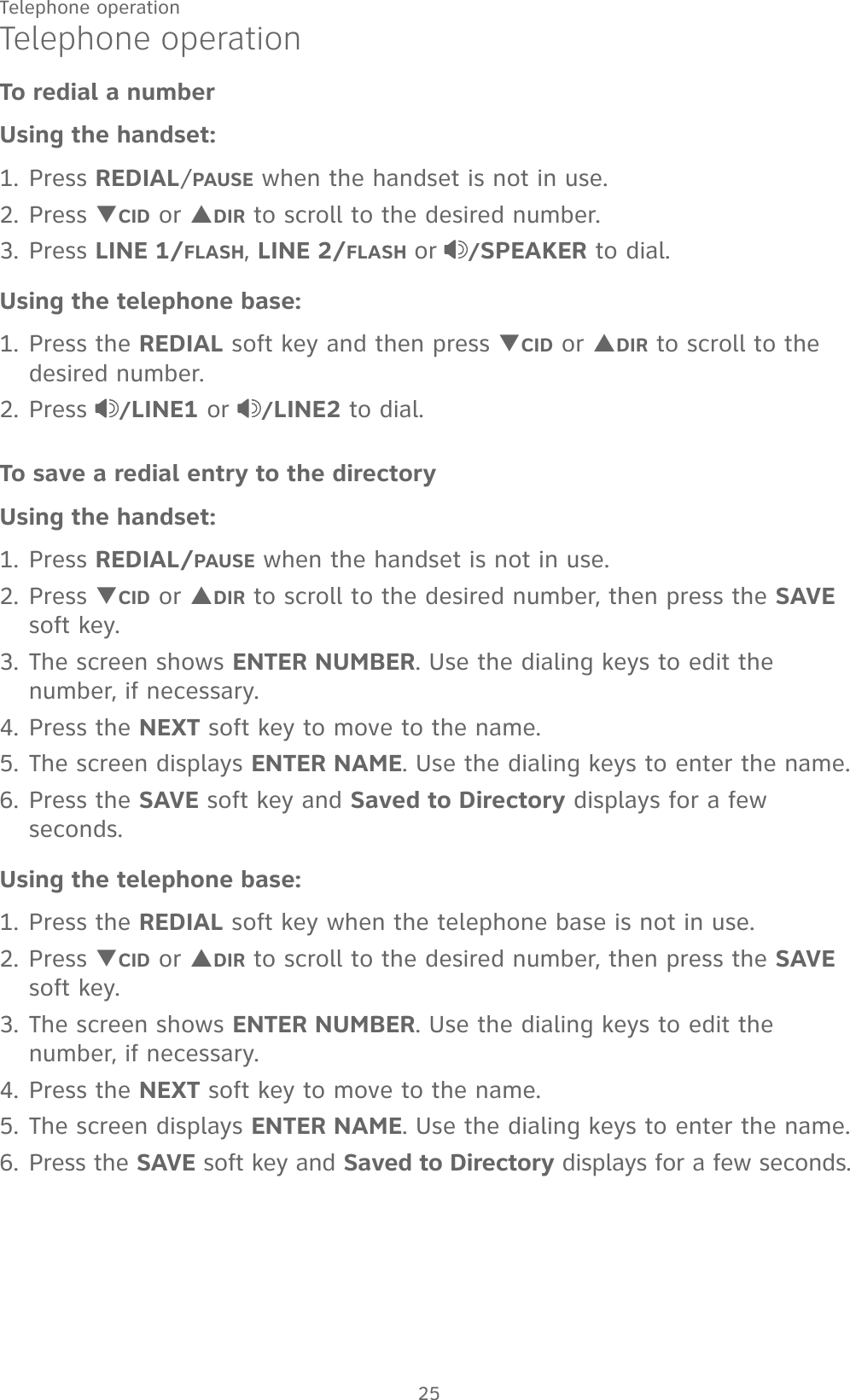
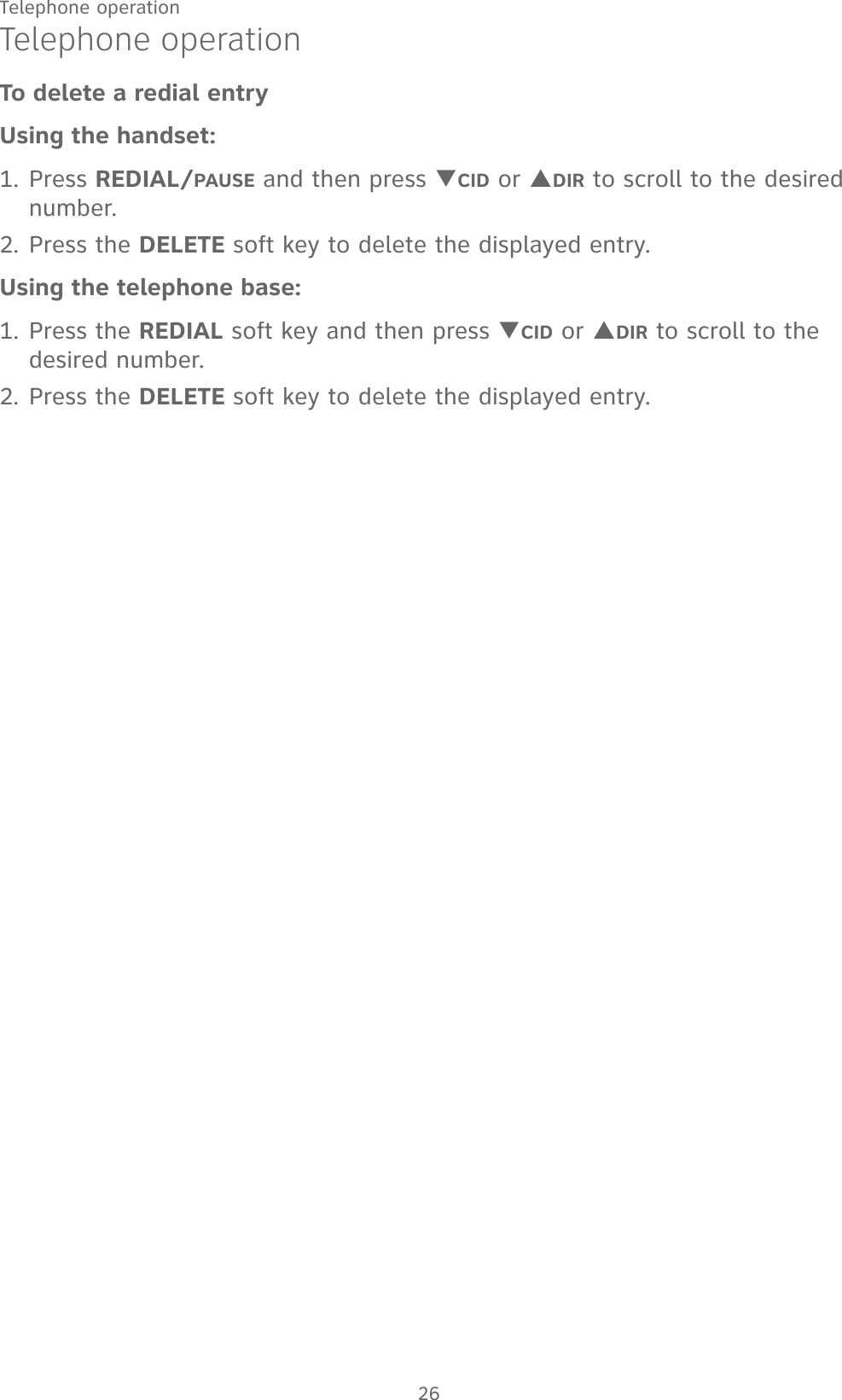
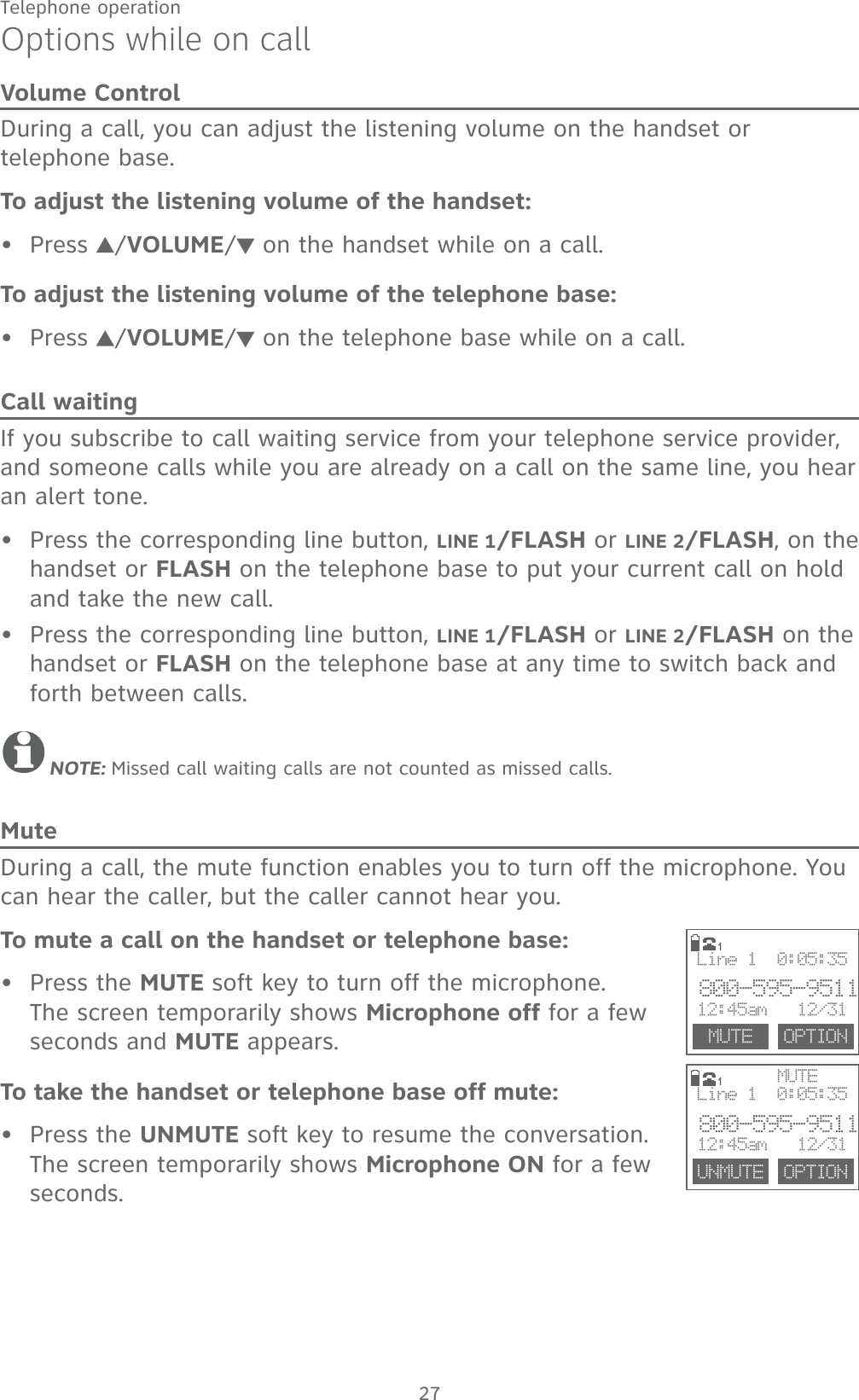
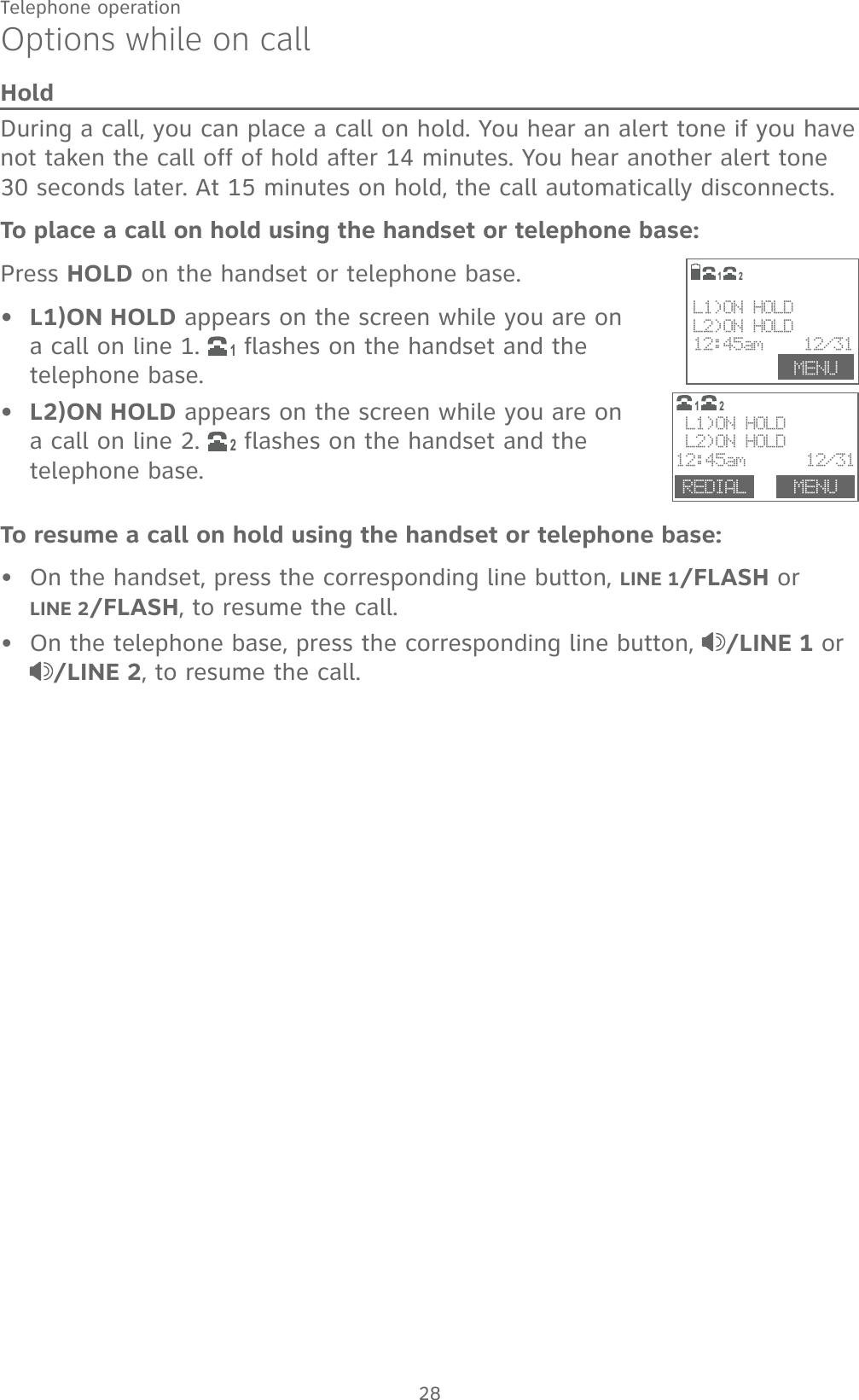
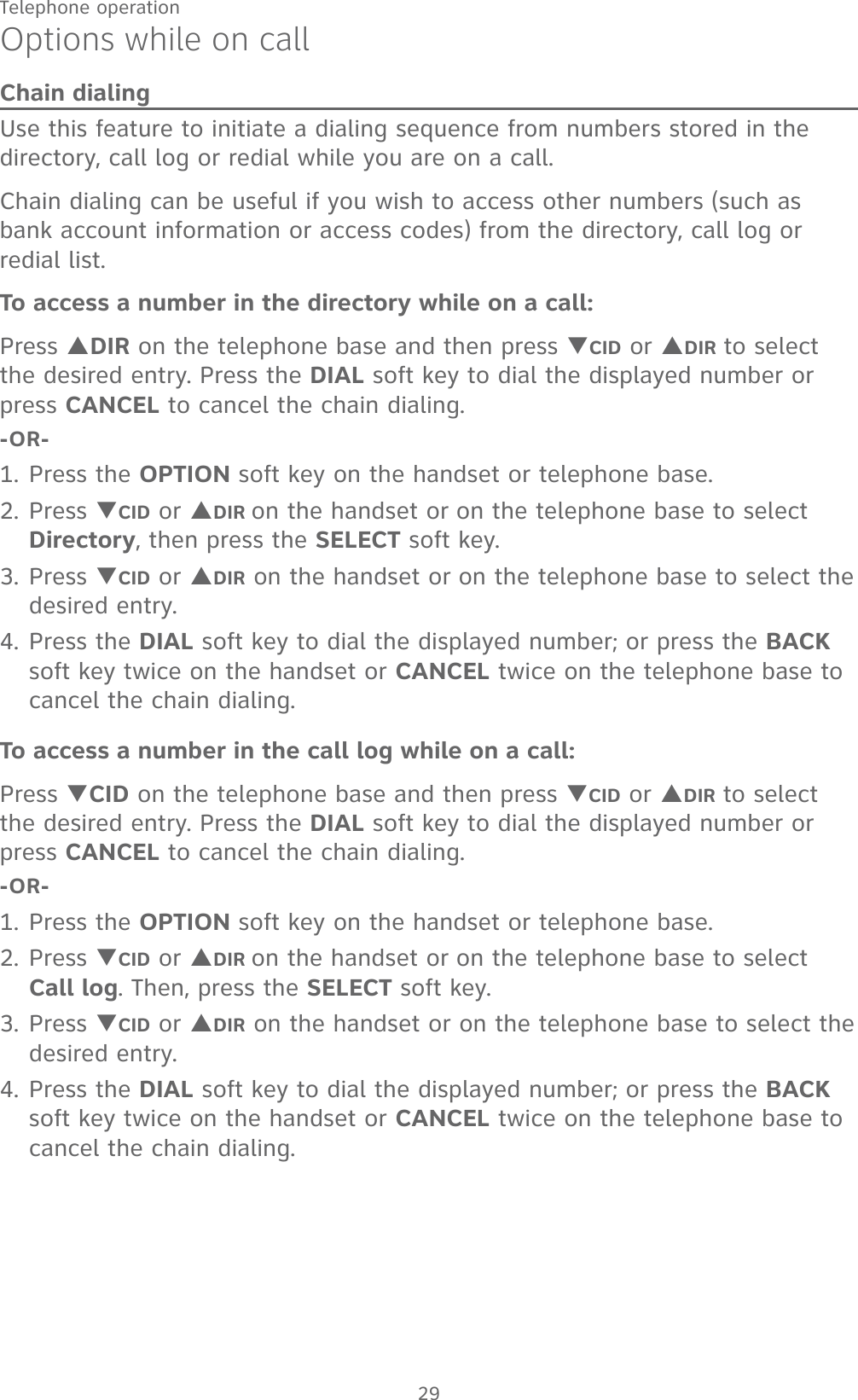
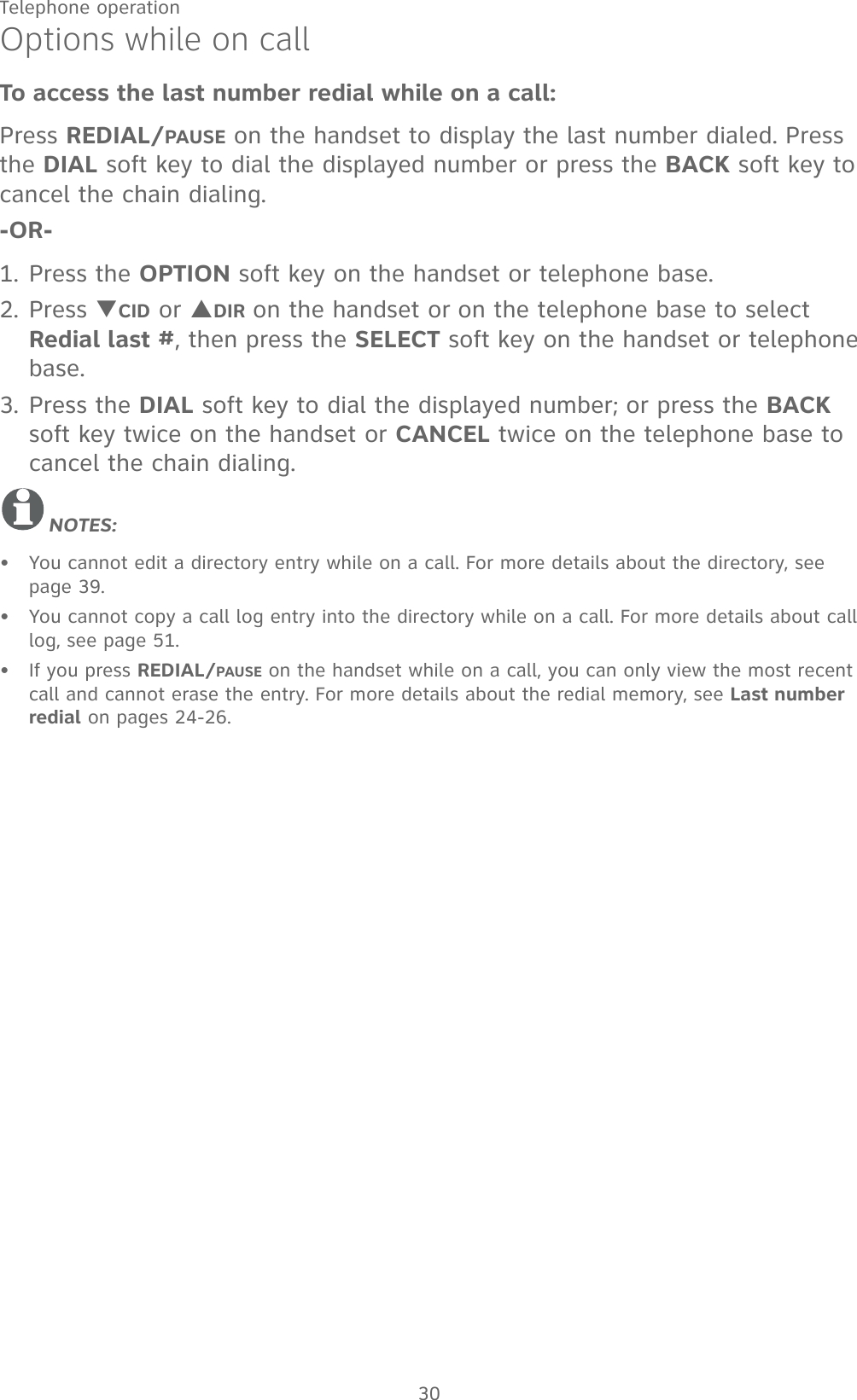
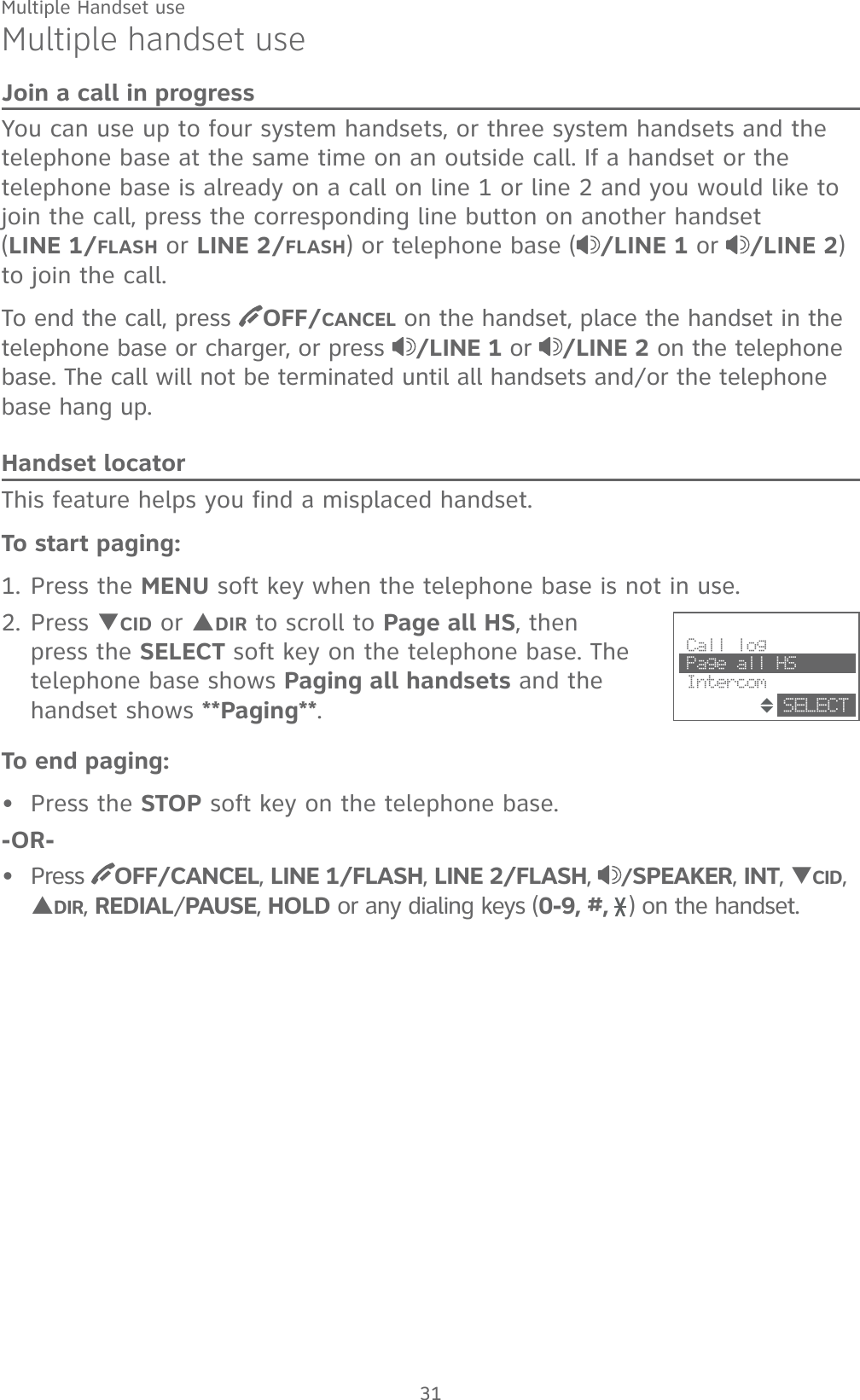
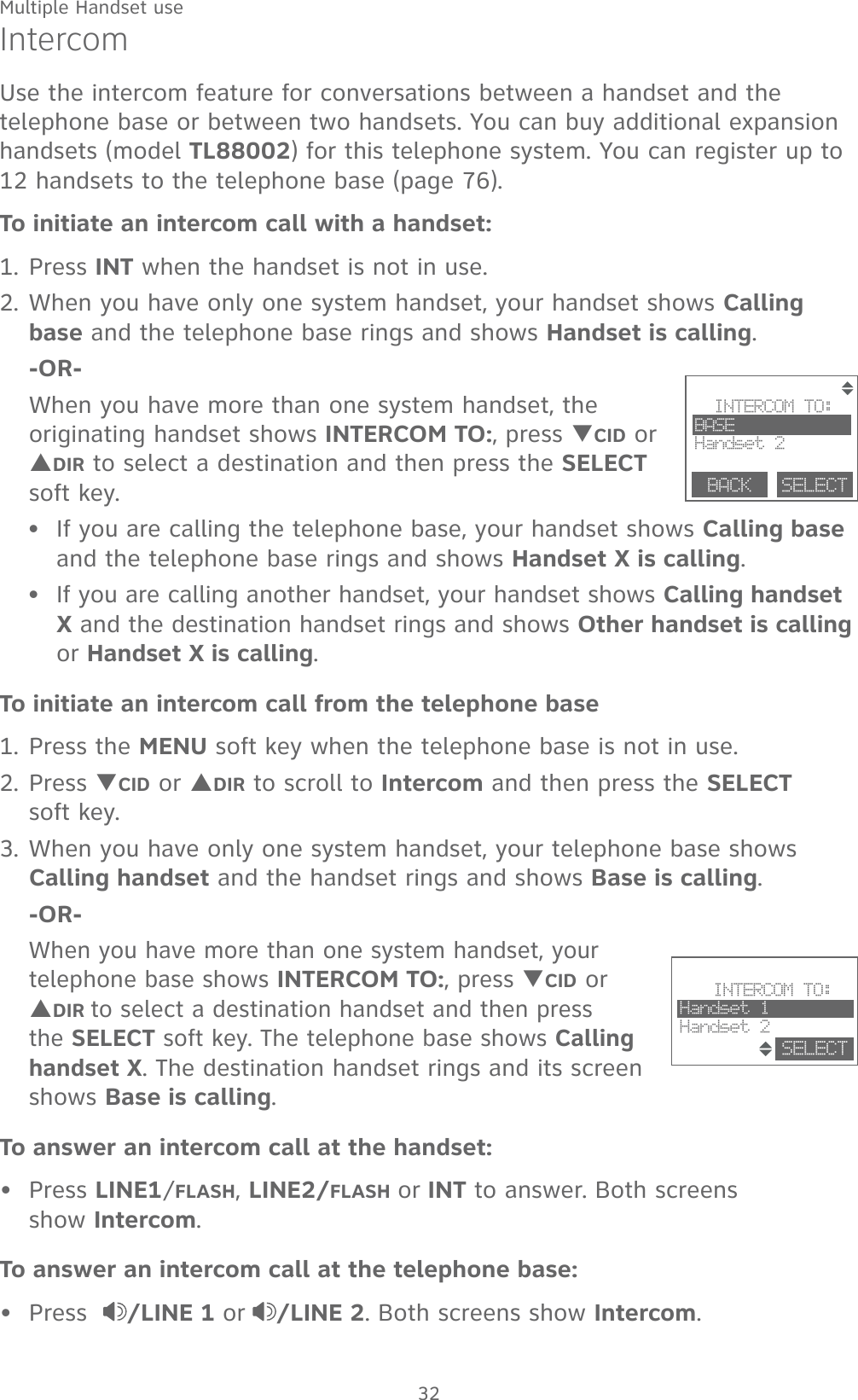
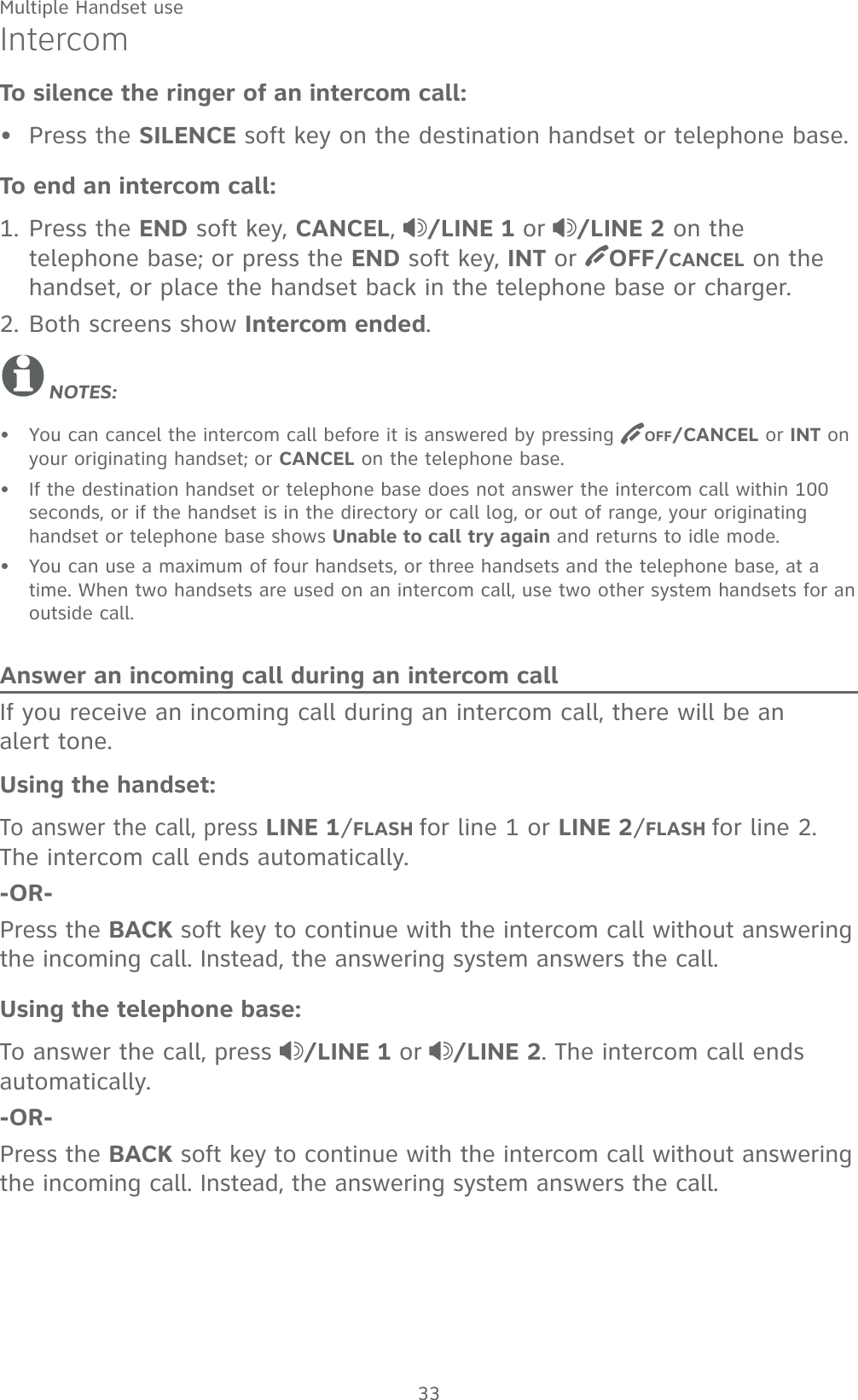
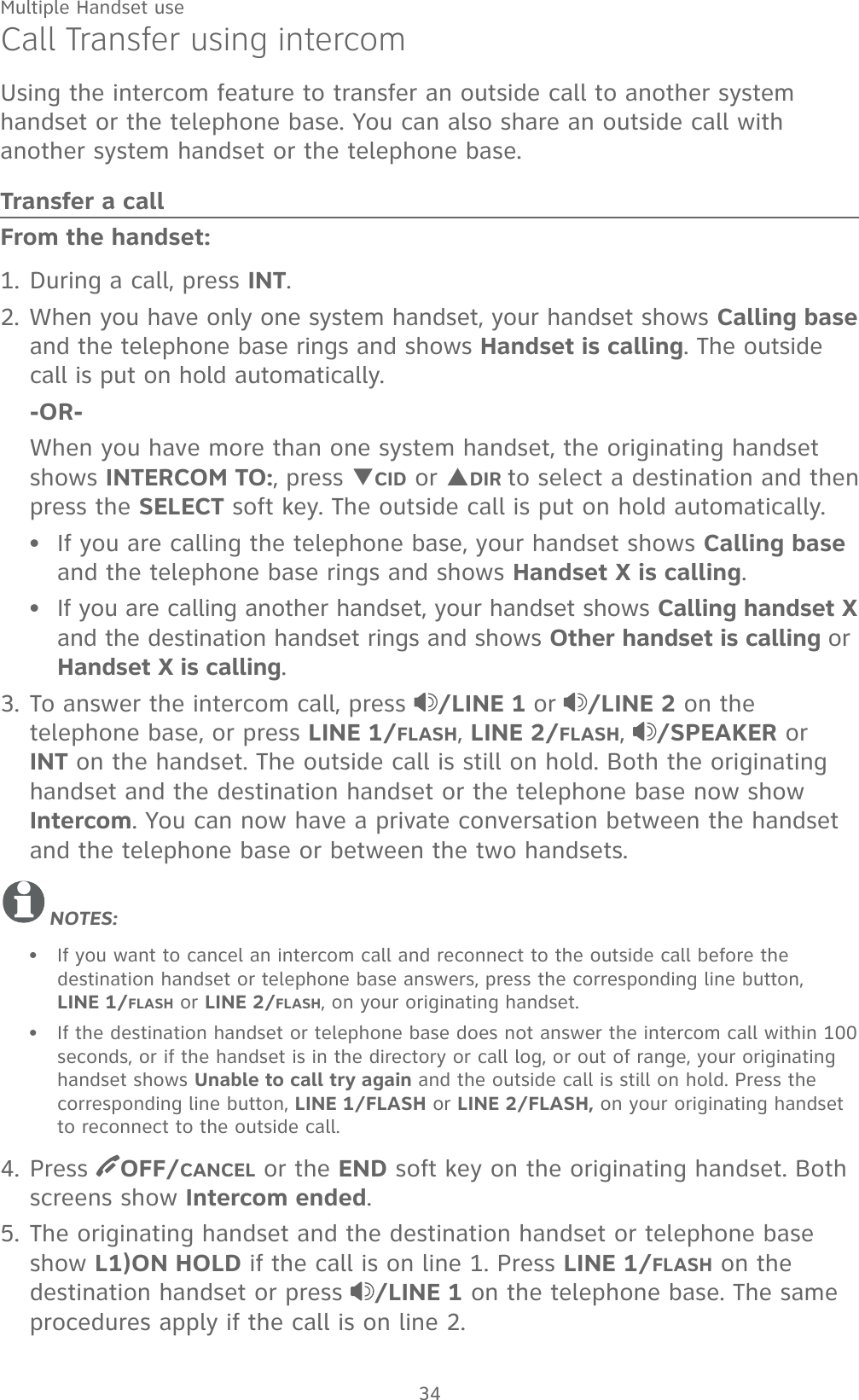
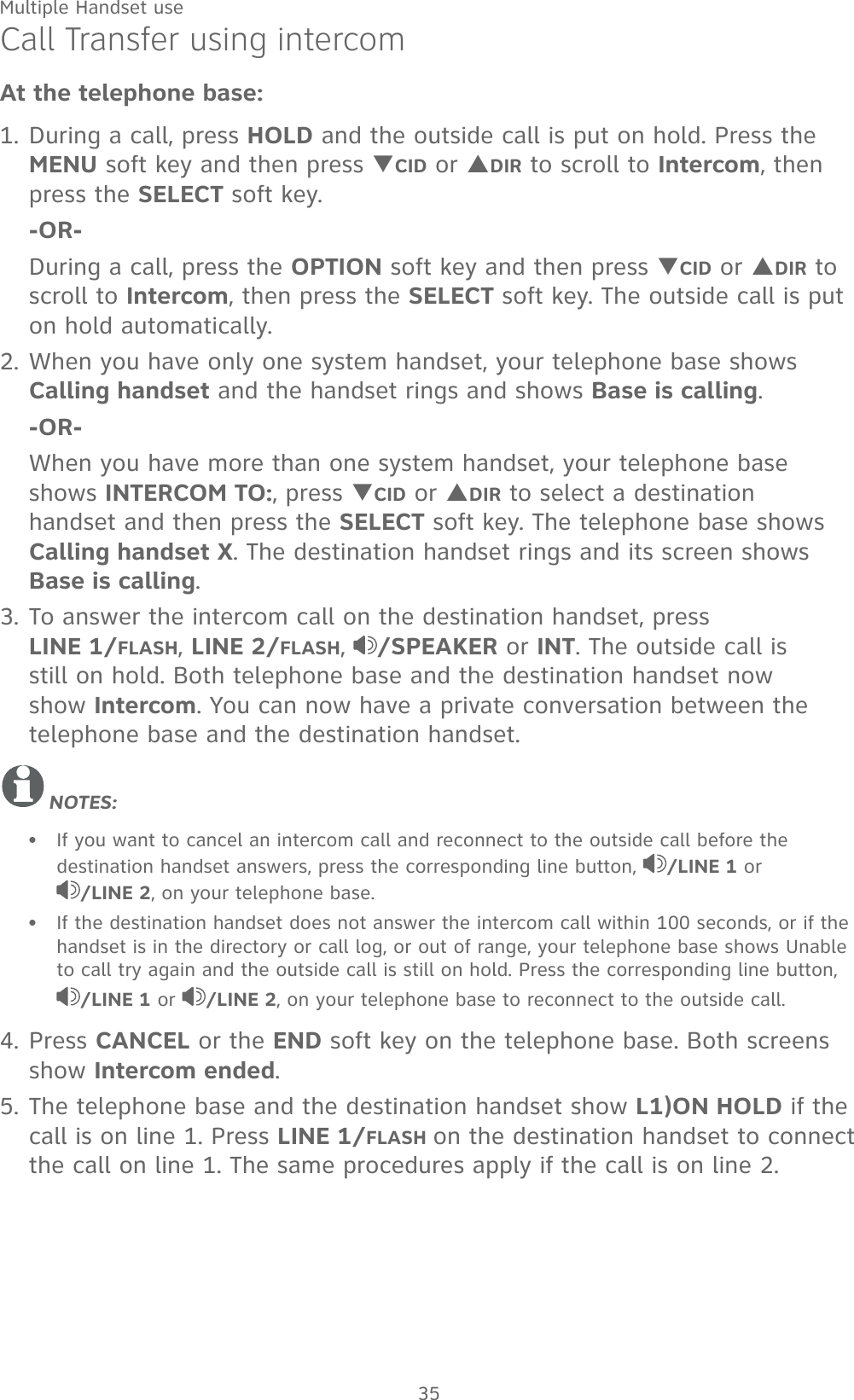
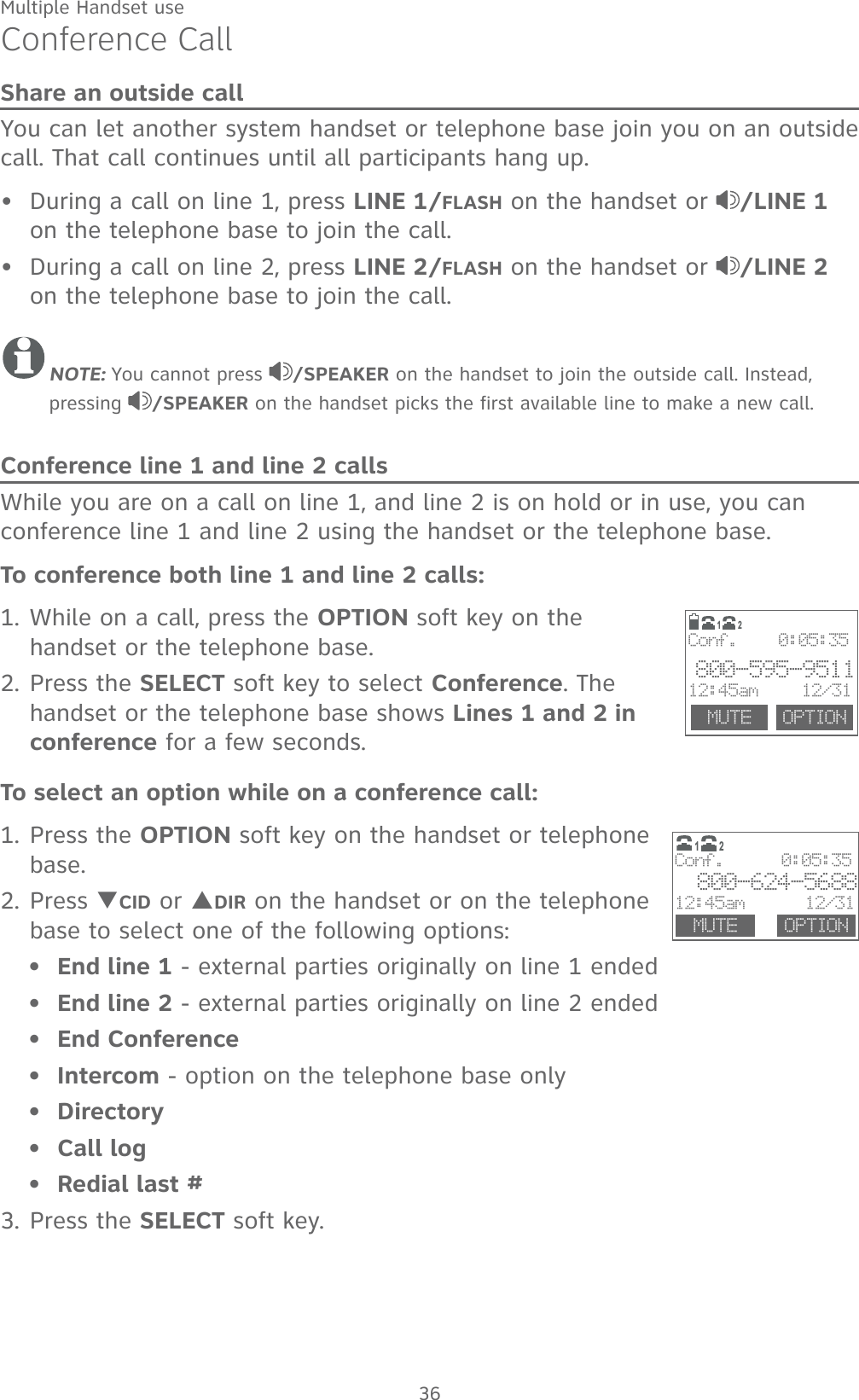
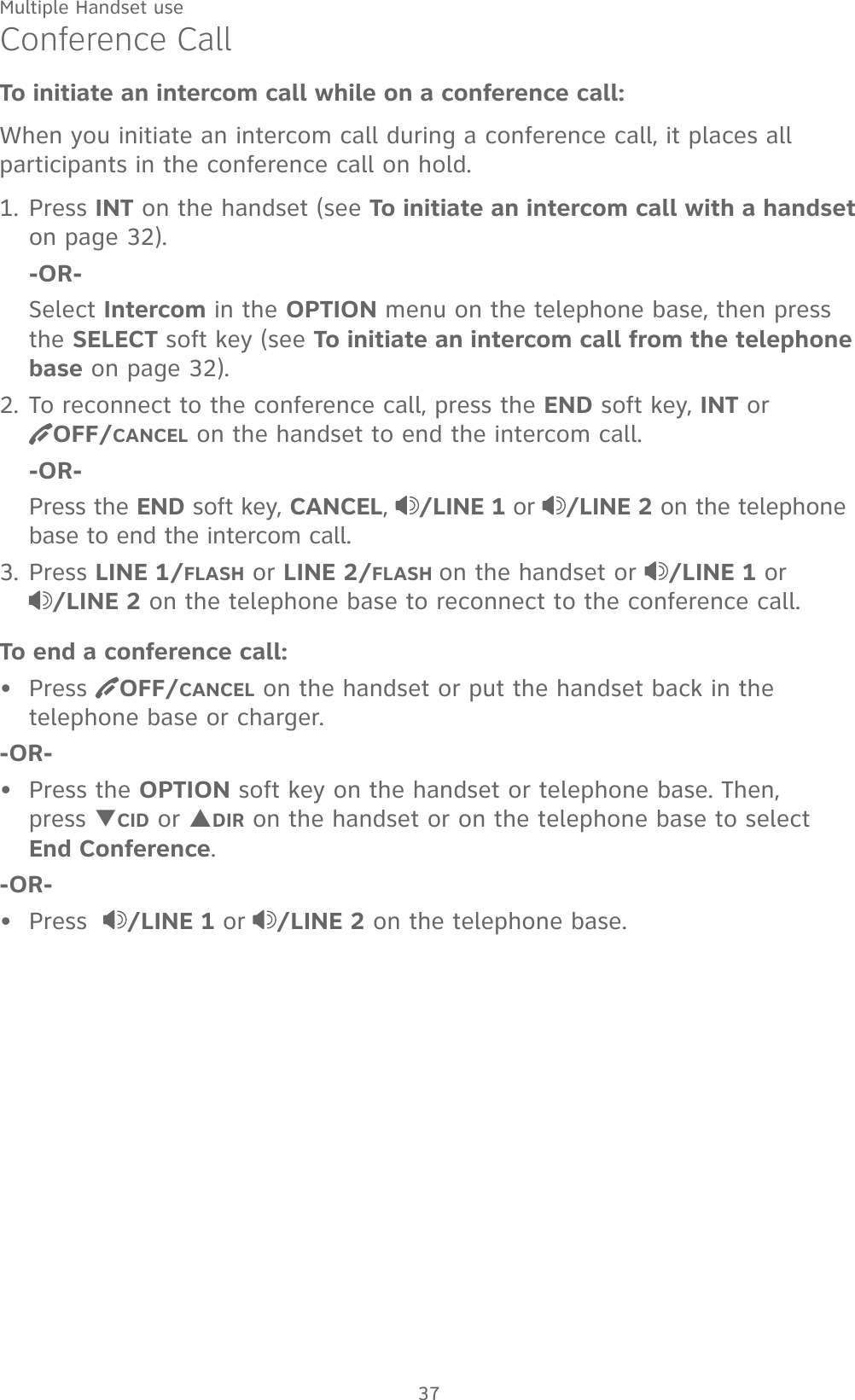
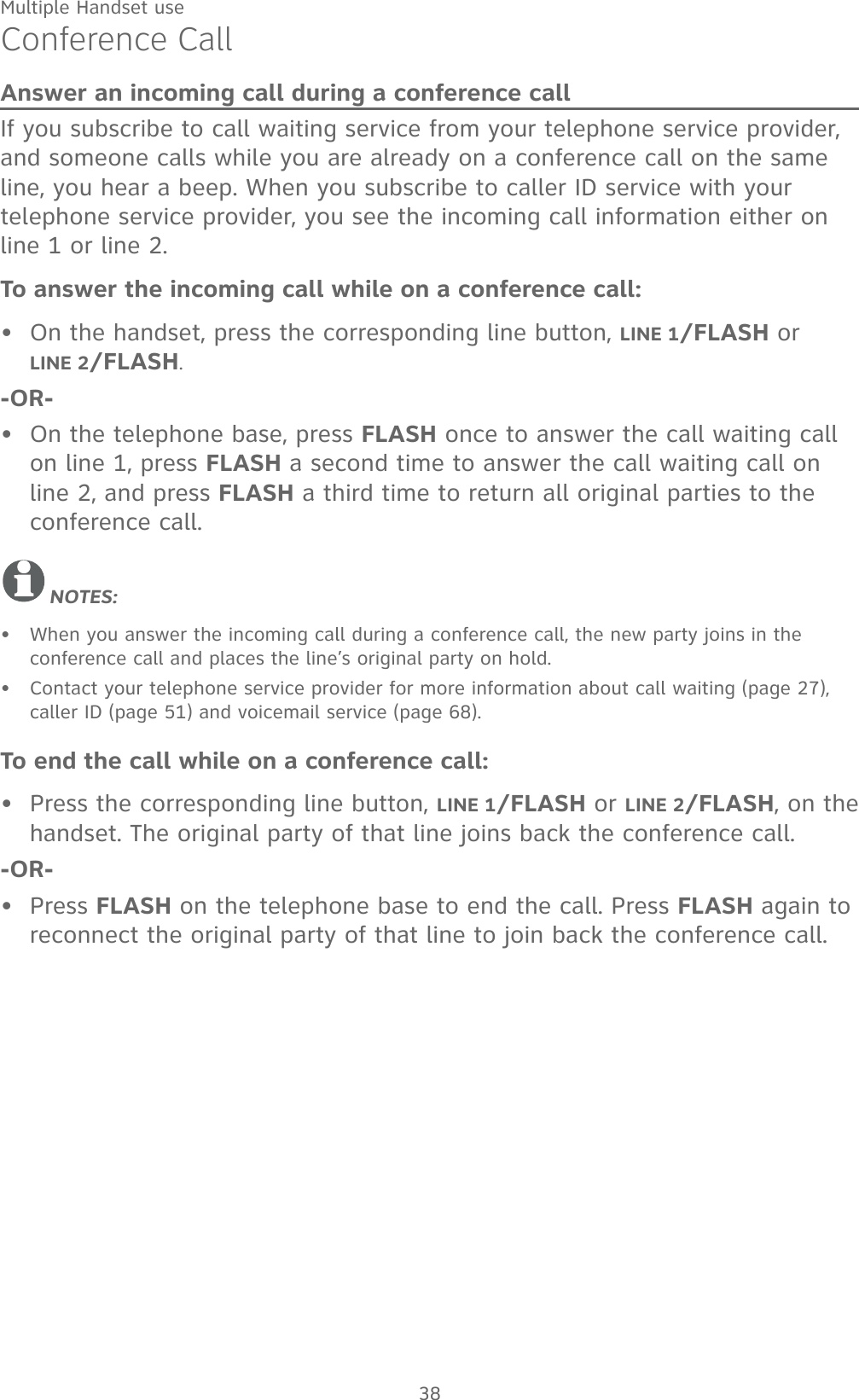
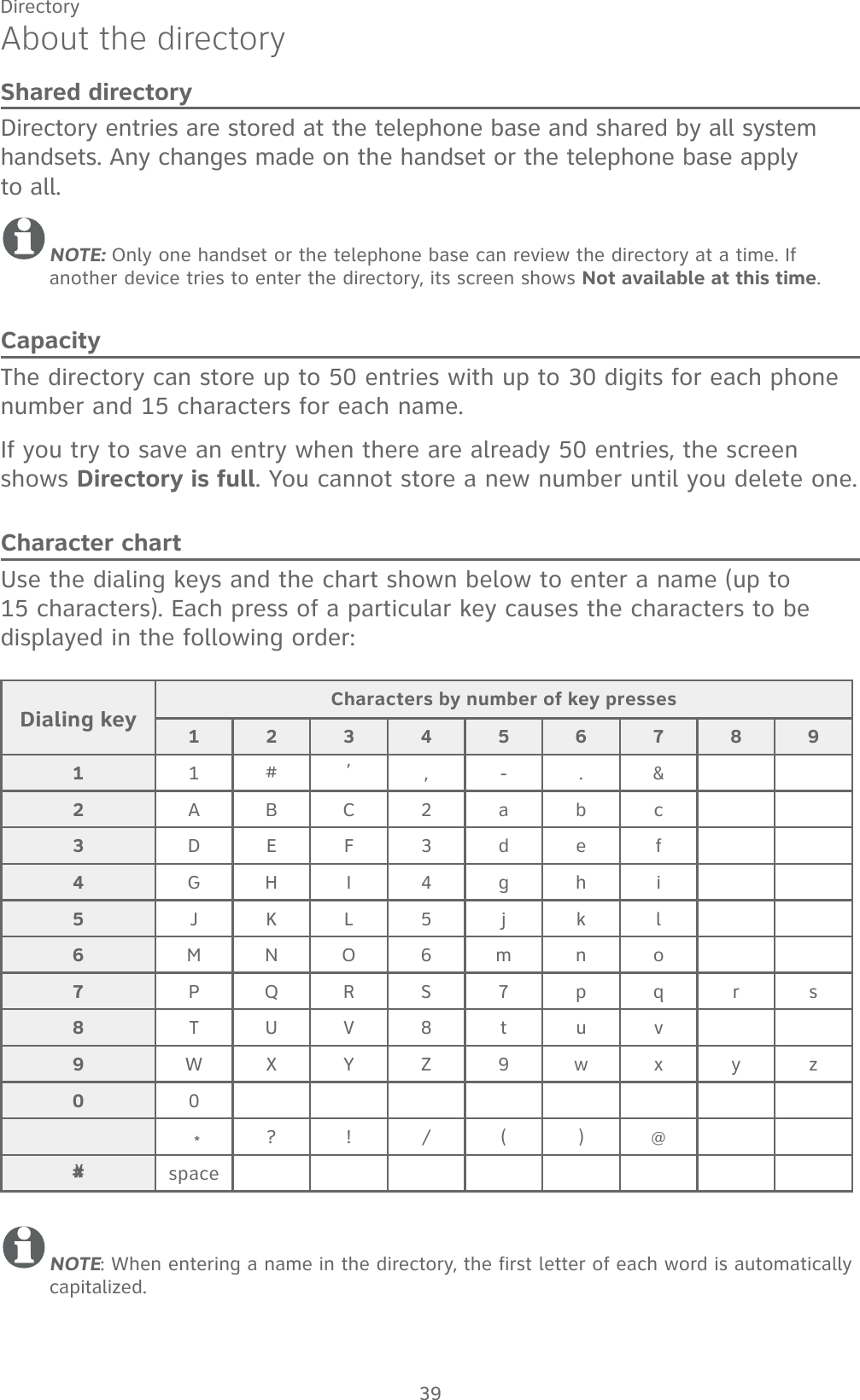
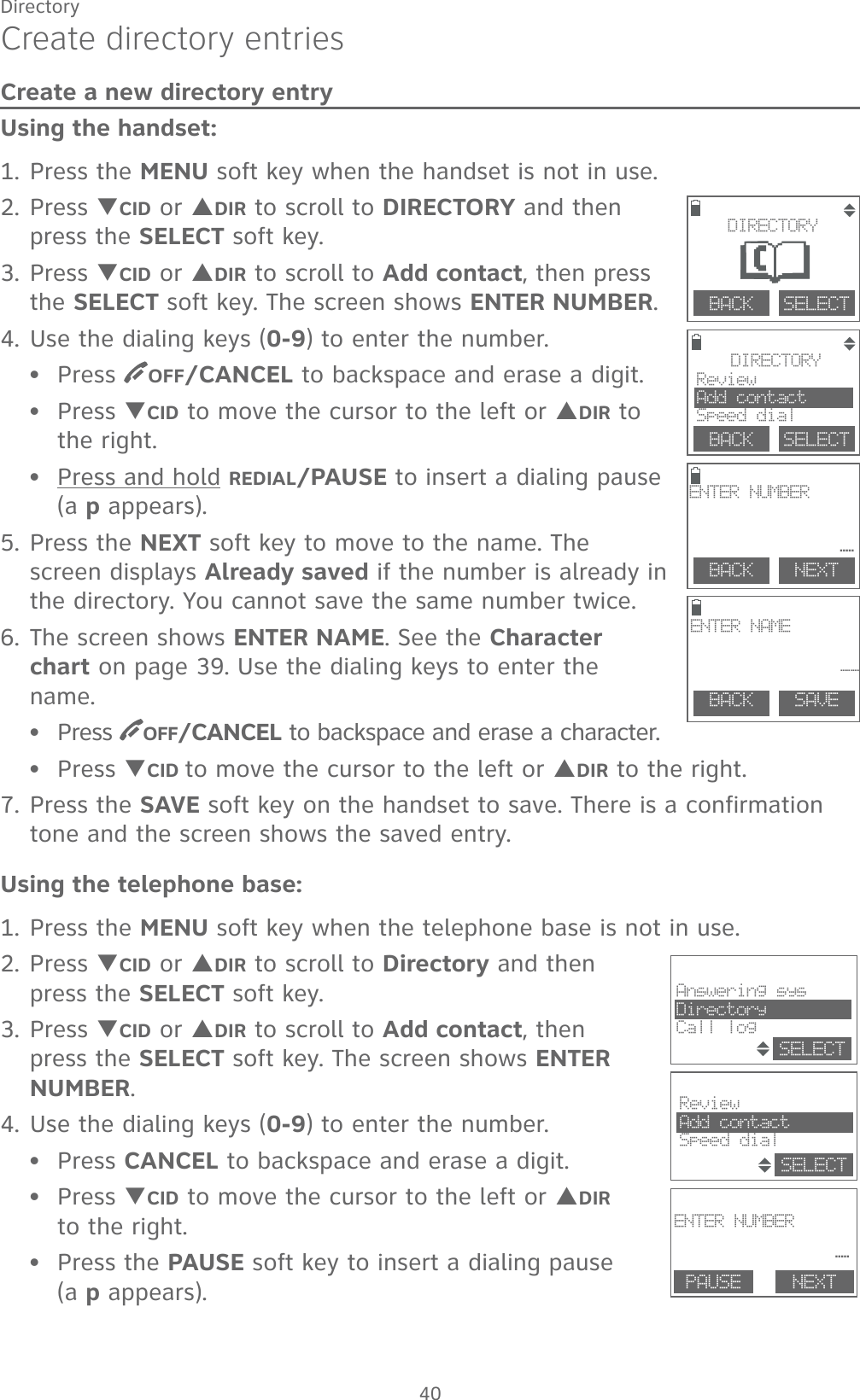
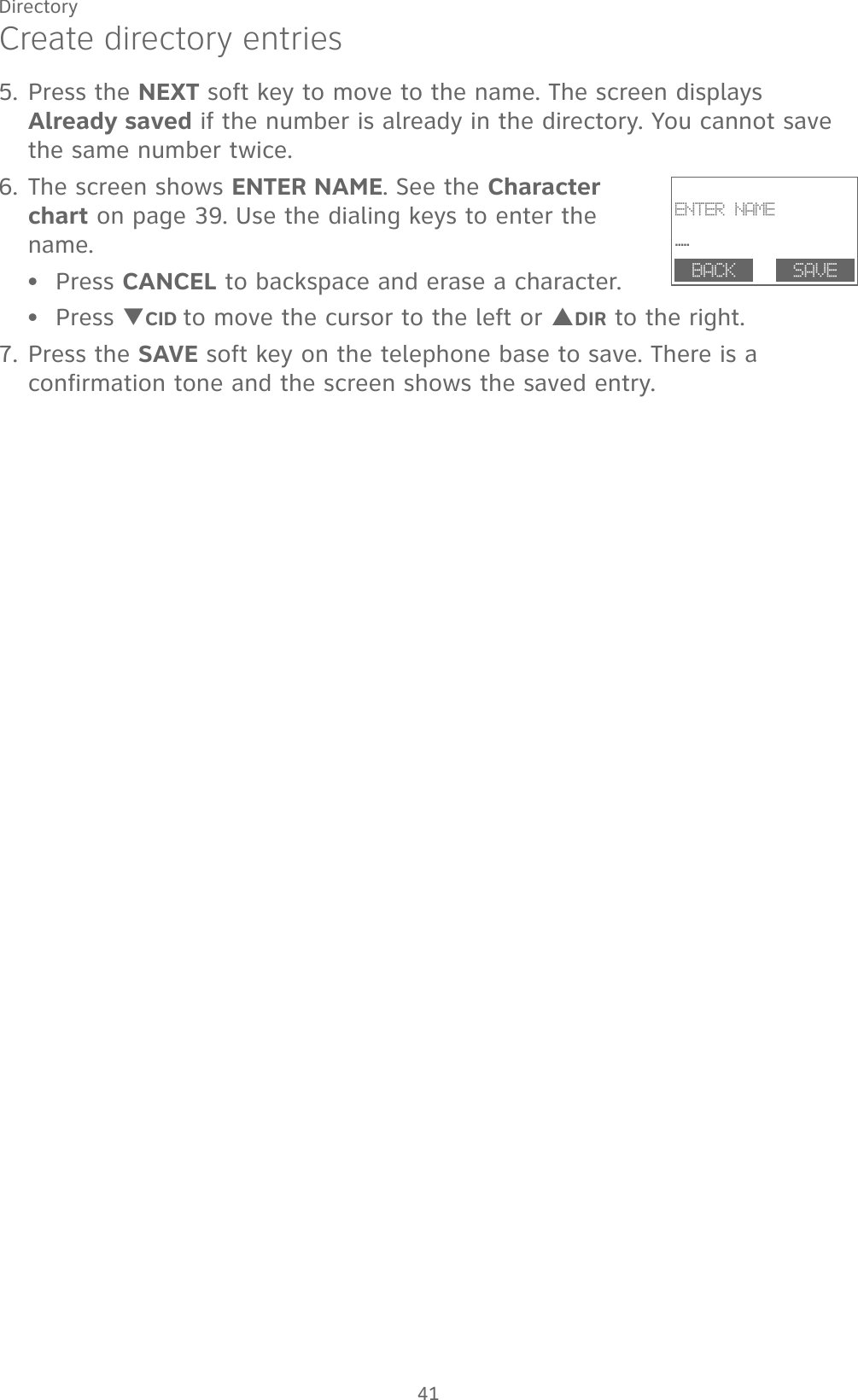
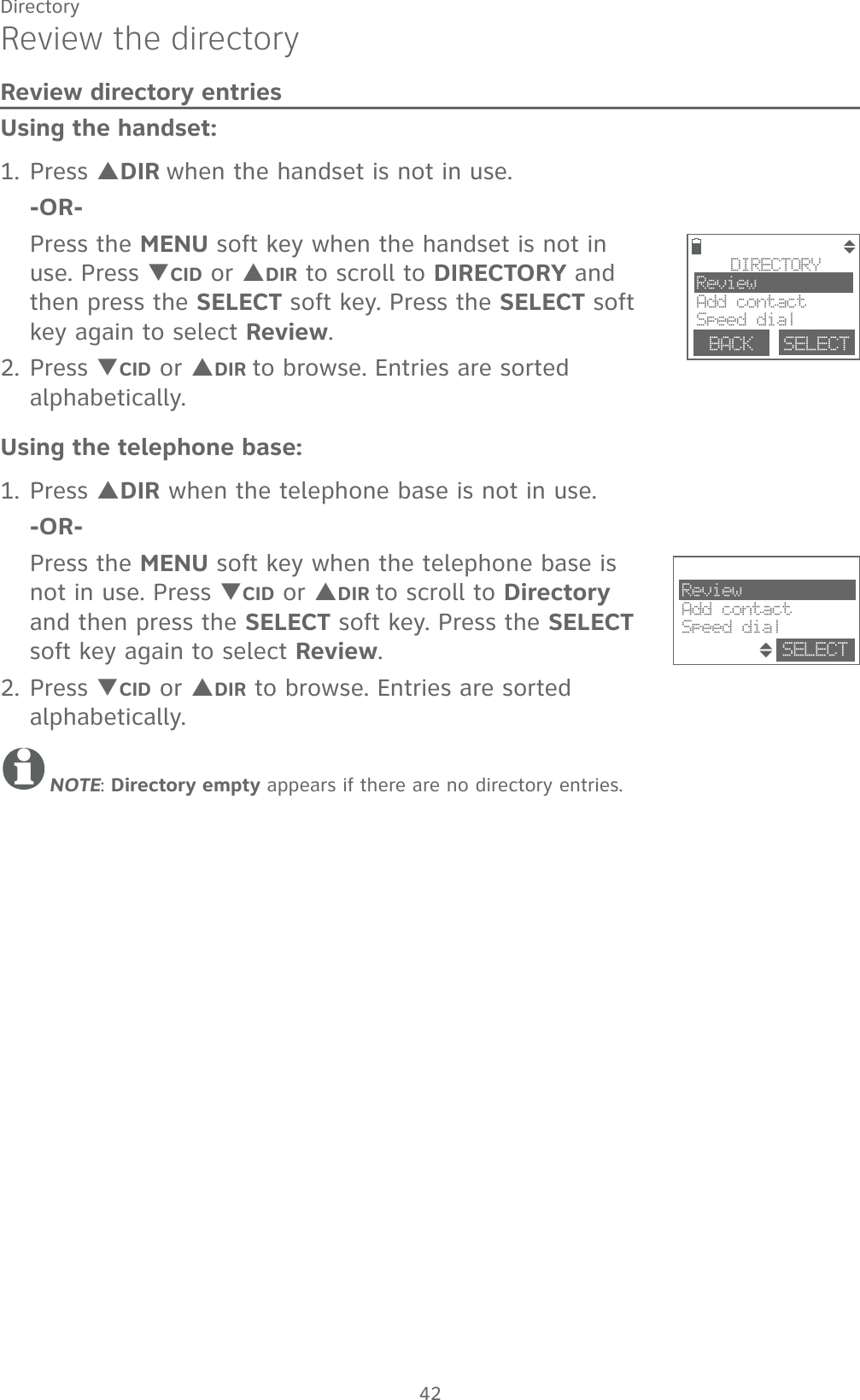
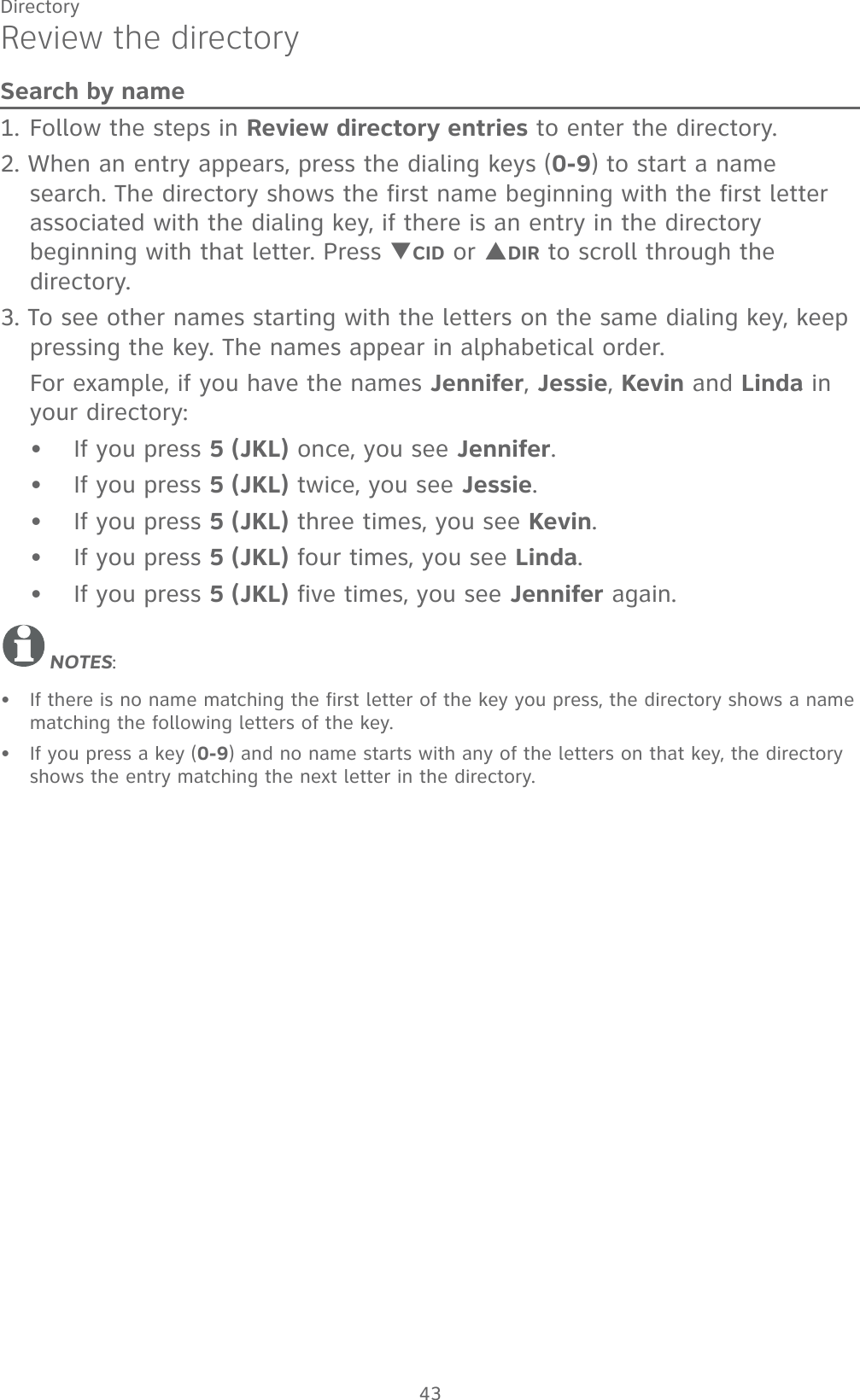
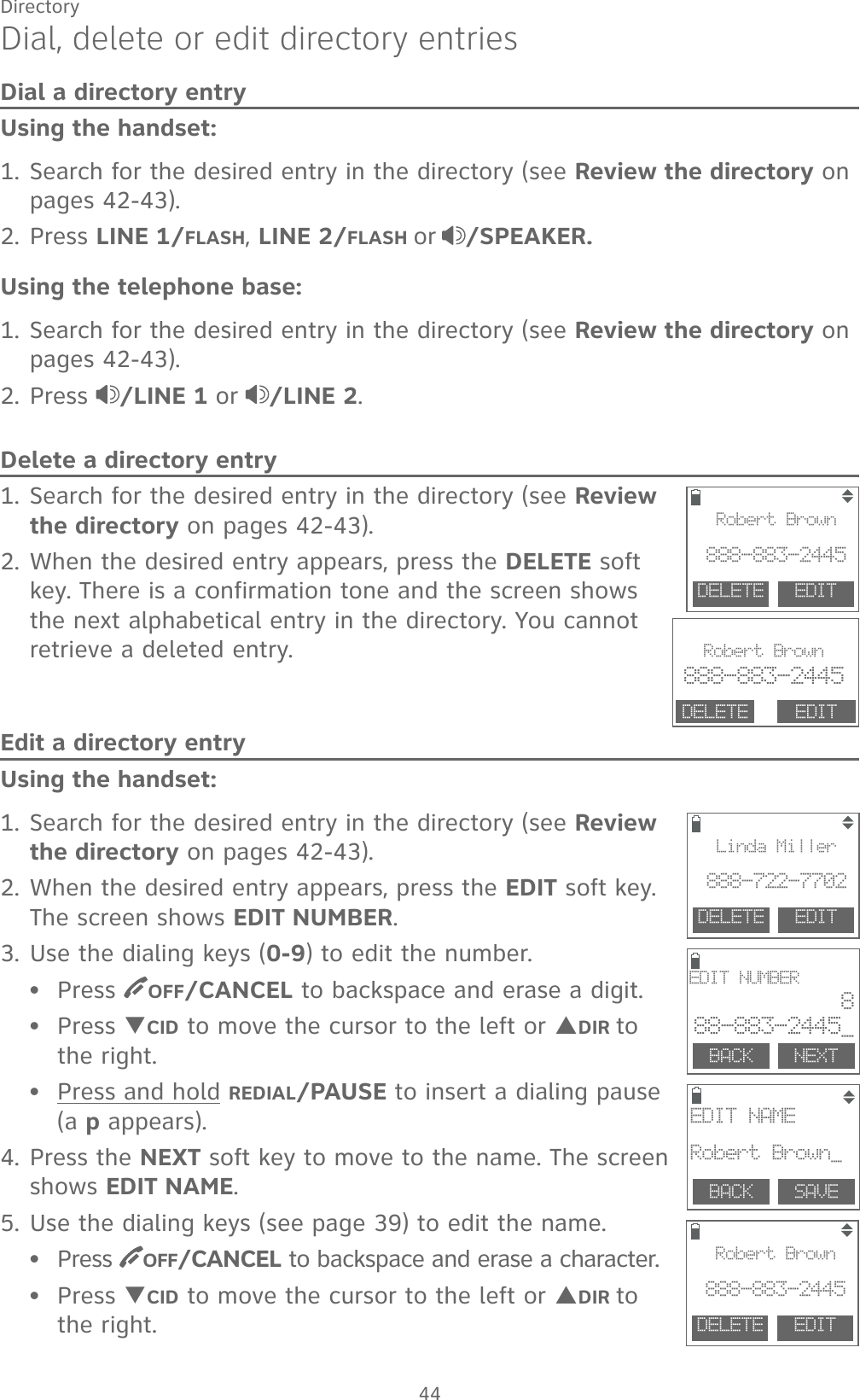
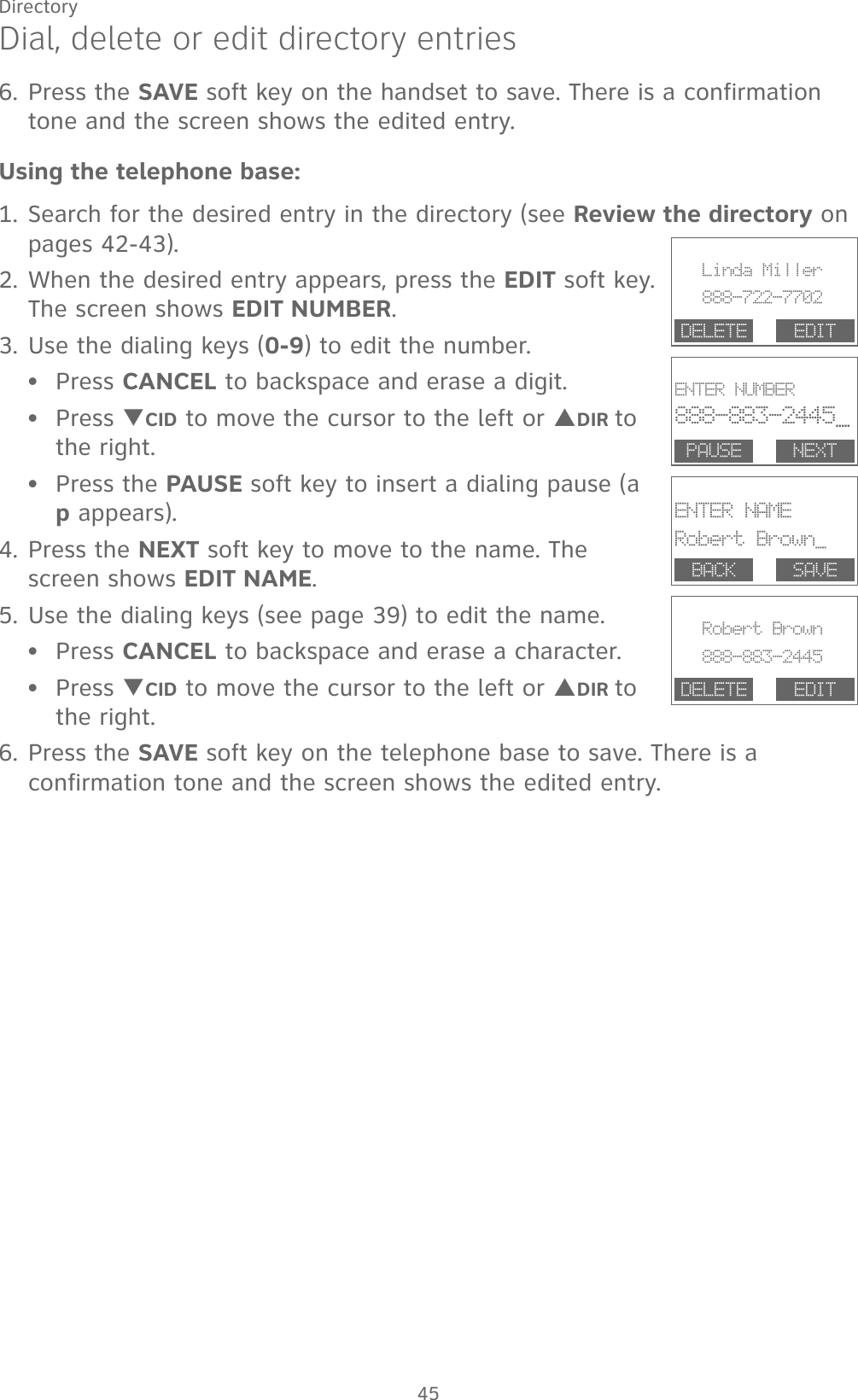
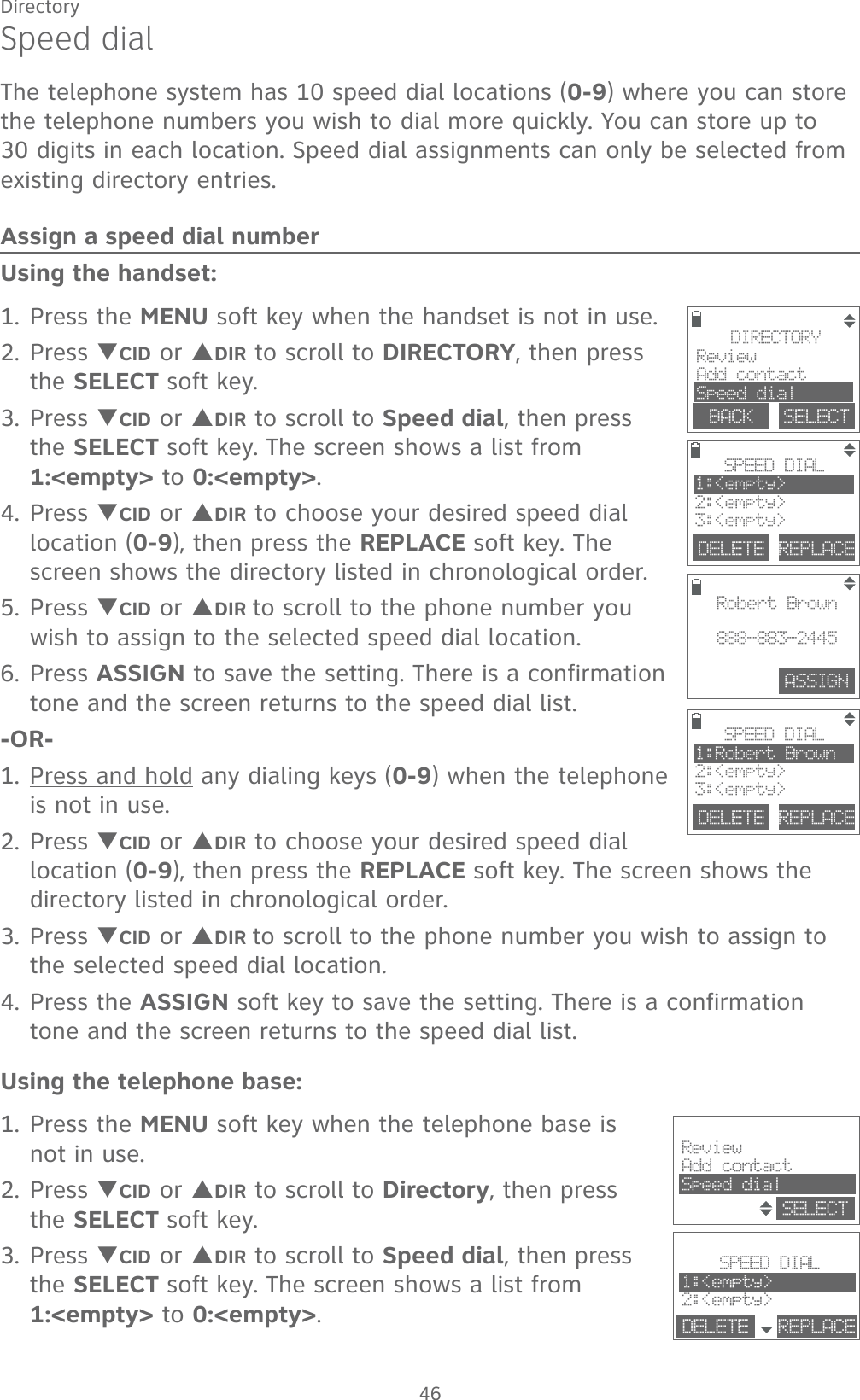
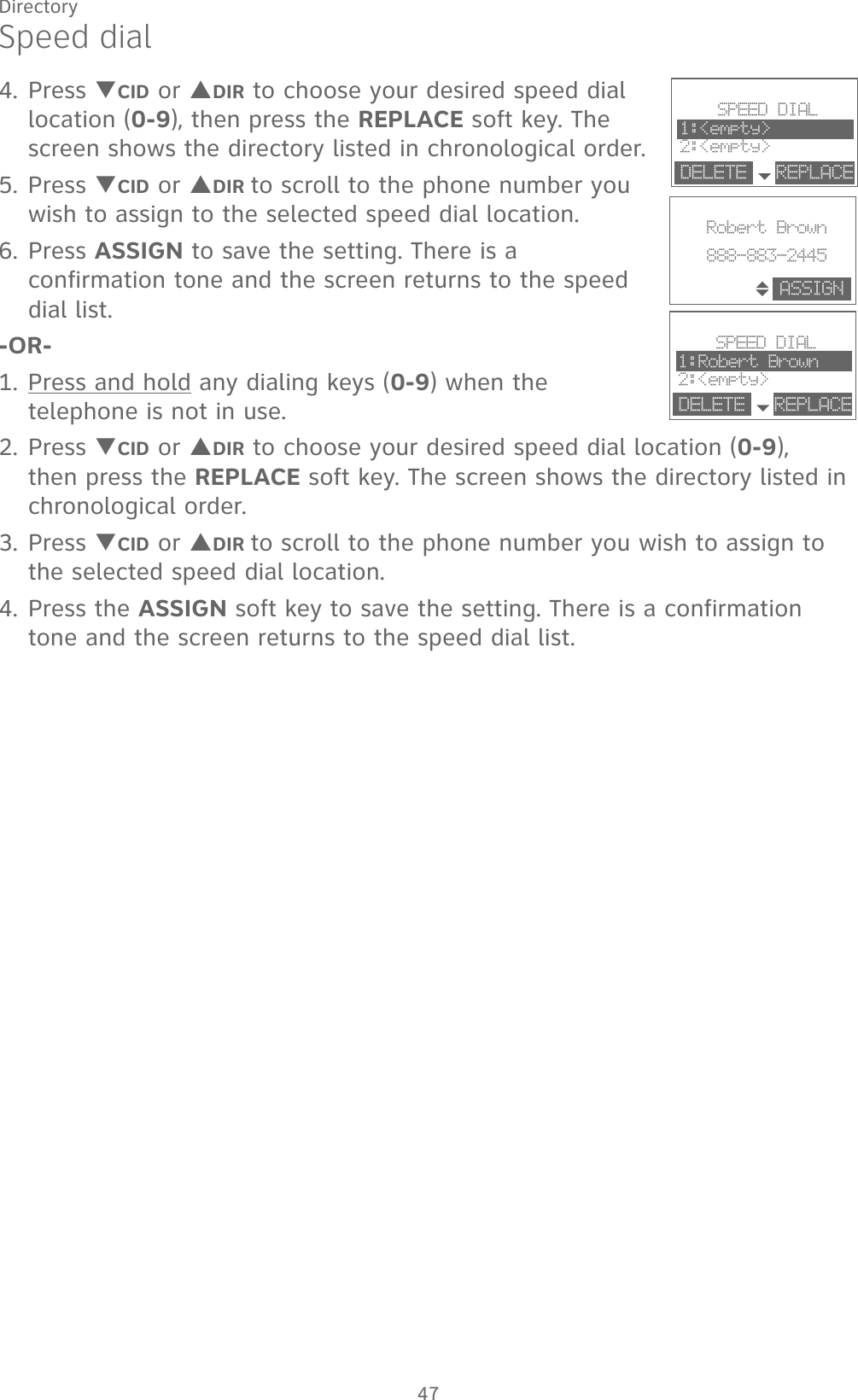
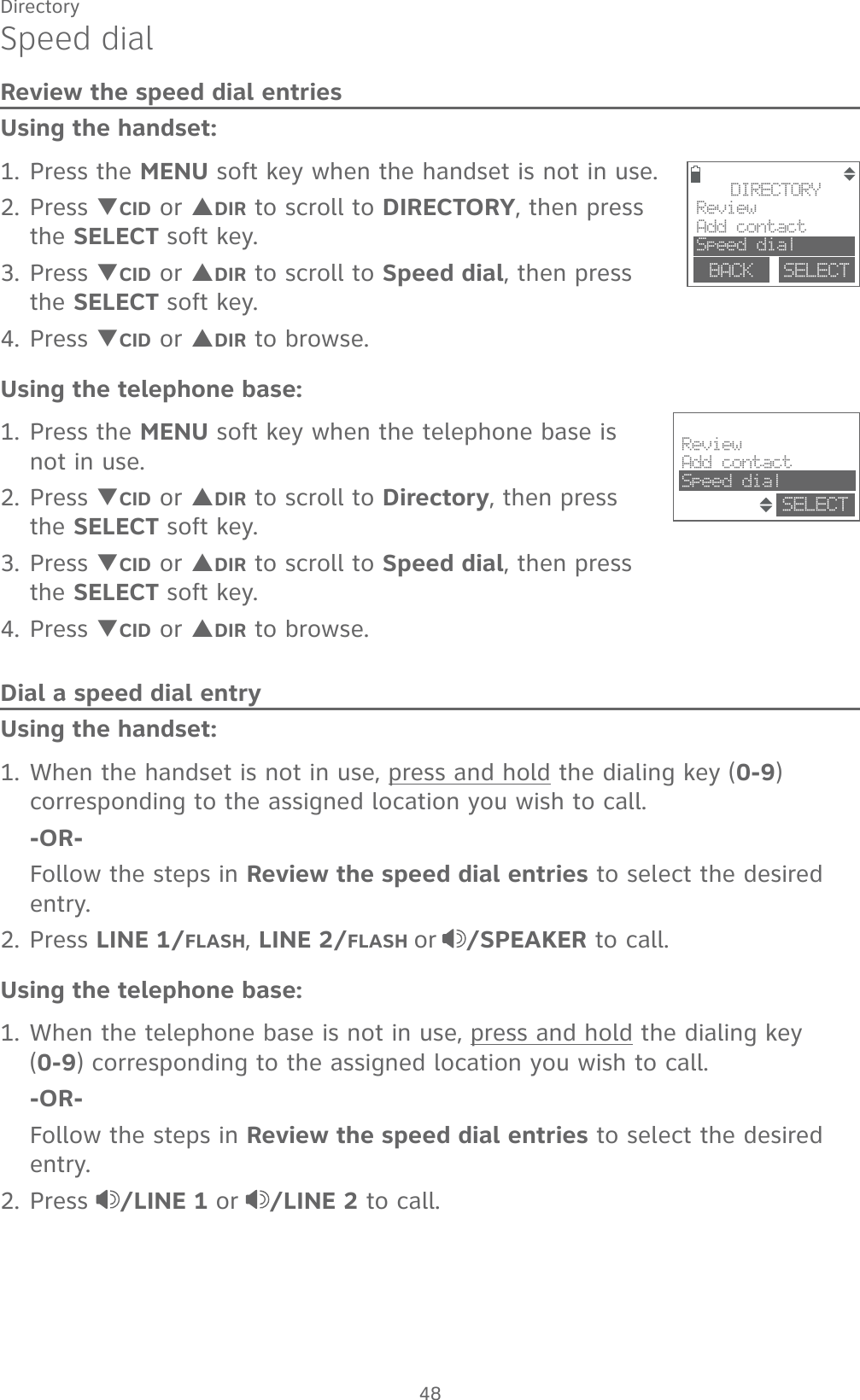
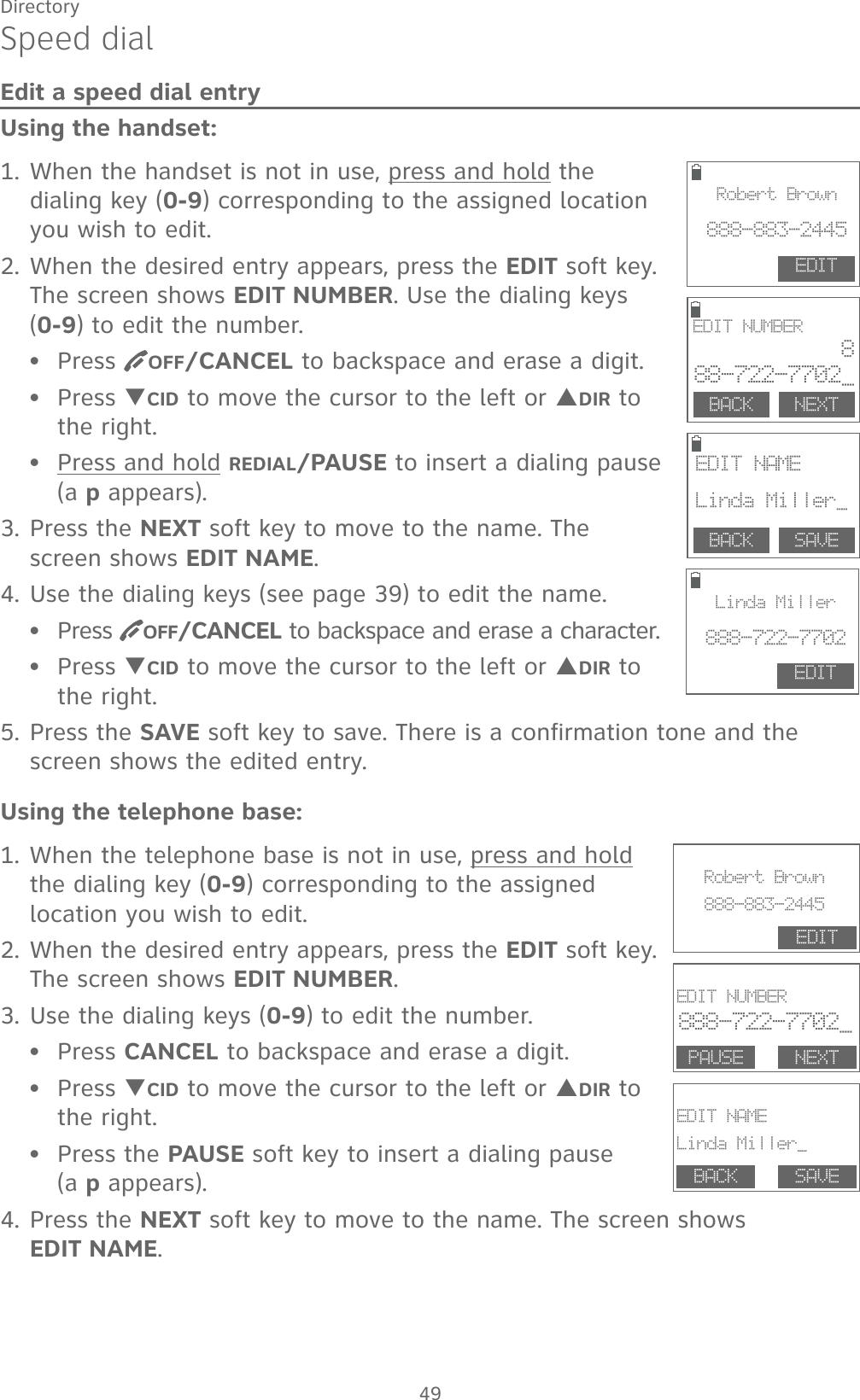
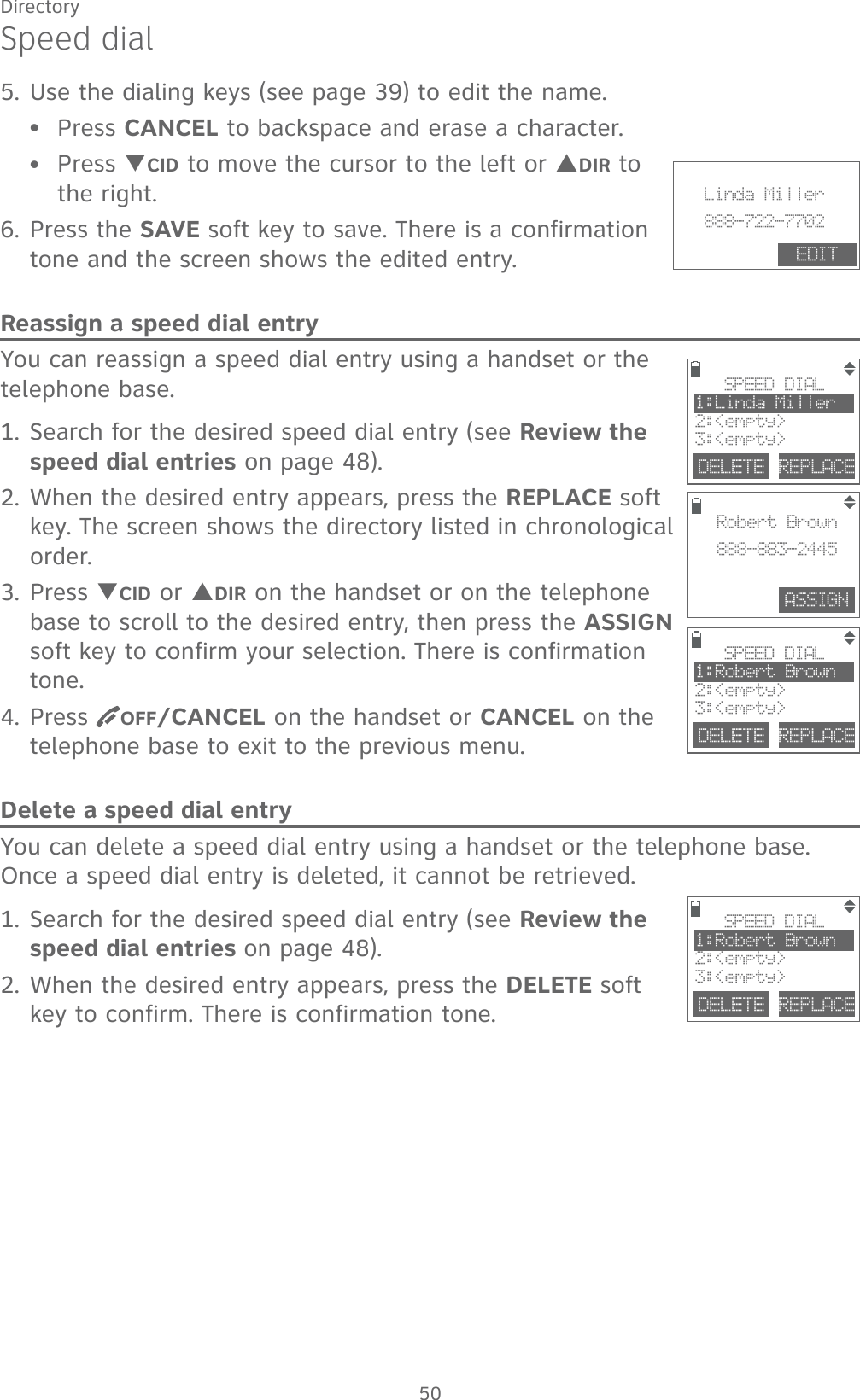
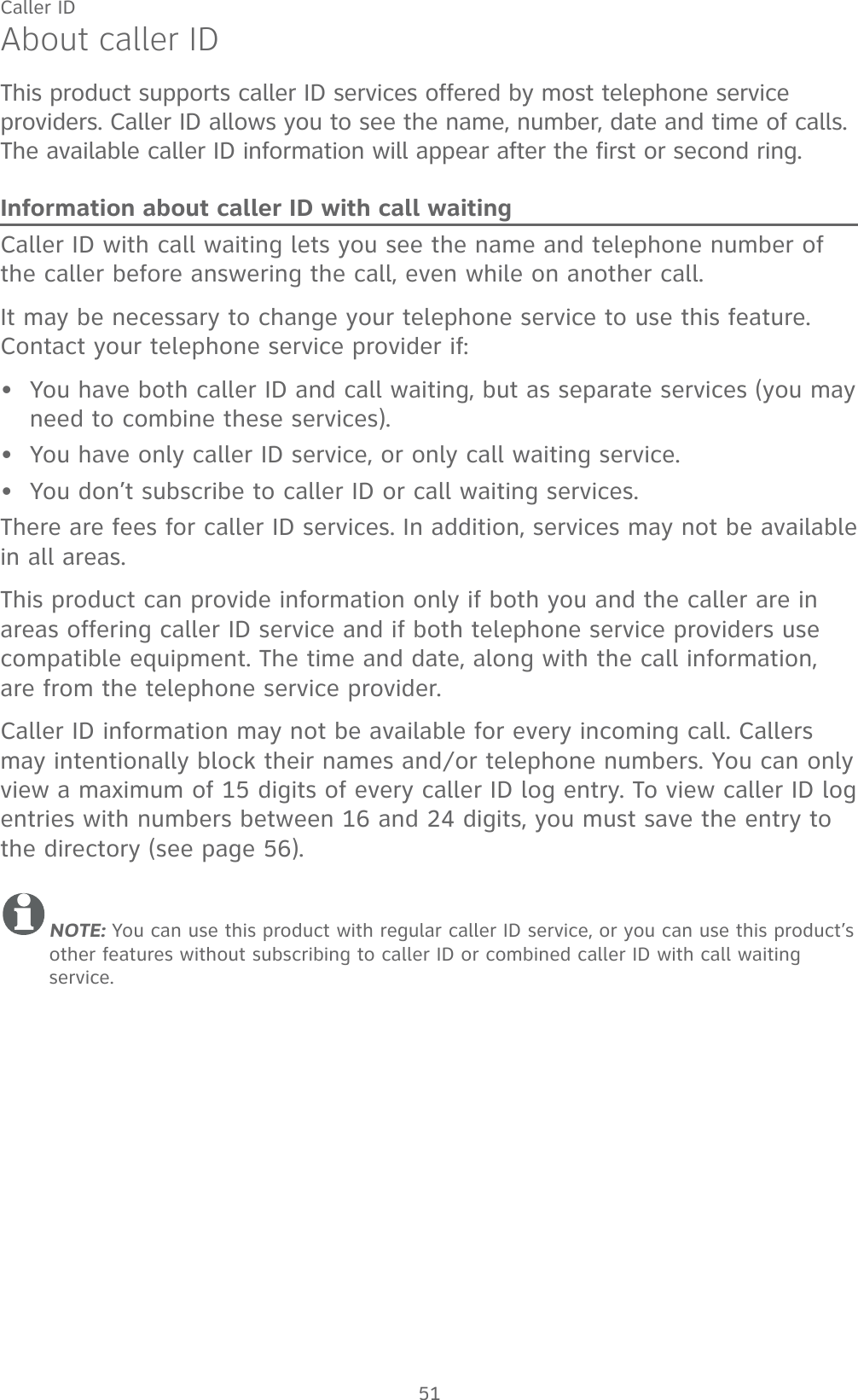
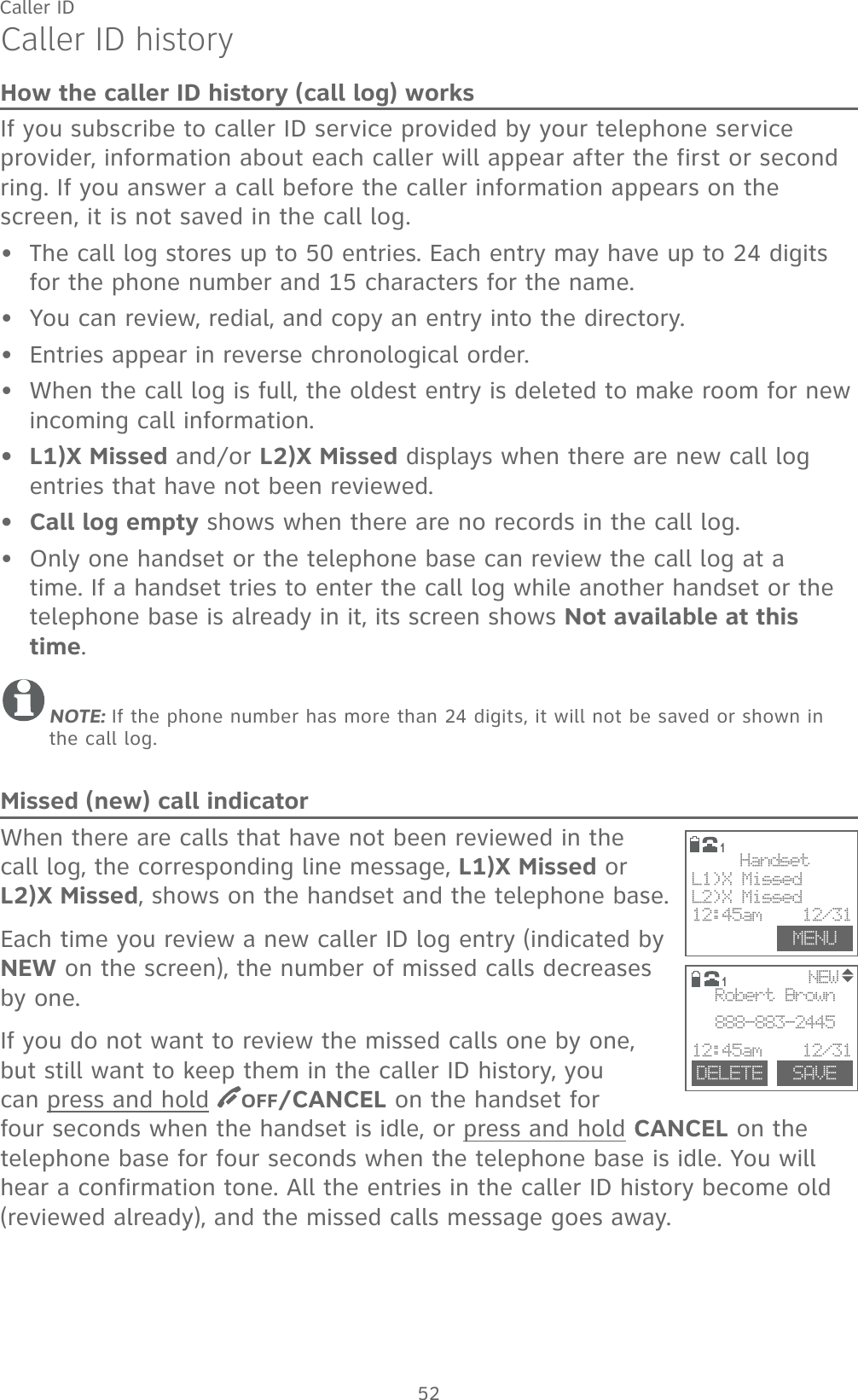
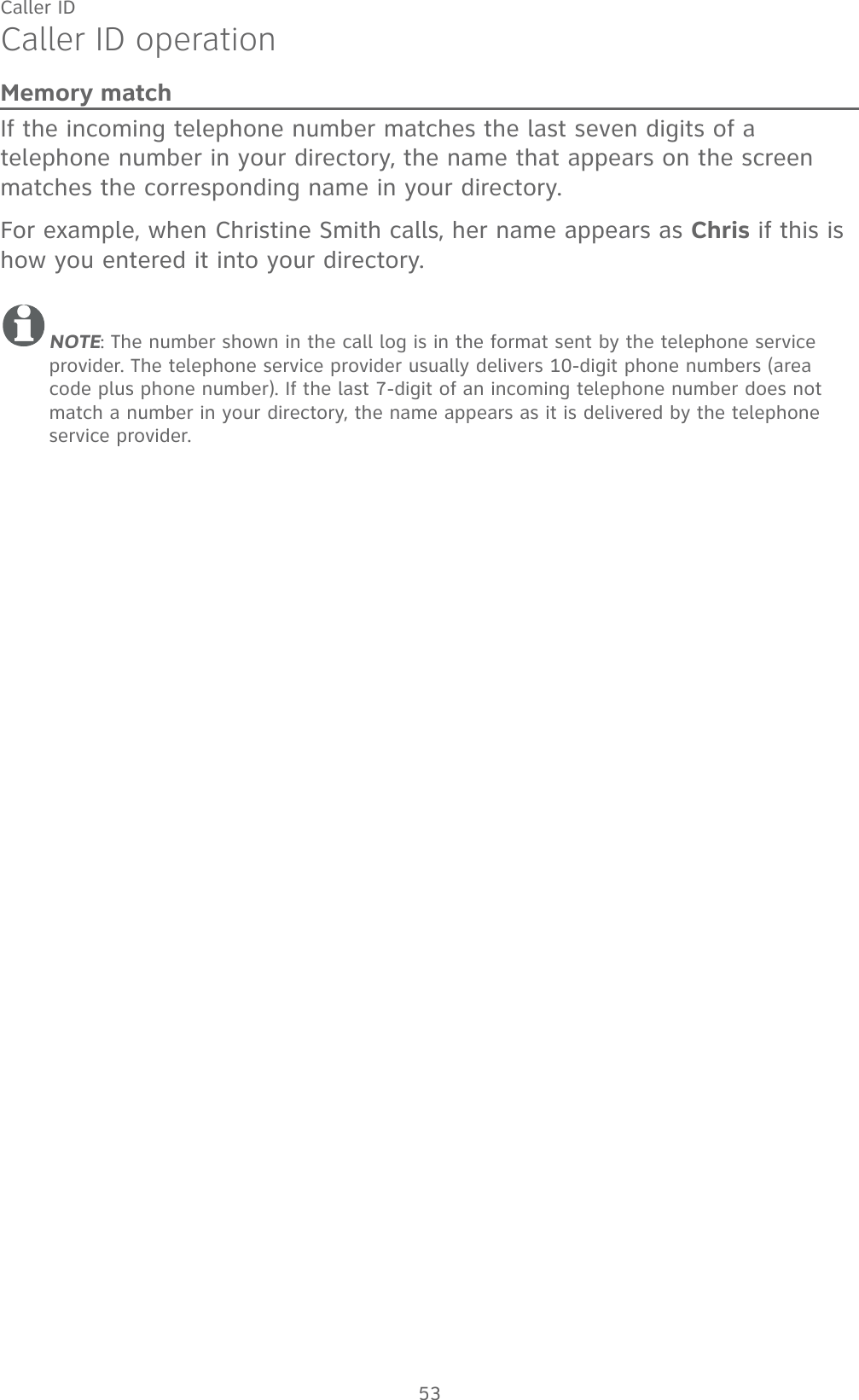
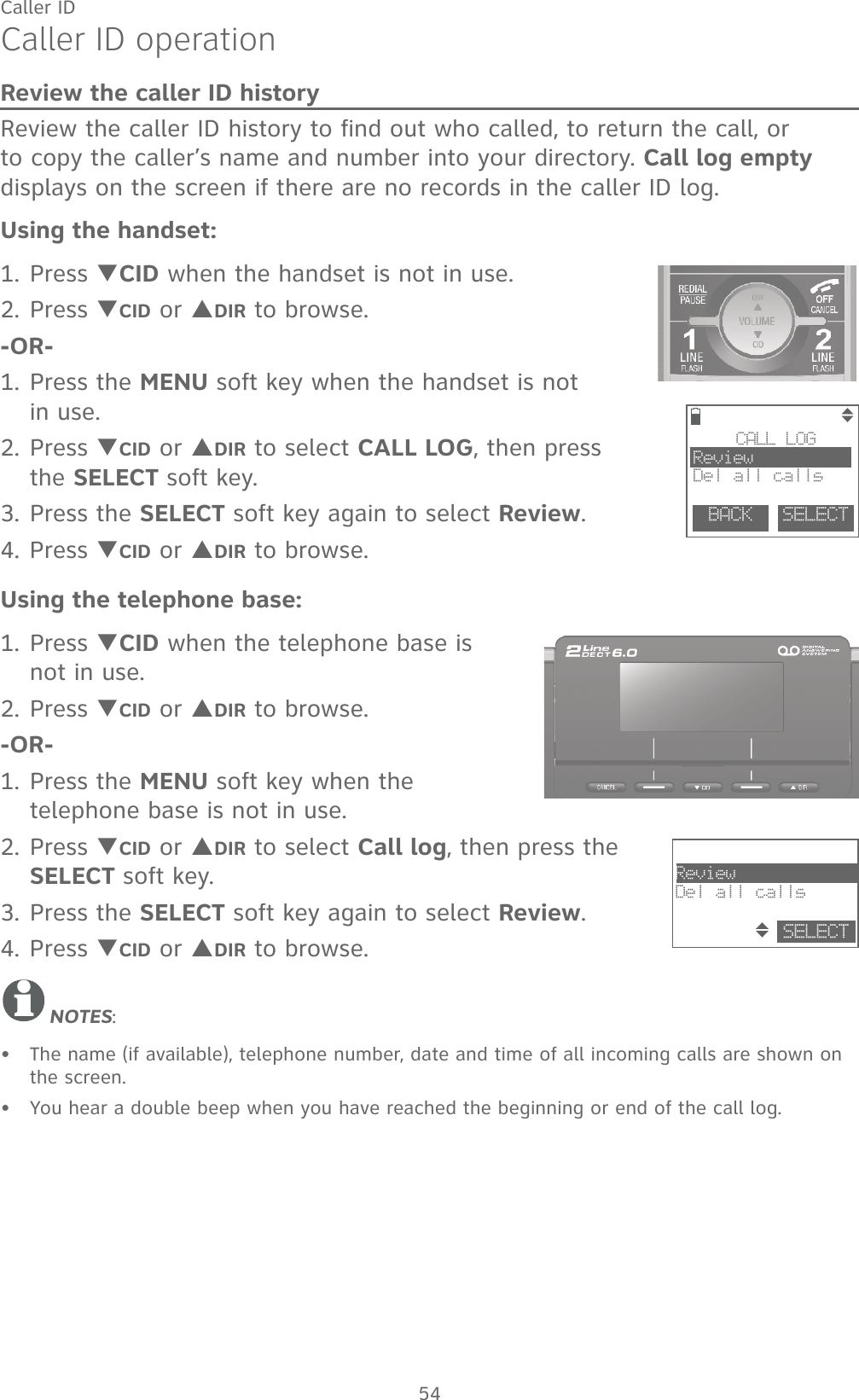
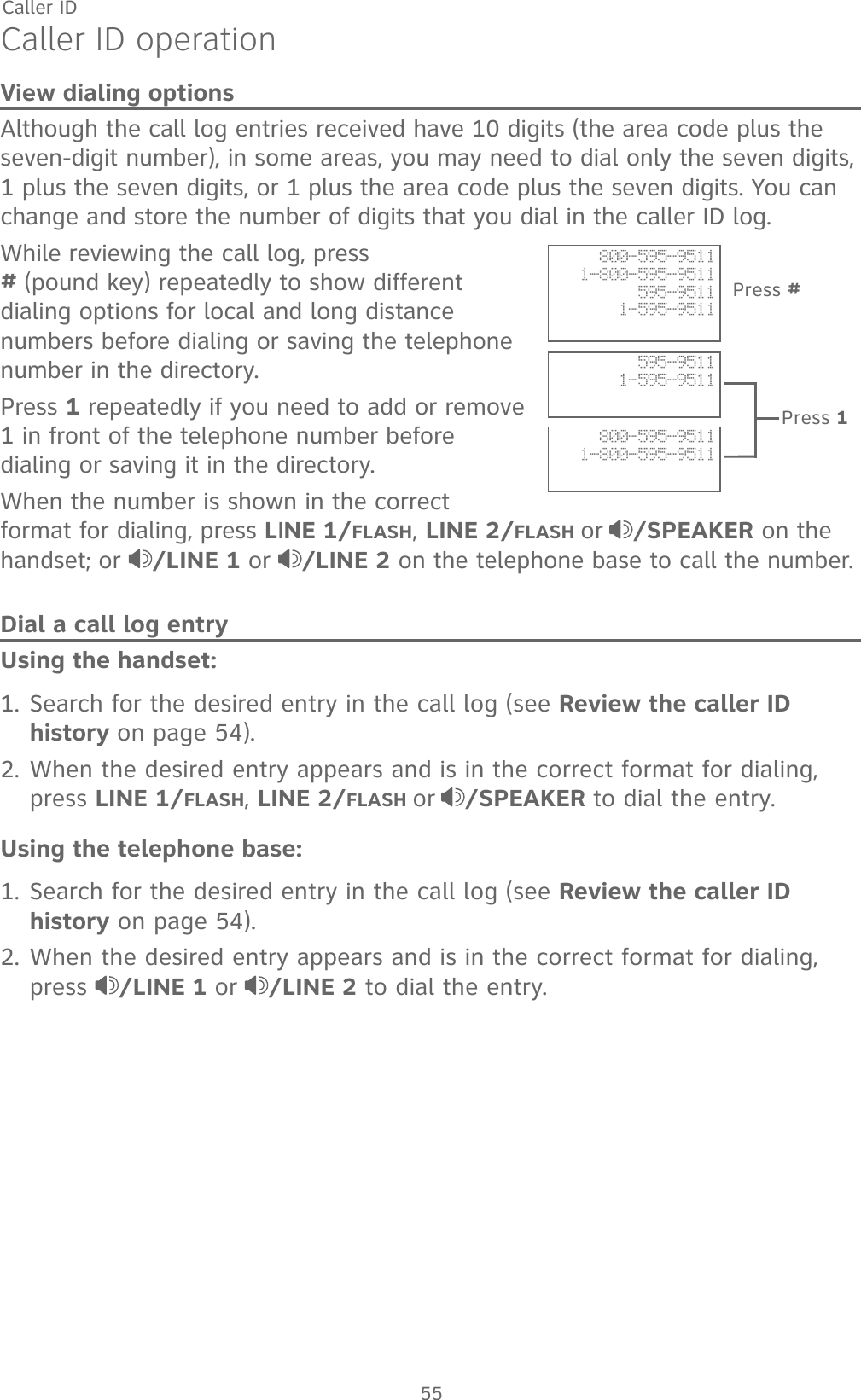
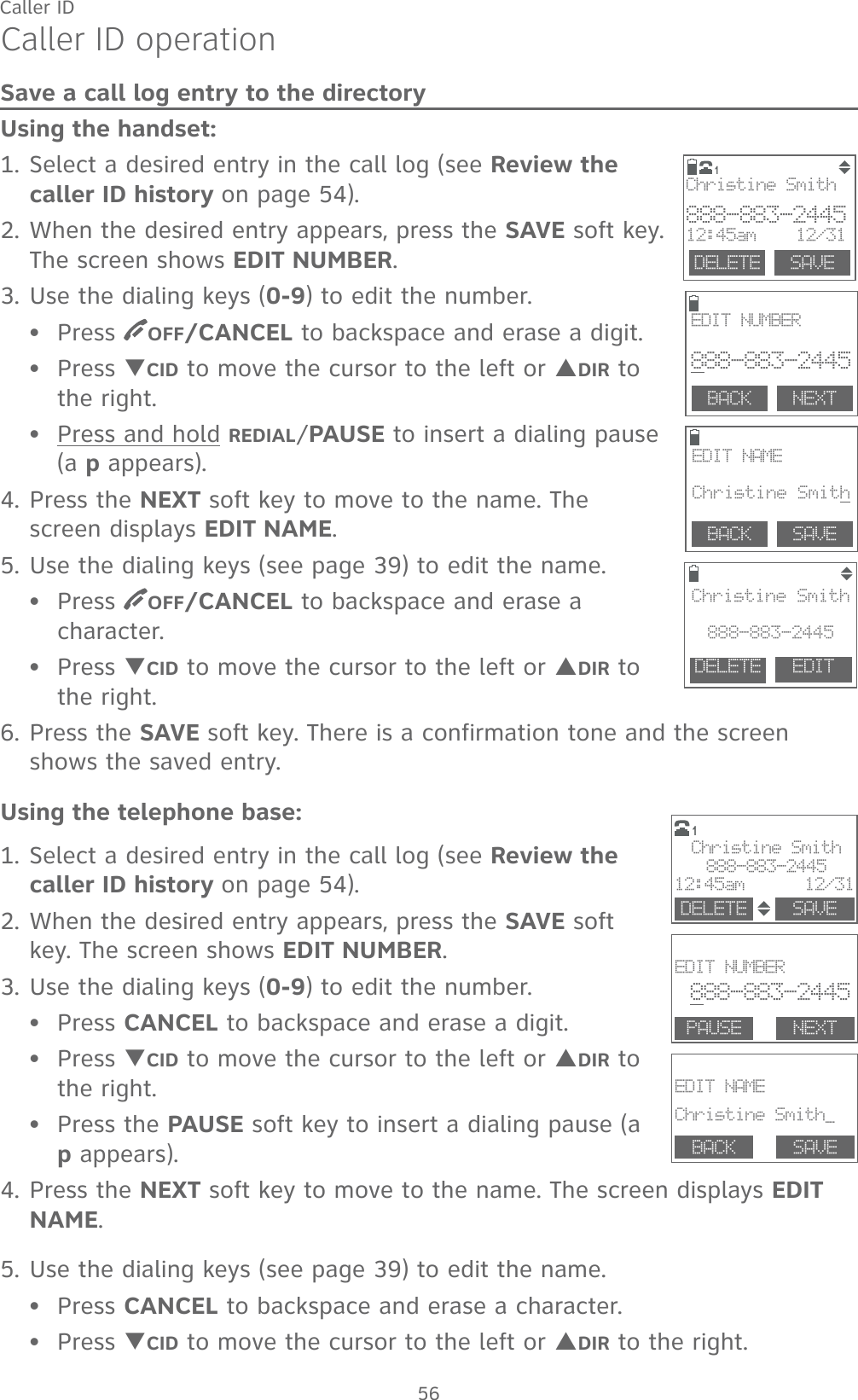
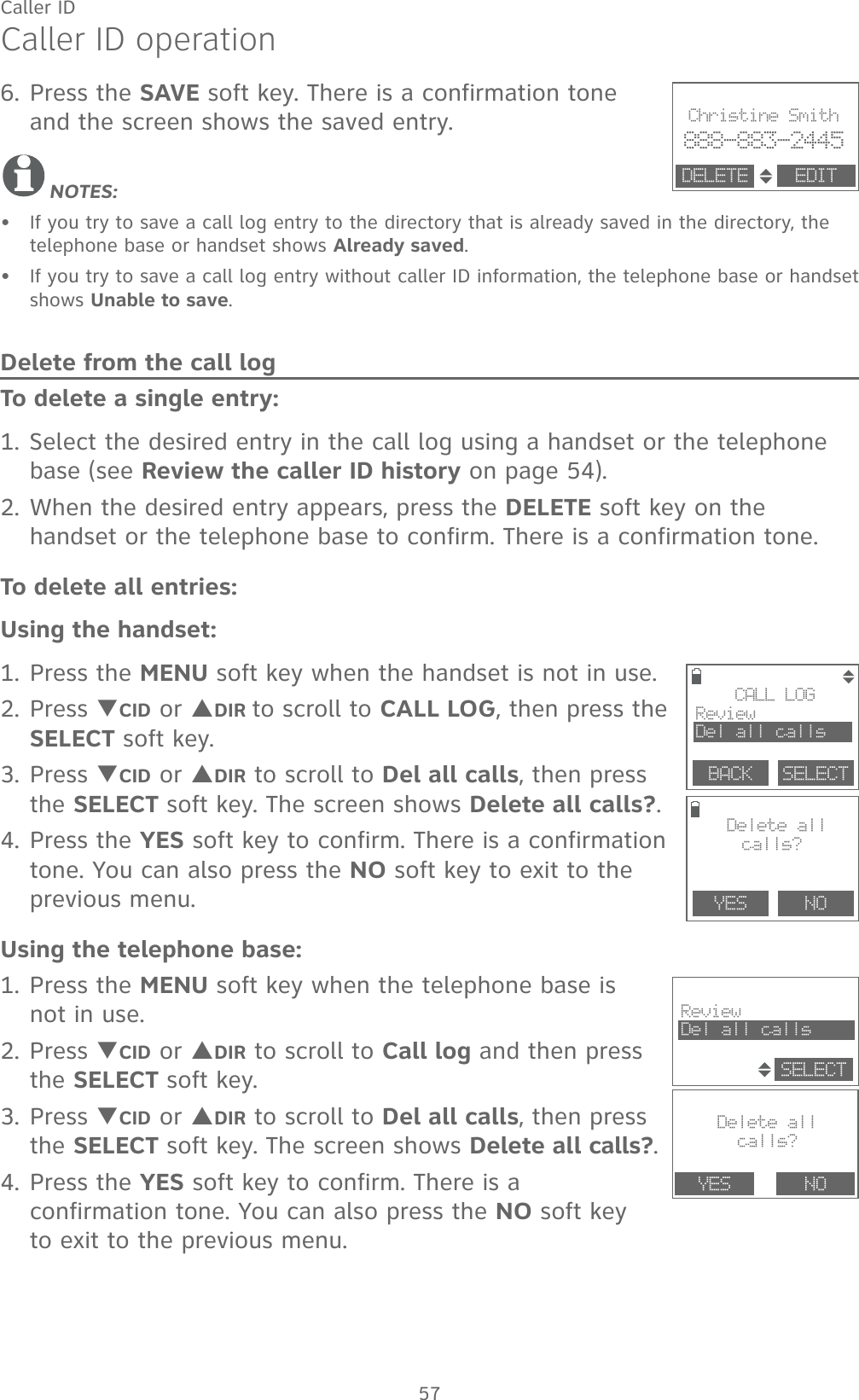
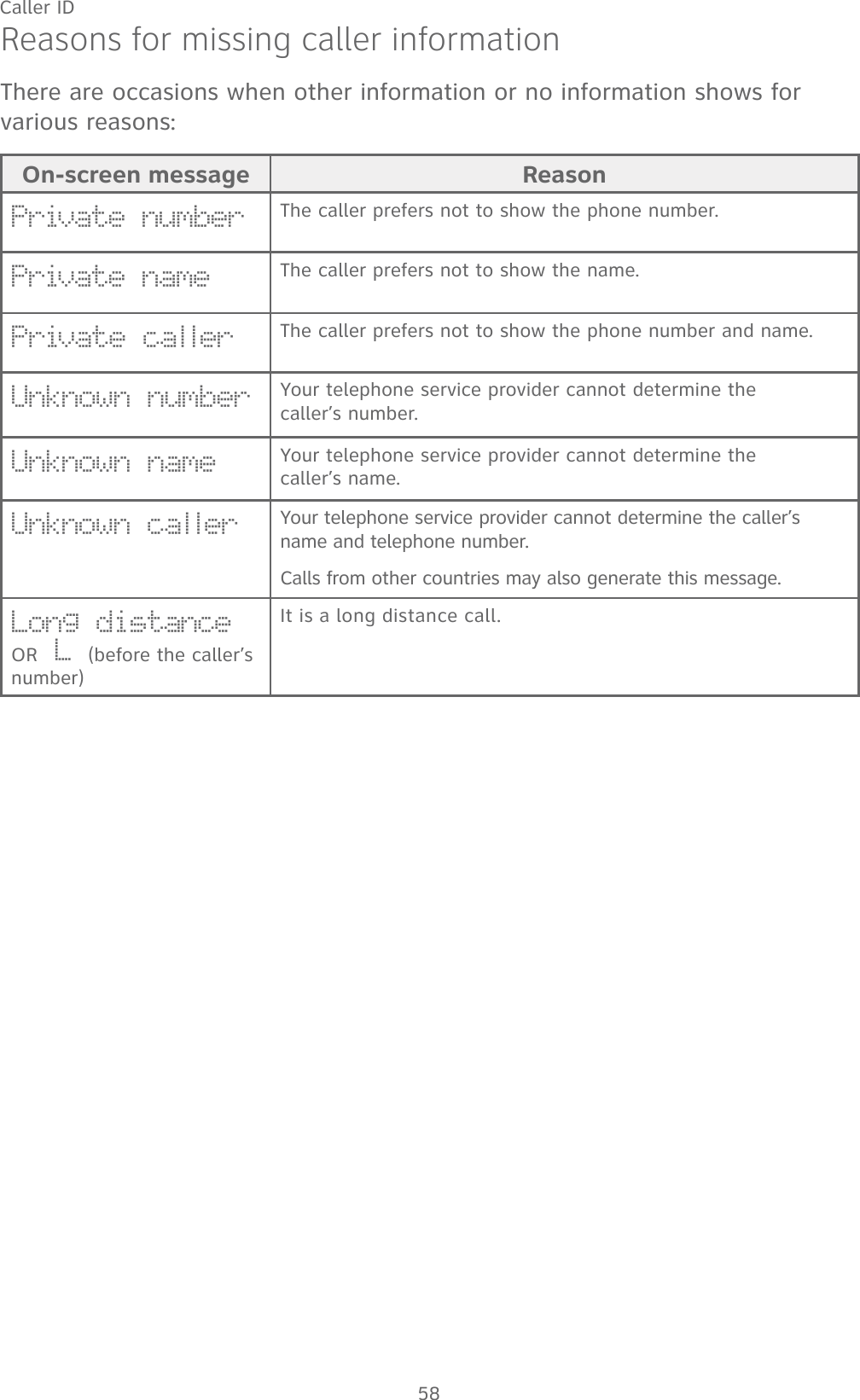
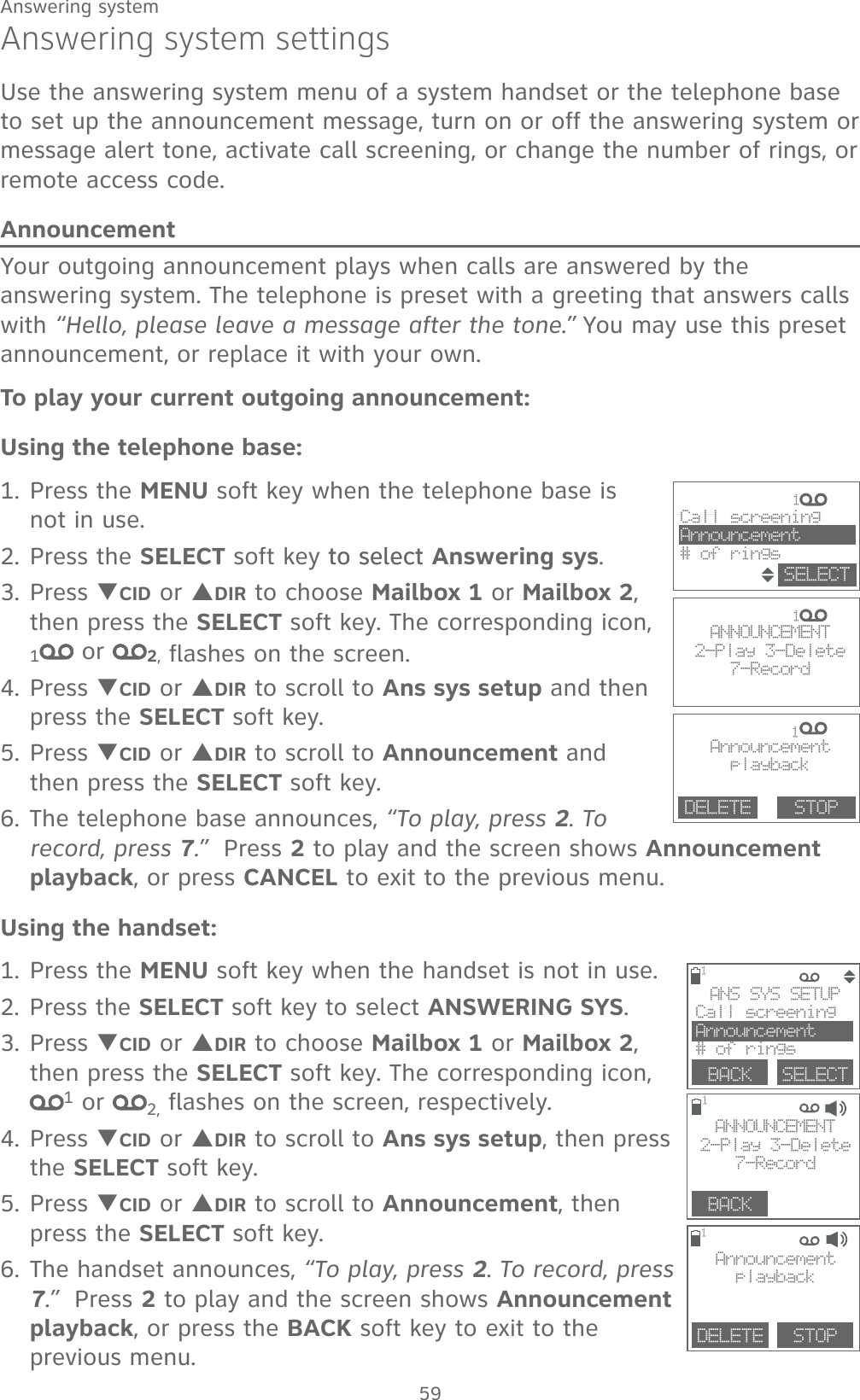
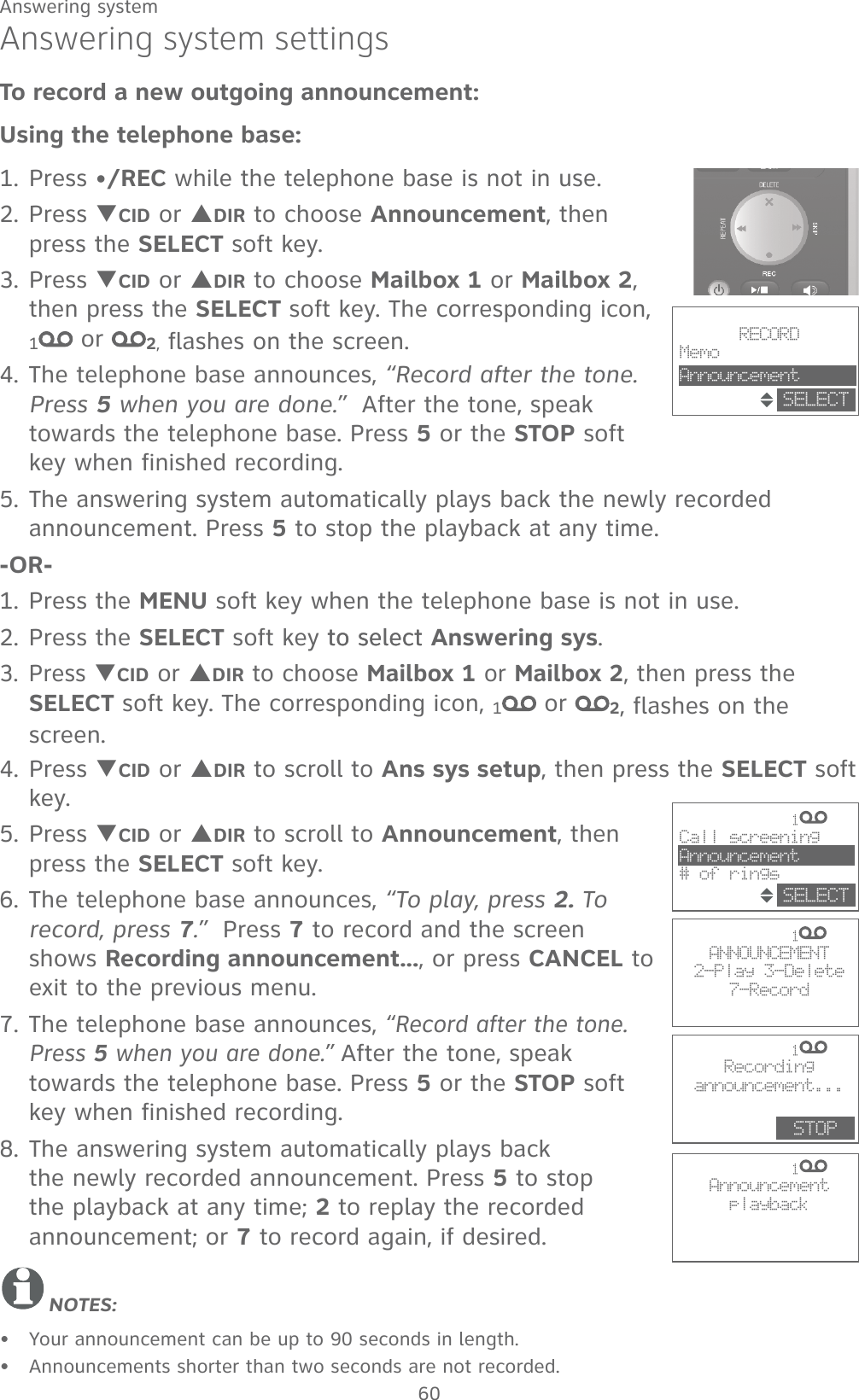
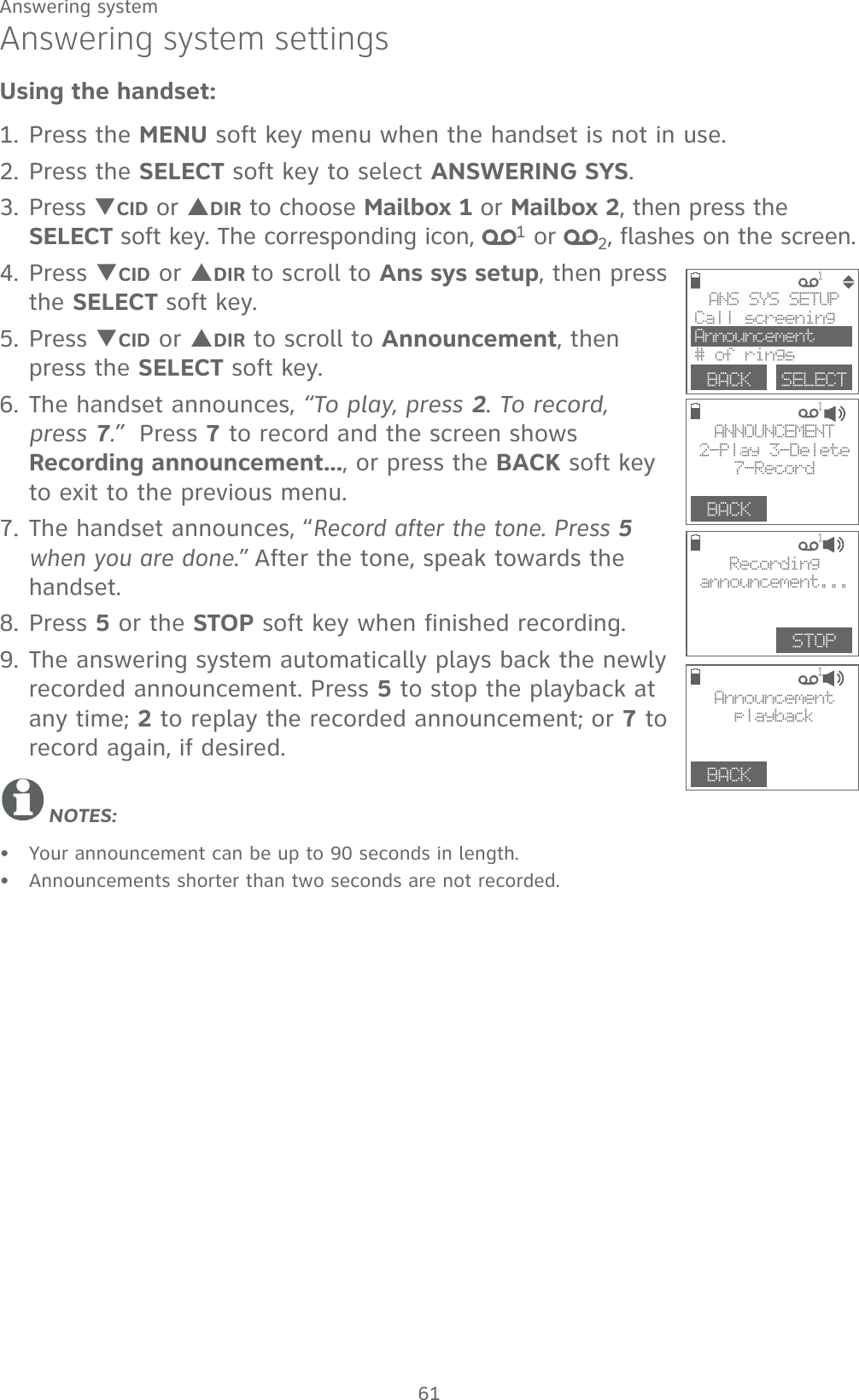
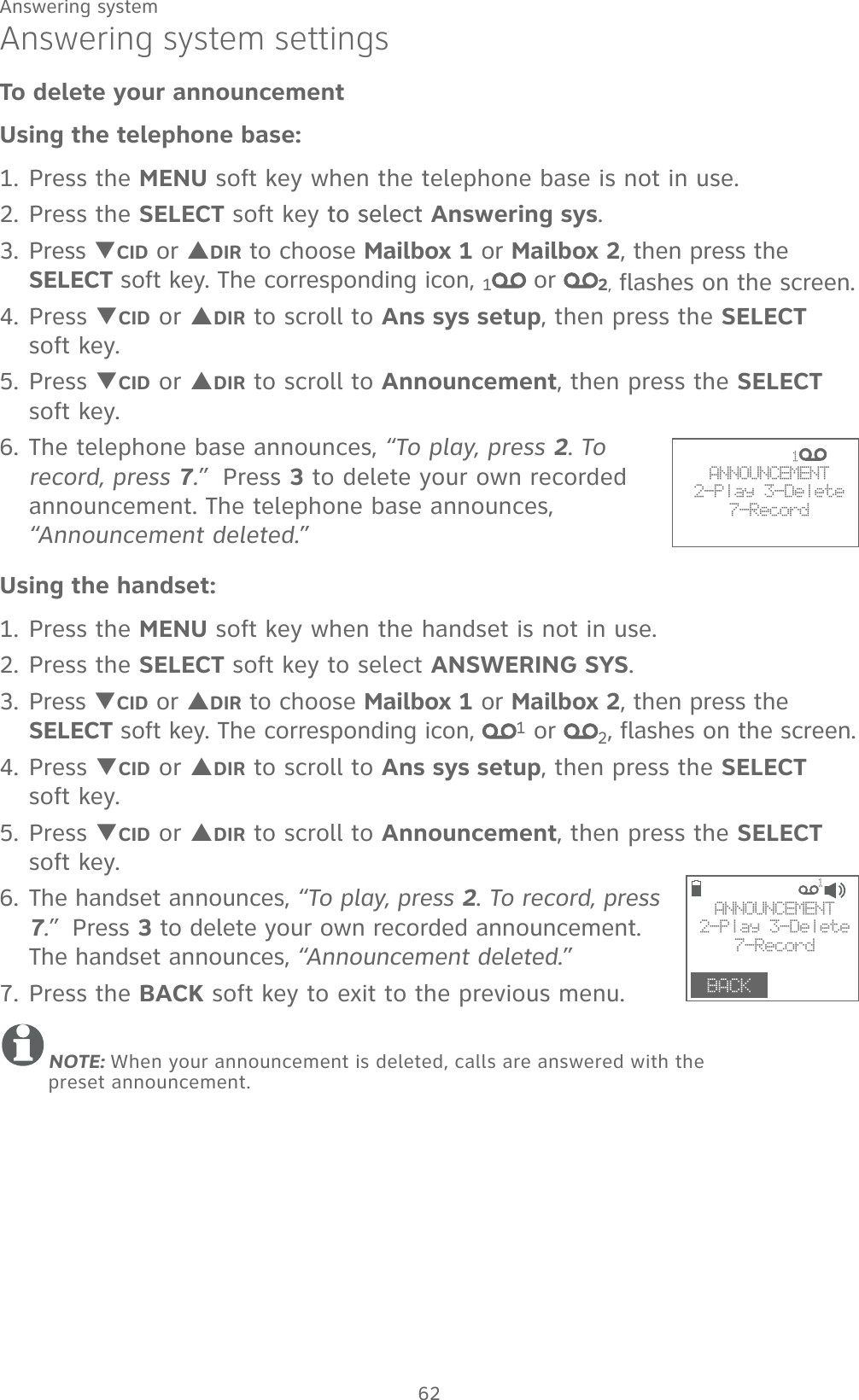
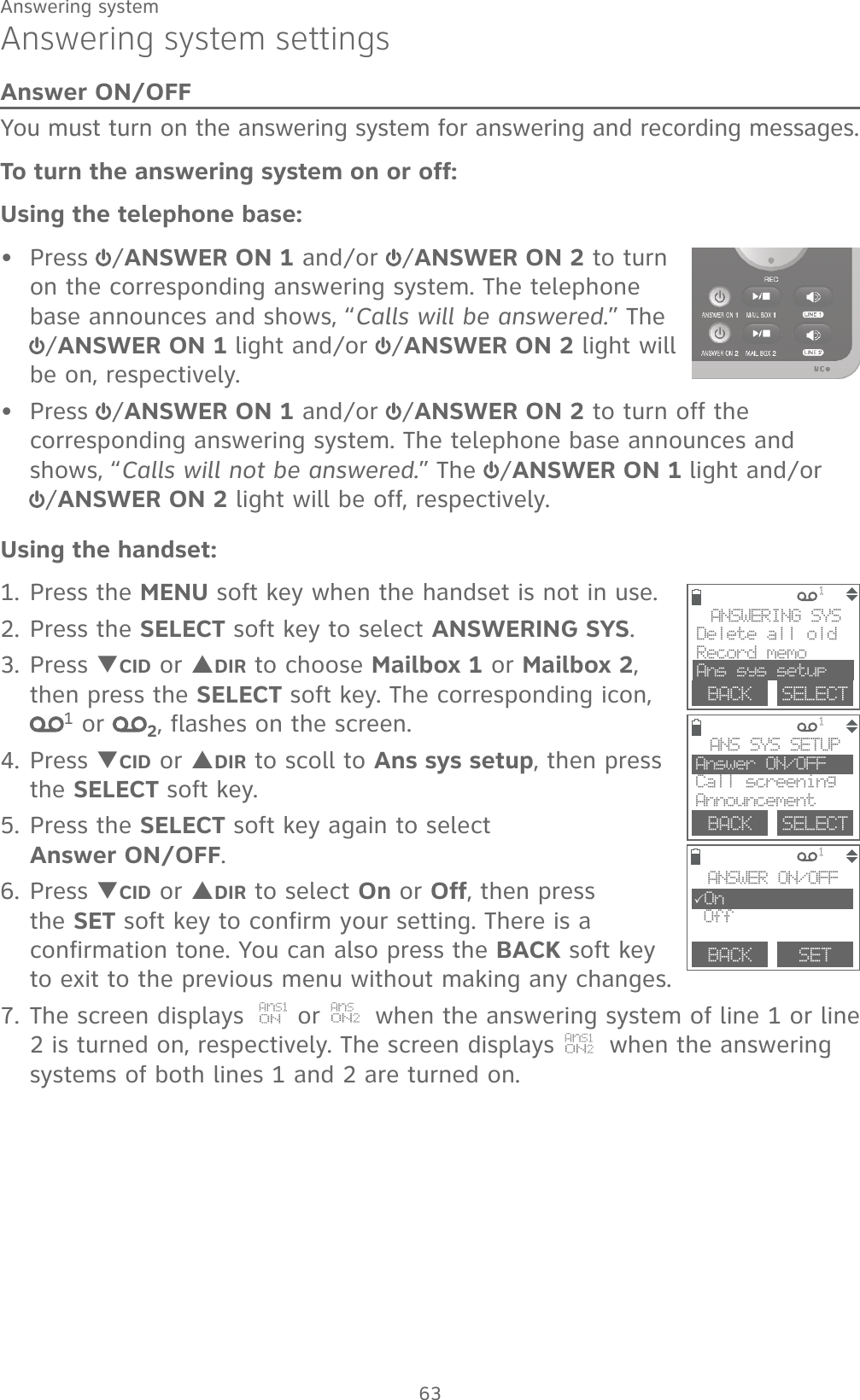
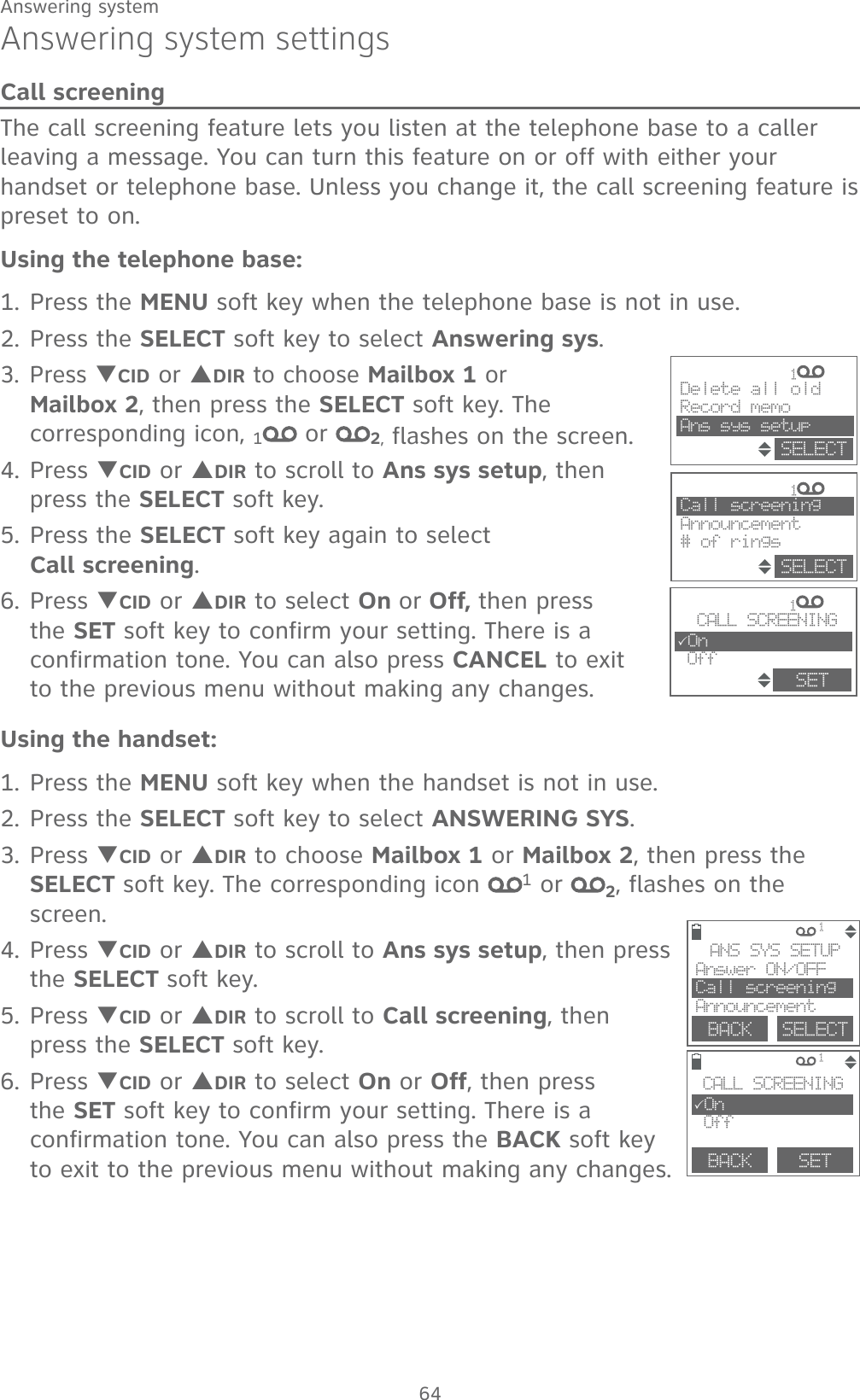
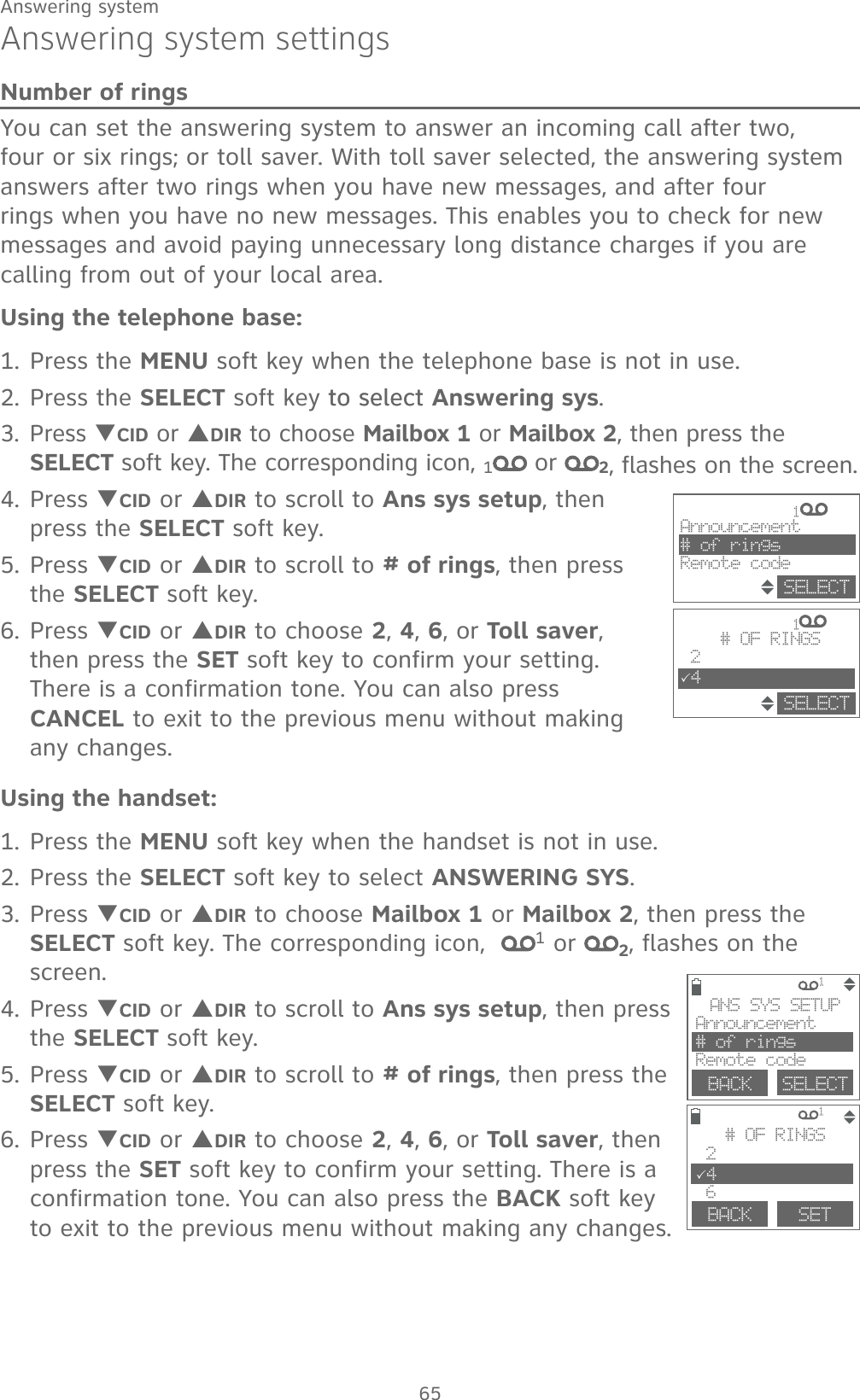
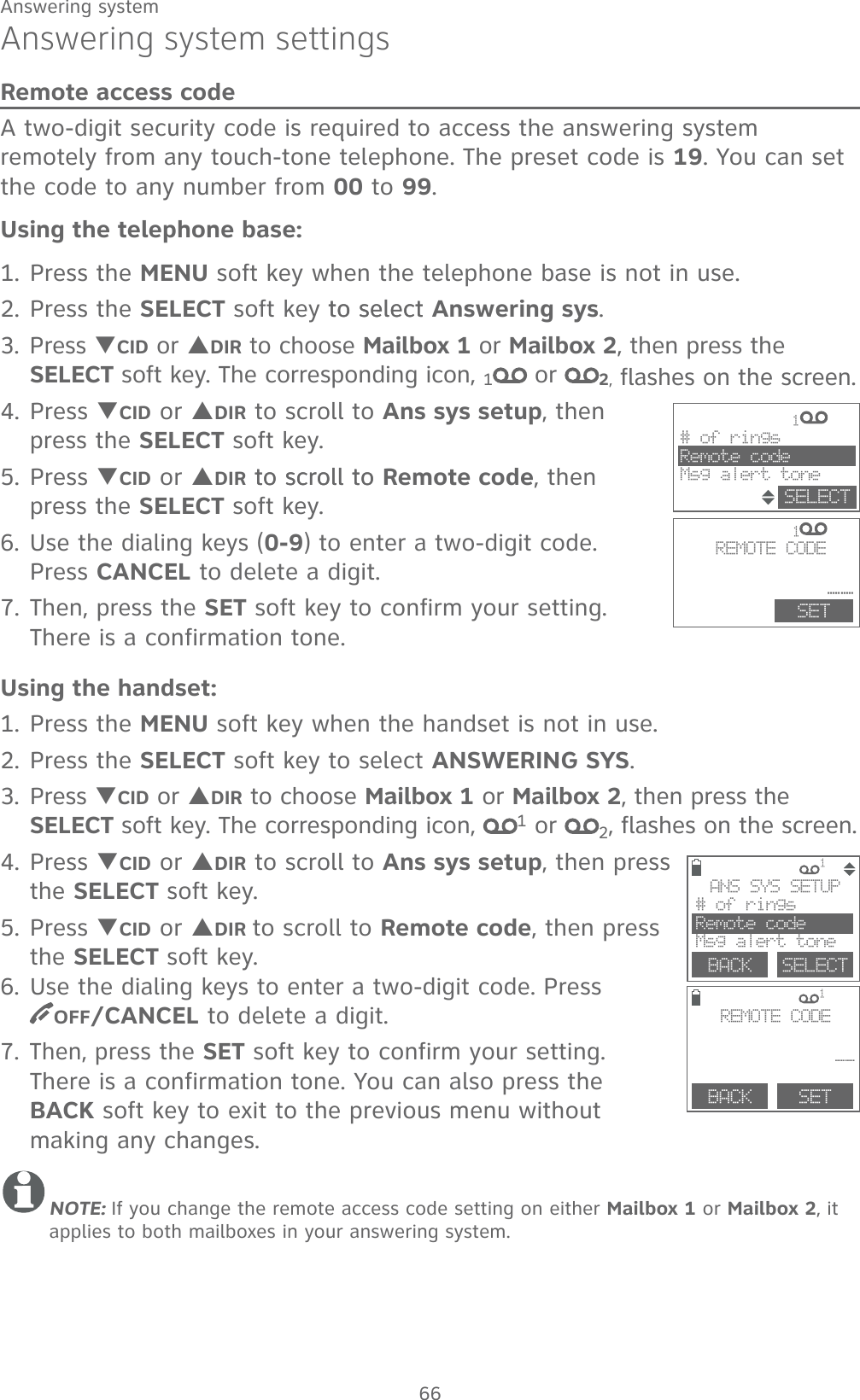
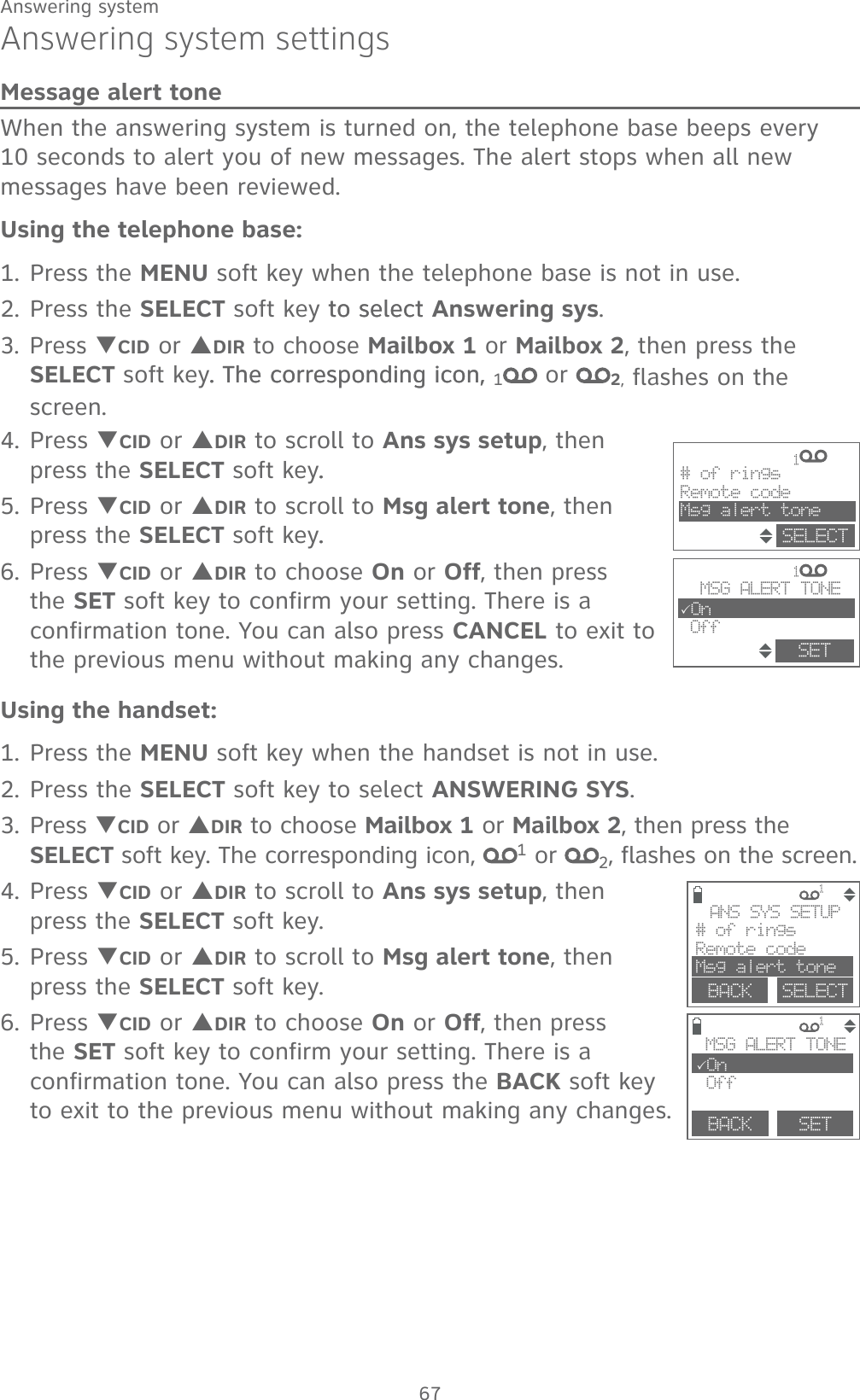
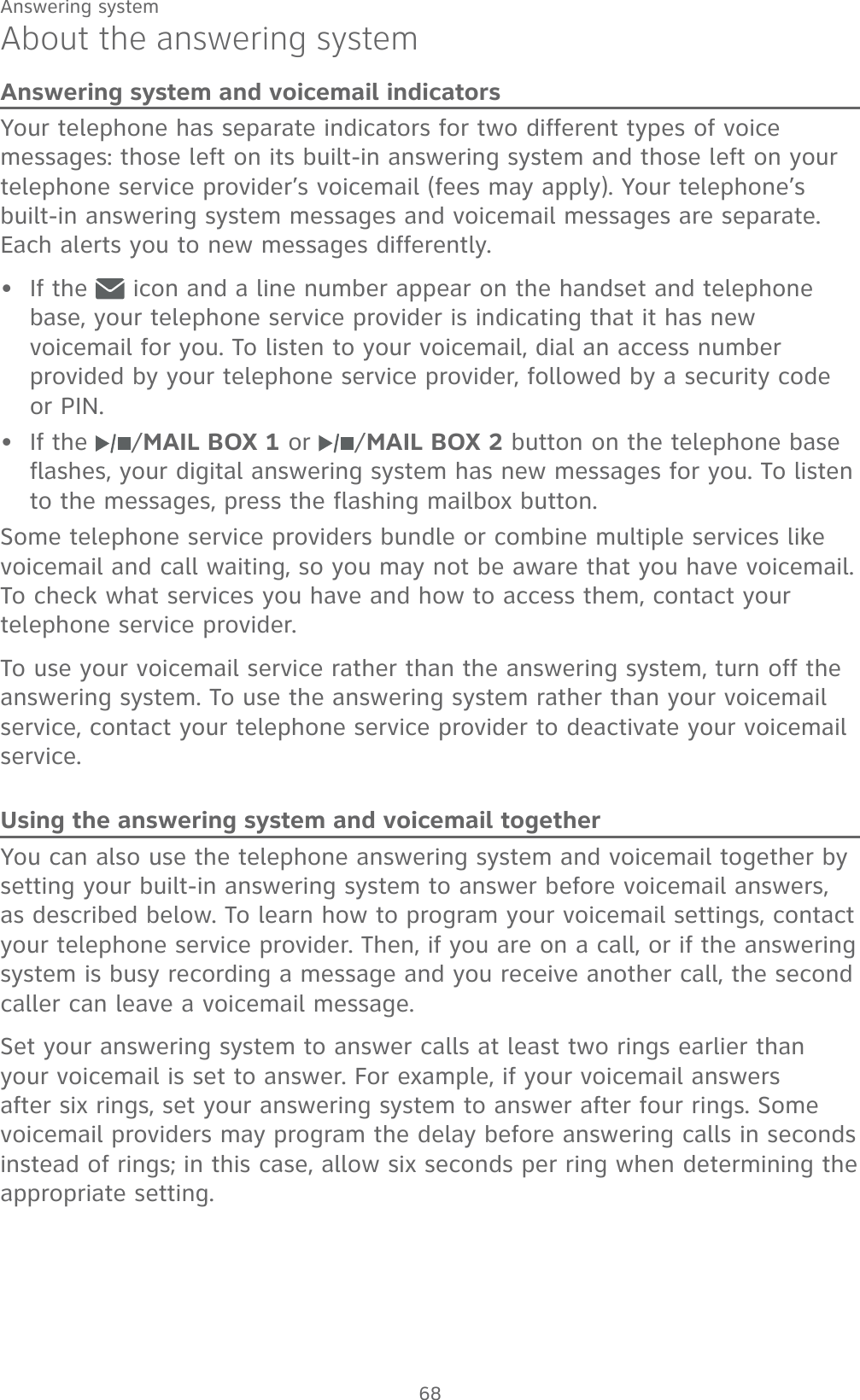
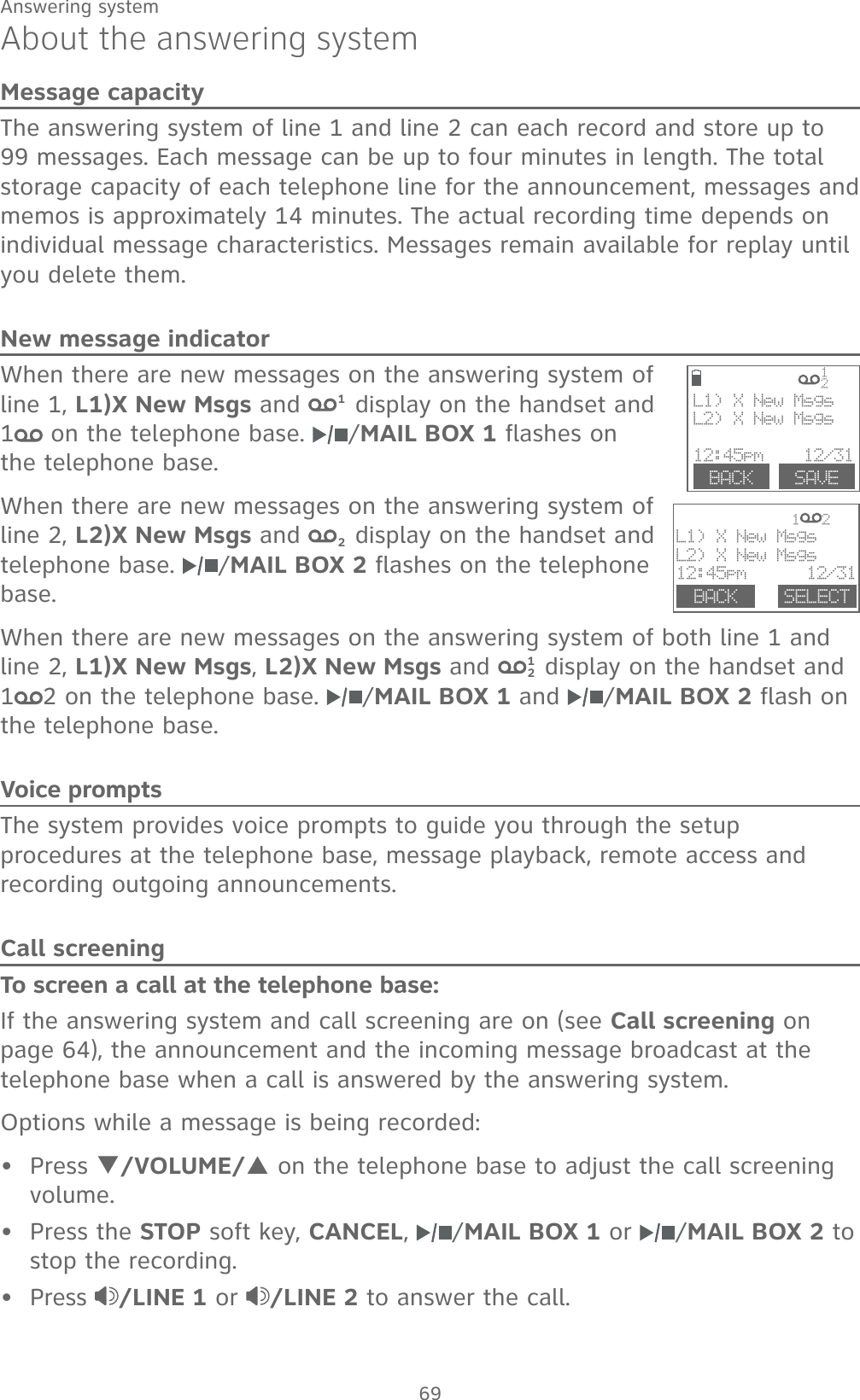

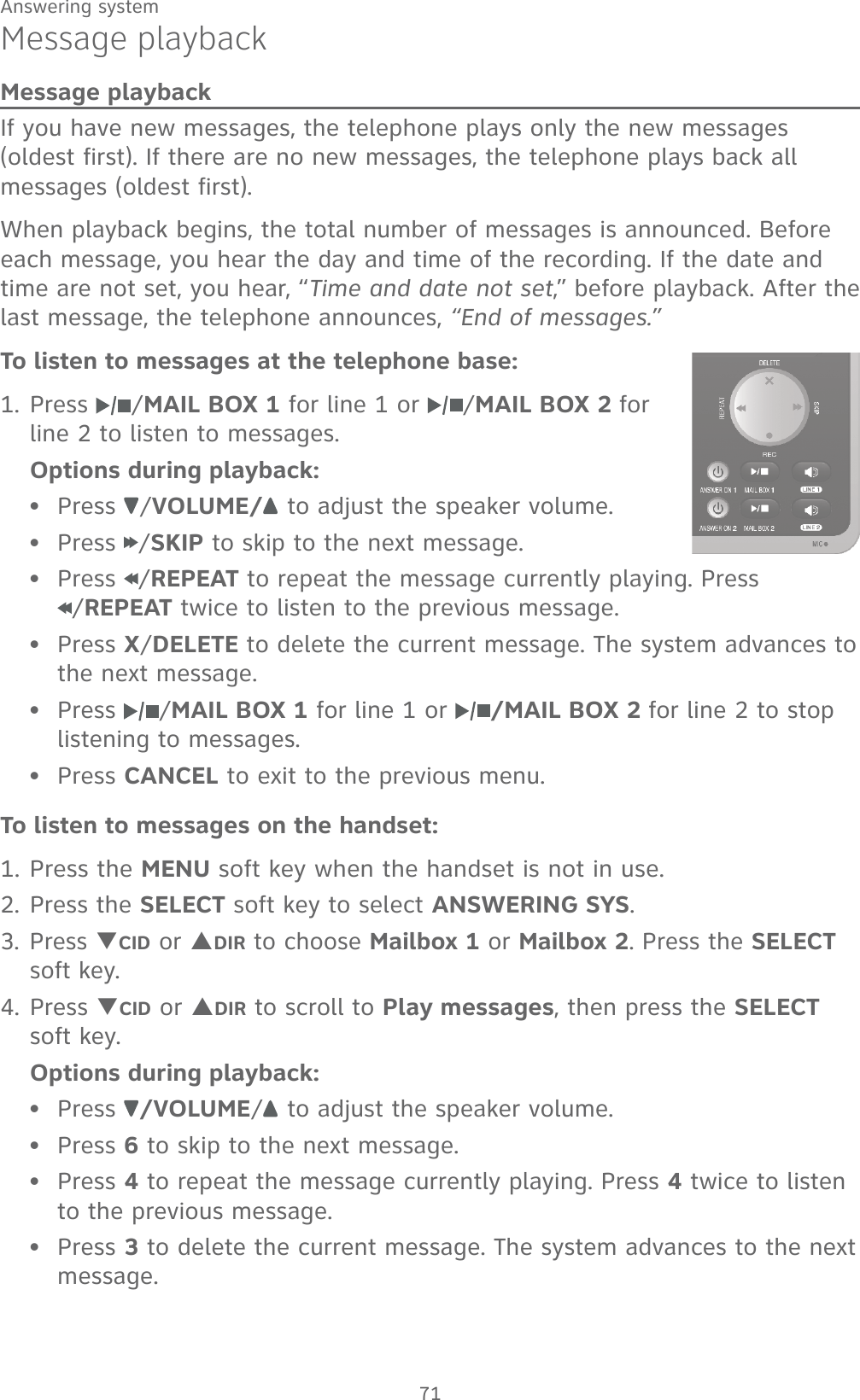
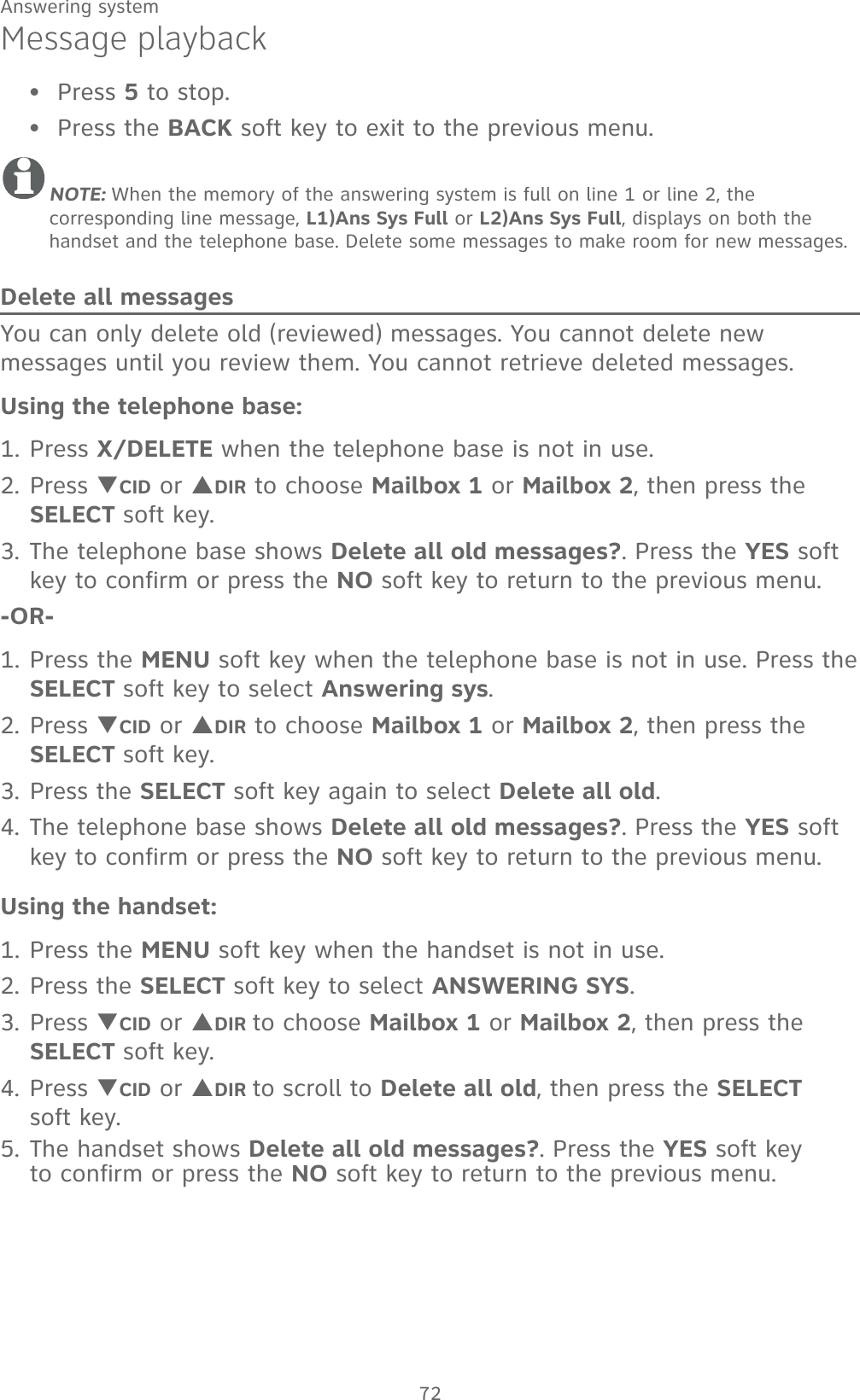
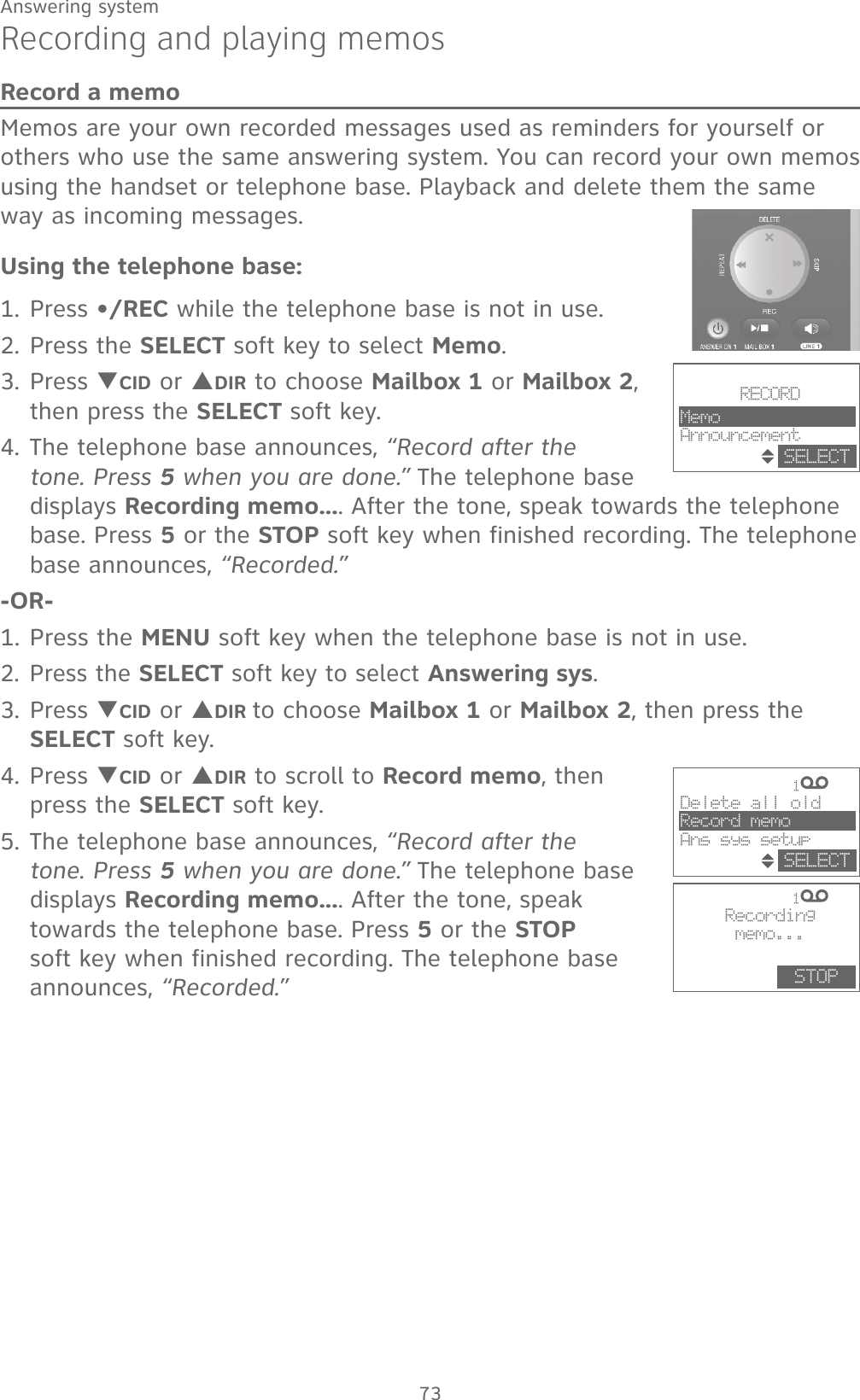
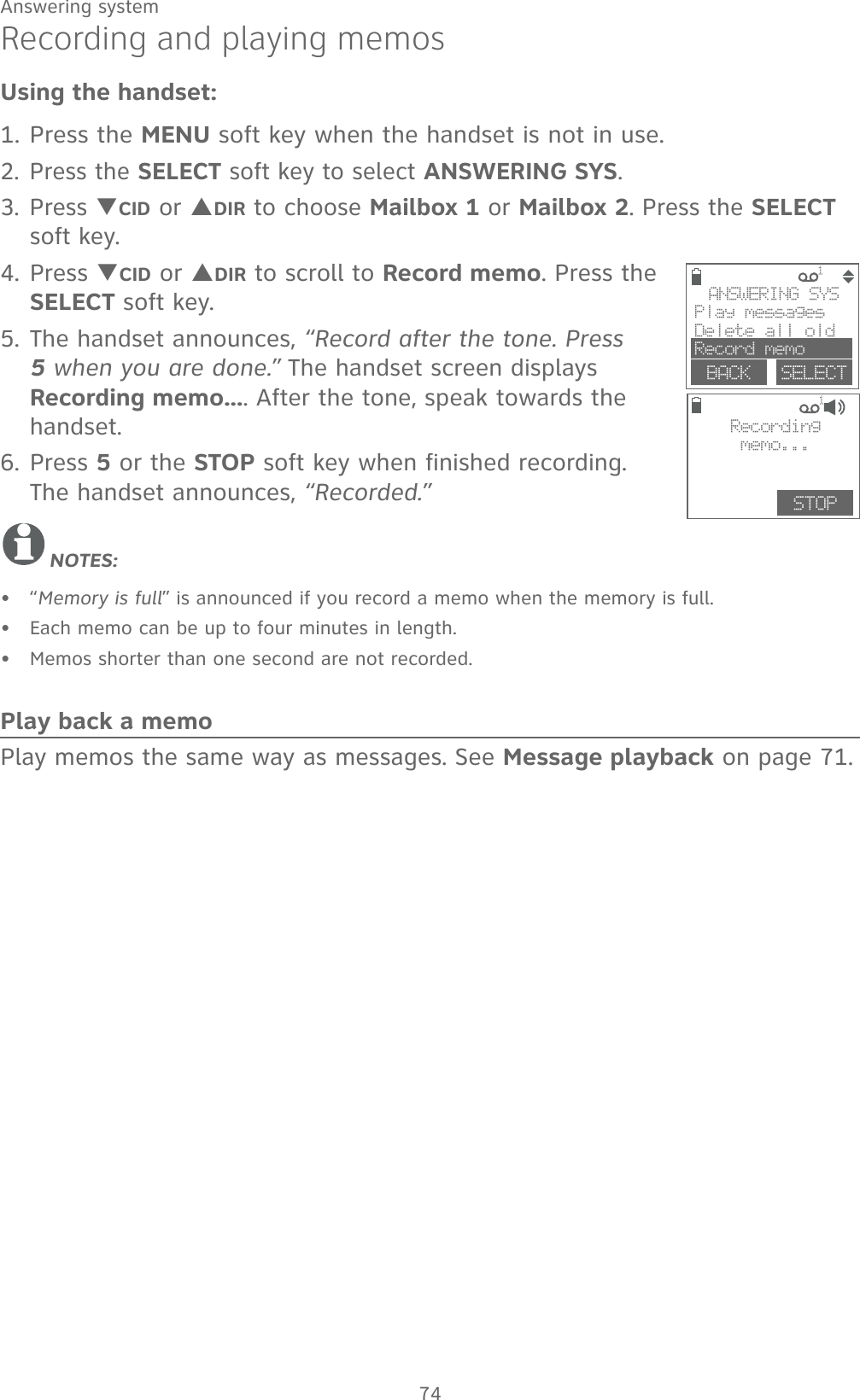
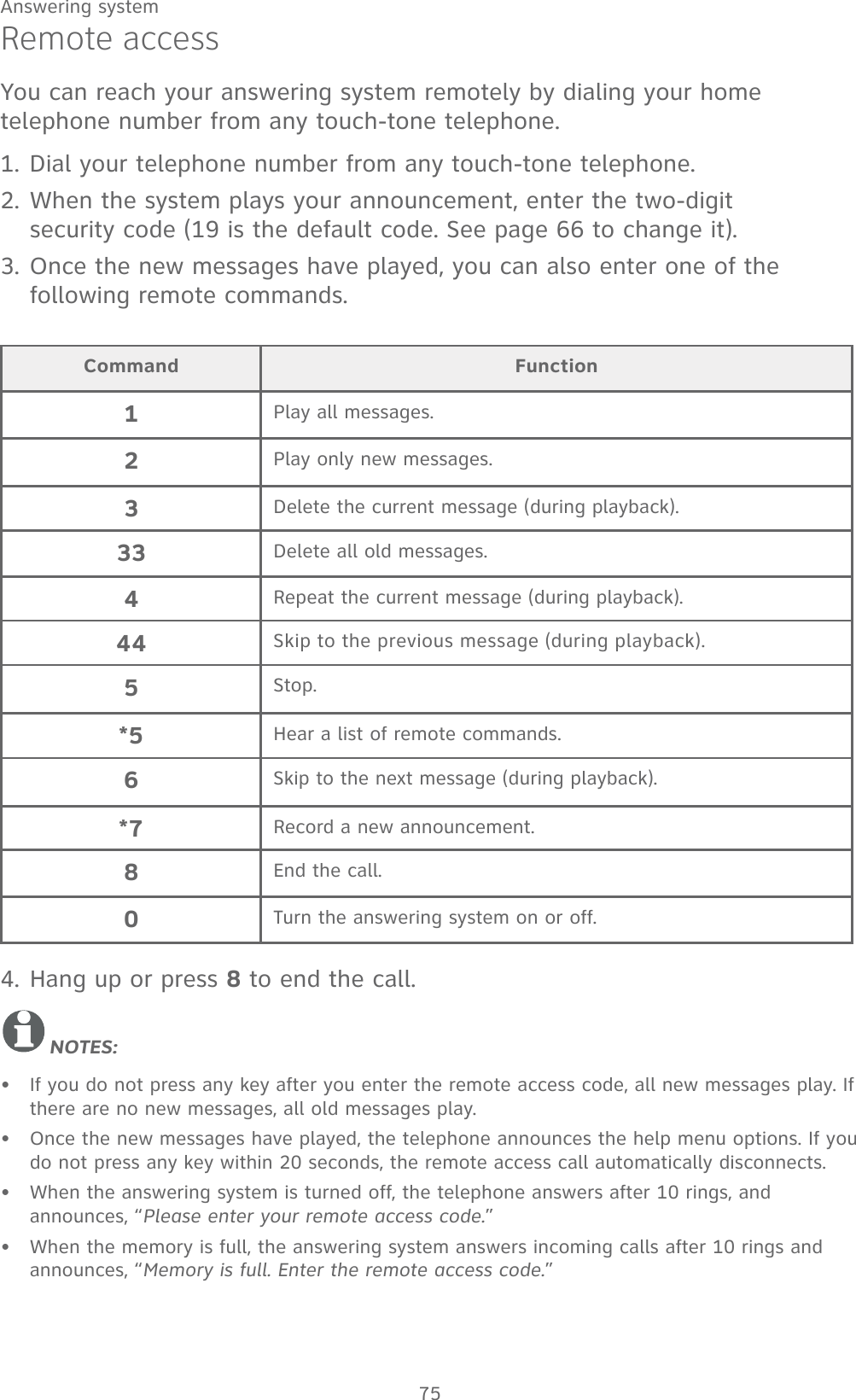
![76Adding and registering handsetsThe handset provided with your telephone system is already registered as HANDSET. Additional handsets registered to the telephone system are assigned in sequential order. If you register another new handset to your telephone system, the new registered handset is assigned HANDSET 2. Then, your first handset is renamed as HANDSET 1. This telephone system accommodates up to 12 handsets.You can add new handsets (TL88002, purchased separately) to your telephone system, but each handset must be registered with the telephone base before use. When first purchased, each expansion handset shows Press [HOLD] on base for 4 sec, then press [#] on handset. You may need to charge the handset before registering to the telephone base. For more details on battery charging, see the table on page 8.Register a handset to the telephone base1. Before you begin registration, make sure the handset displays Press [HOLD] on base for 4 sec, then press [#] on handset.2. Place the unregistered handset in the telephone base. 3. Press and hold HOLD on the telephone base for about four seconds until the telephone base displays Registering handset.... Then, release the HOLD button. While the handset is still in the telephone base, press # (pound key) on the handset. The handset shows Registering... Please wait and it takes up to 60 seconds to complete the registration. The handset and the telephone base show HANDSET X Registered (X represents the handset number assigned) and you hear a beep when the registration completes.NOTES:If the registration fails, the handset shows Registration failed. To reset the handset, unplug the power from the telephone base and the battery from the handset for a few seconds, then plug them back in. Try the registration process again.You cannot register a handset if any other system handset is in use.••Appendix#HOLD](https://usermanual.wiki/VTech-Telecommunications/80-7009-01.User-manual/User-Guide-3171755-Page-82.png)
![77AppendixDeregistering handsetsYou may need to deregister your handsets if:You have 12 registered handsets and need to replace a handset.-OR-You wish to change the designated handset number of your registered handsets.You must first deregister ALL handsets, and then register each handset you wish to use again, one at a time. Please read carefully through all the instructions on this page before beginning the deregistration process.Deregister all handsets from the telephone base1. Remove any handset from the telephone base. Press and hold HOLD on the telephone base for about 10 seconds until the telephone base displays Deregister all handsets?. Release the HOLD button.2. Press the YES soft key. There is a confirmation tone.3. The deregistration process takes about 10 seconds to complete. All handsets show Press [HOLD] on base for 4 sec, then press [#] on handset when the deregistration completes.If deregistration fails, you may need to reset the telephone and try again.To reset:1. Pick up the registered handset and then press LINE 1/FLASH or LINE 2/FLASH. 2. Press OFF/CANCEL and then place the handset back in the telephone base.-OR-Unplug the power adapter from the telephone base, then plug it back in.NOTES:You cannot deregister a handset if any system handset or telephone base is in use.Even if the battery is depleted, you can still deregister the handsets by following the steps mentioned above. After the handset is charged for at least 10 minutes, the screen shows Press [HOLD] on base for 4 sec, then press [#] on handset.••••](https://usermanual.wiki/VTech-Telecommunications/80-7009-01.User-manual/User-Guide-3171755-Page-83.png)
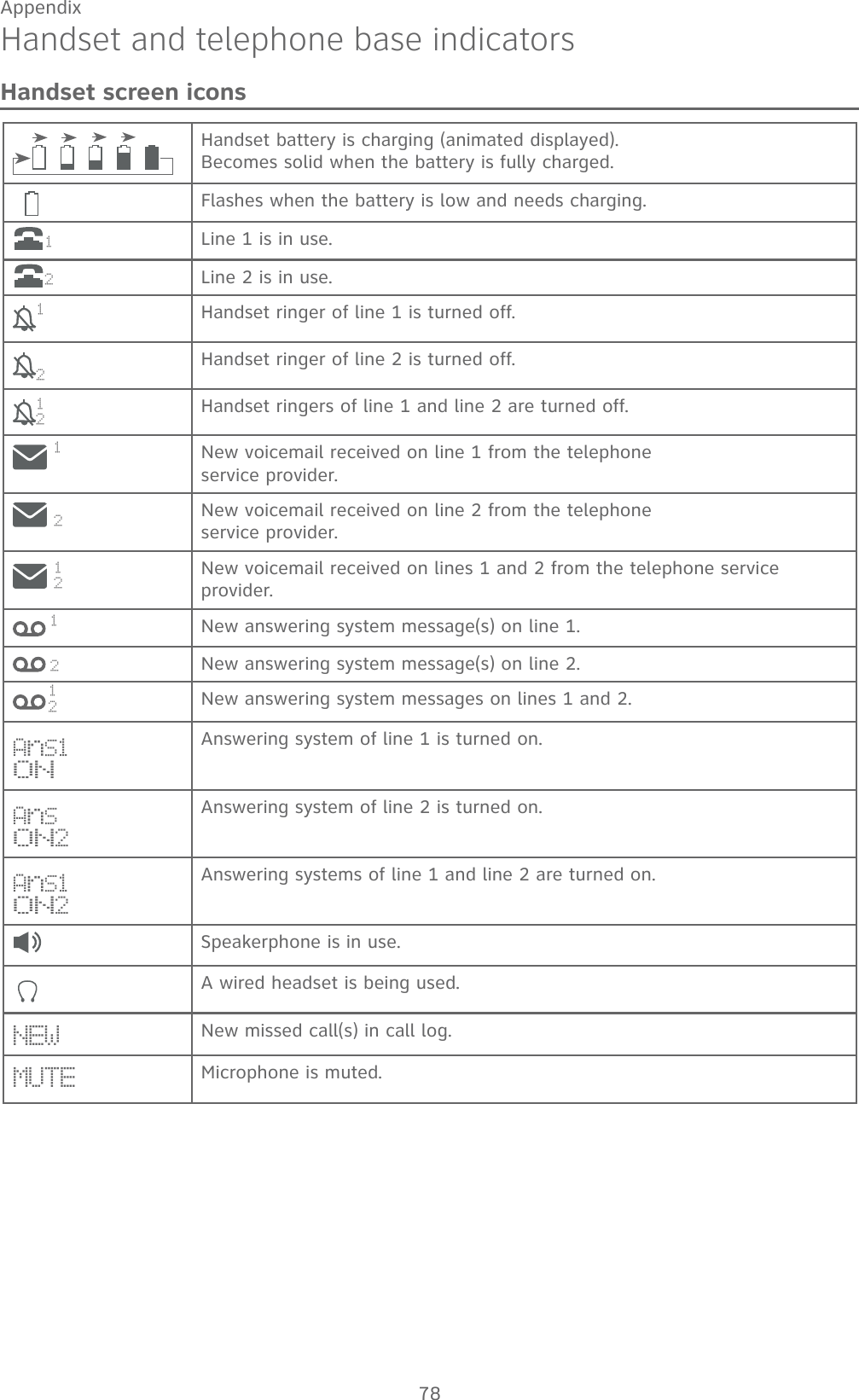
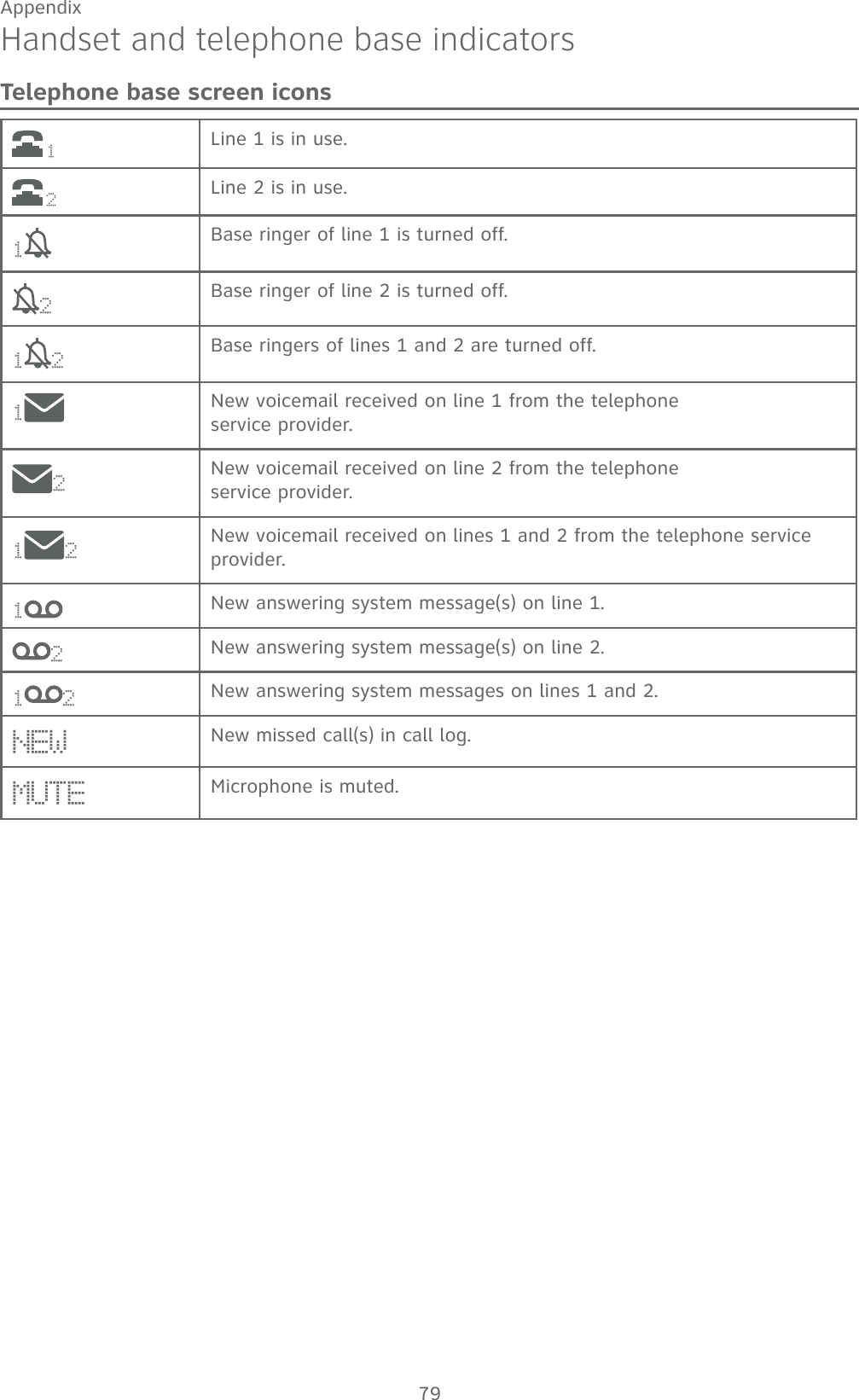
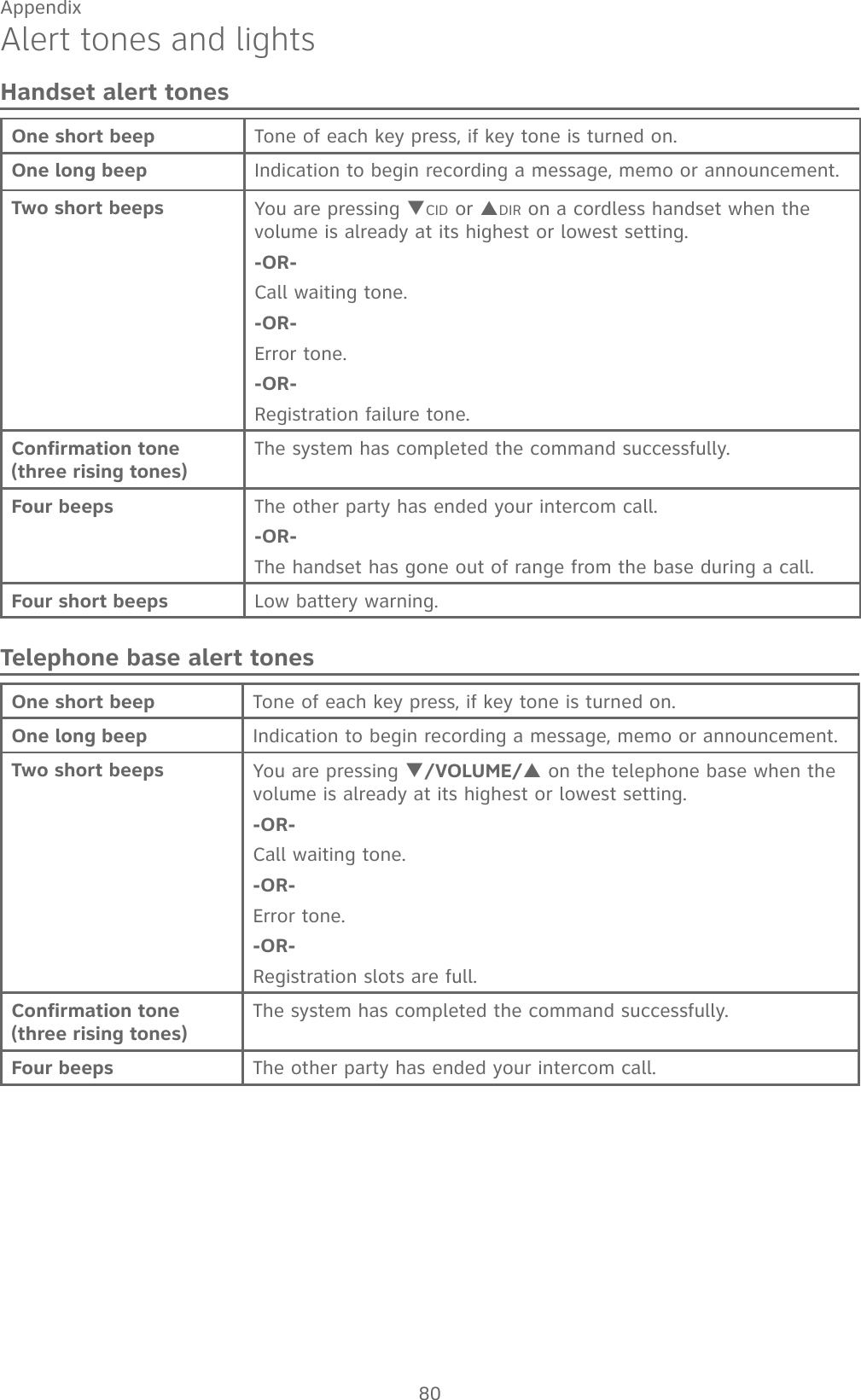
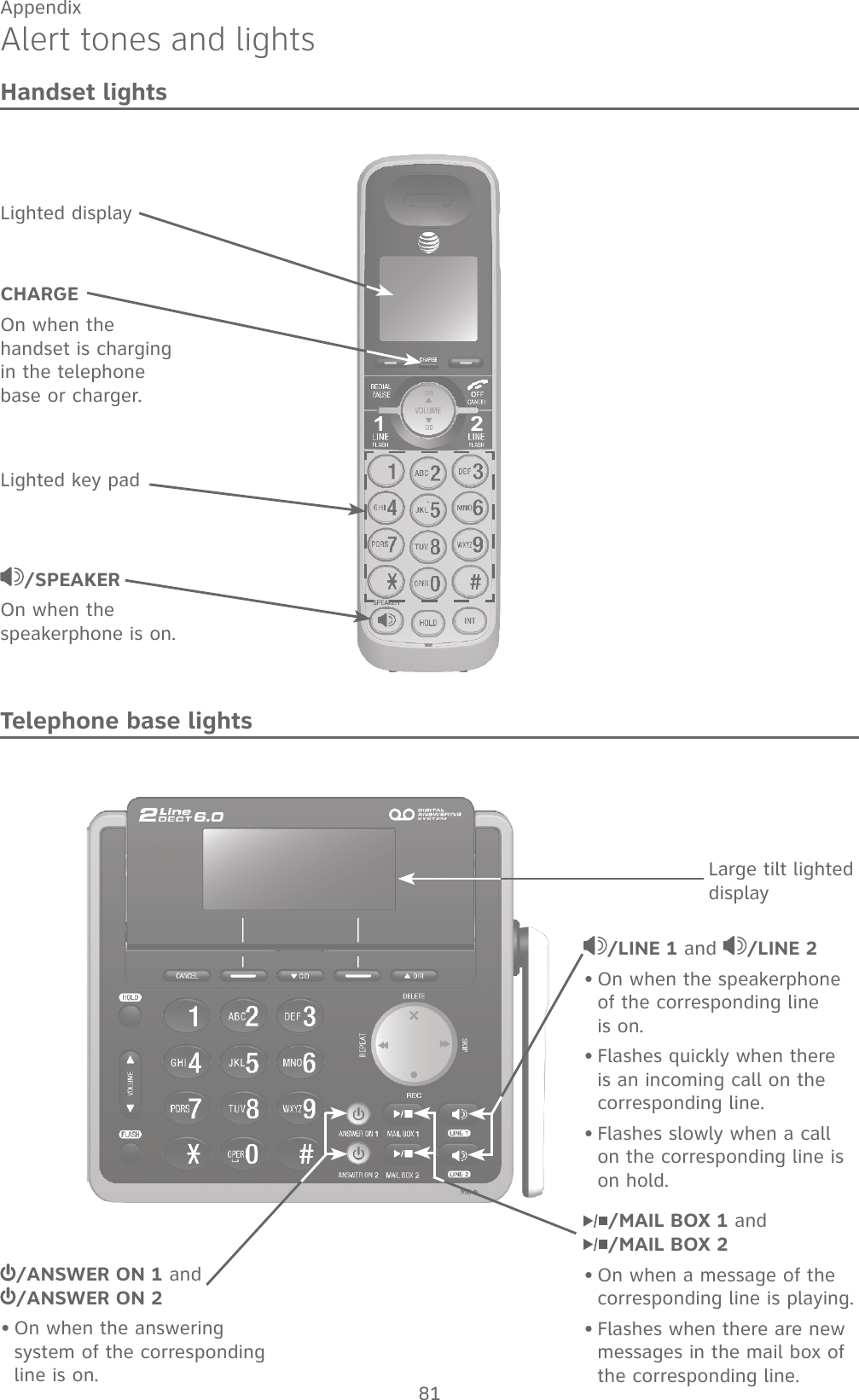
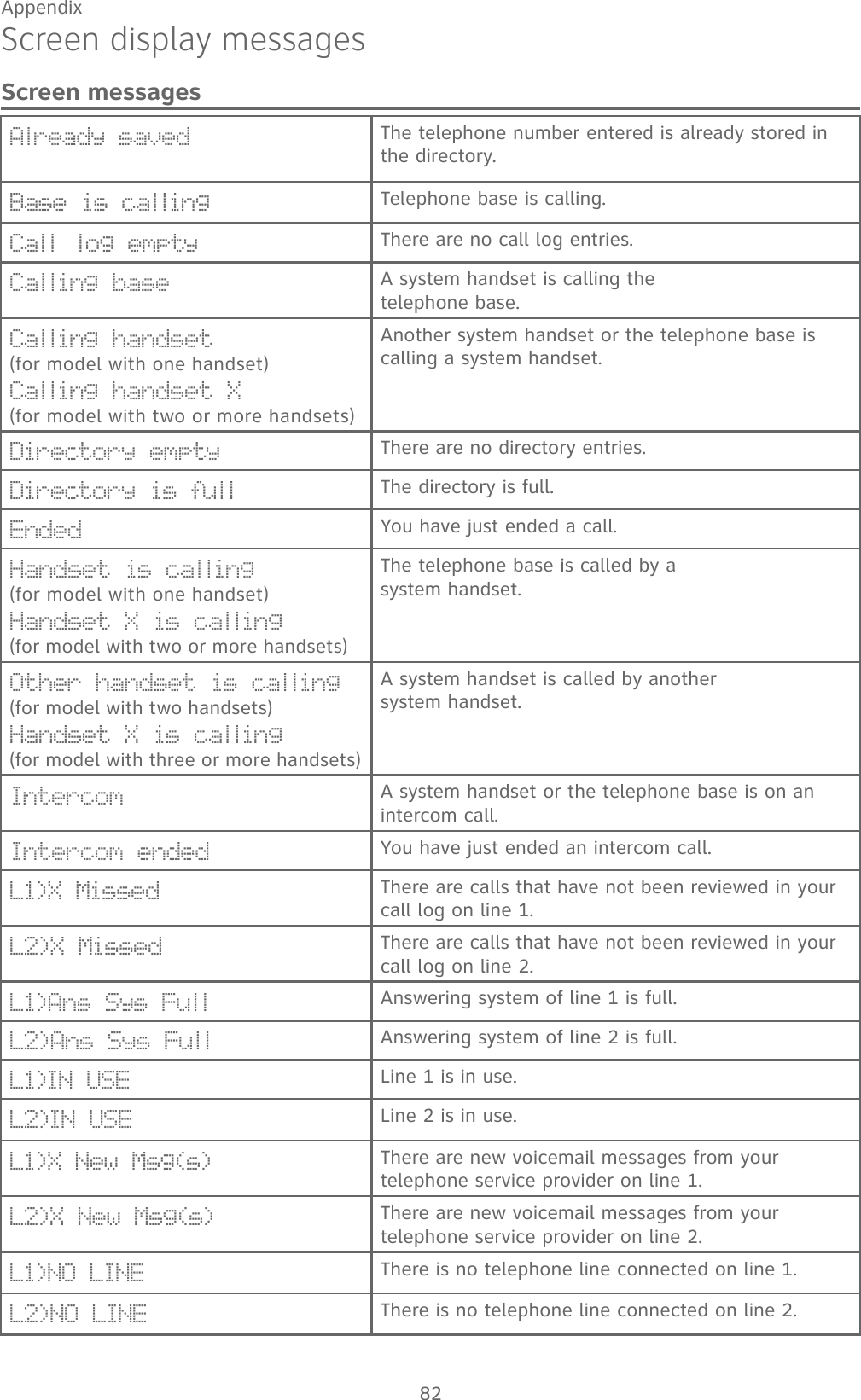
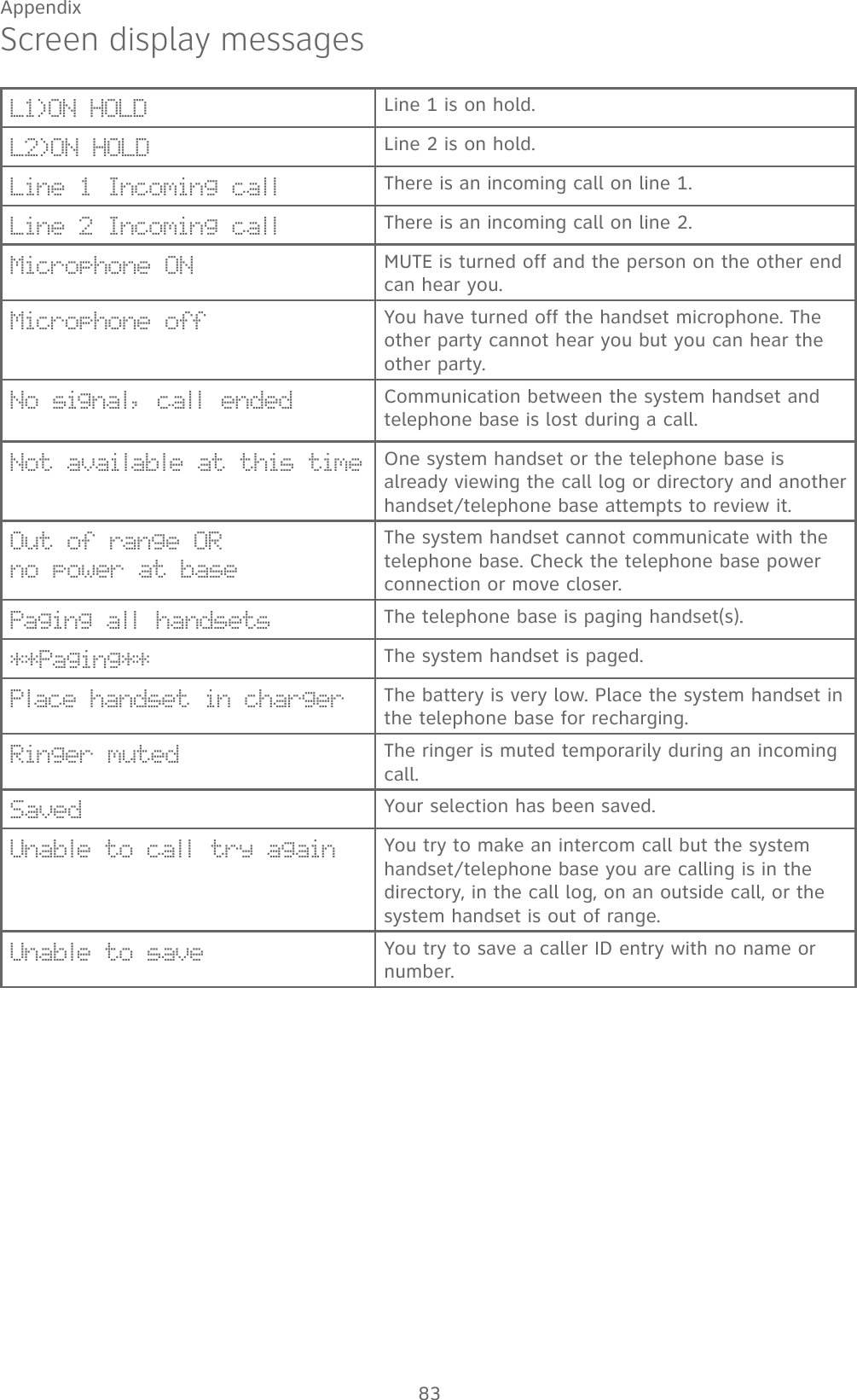
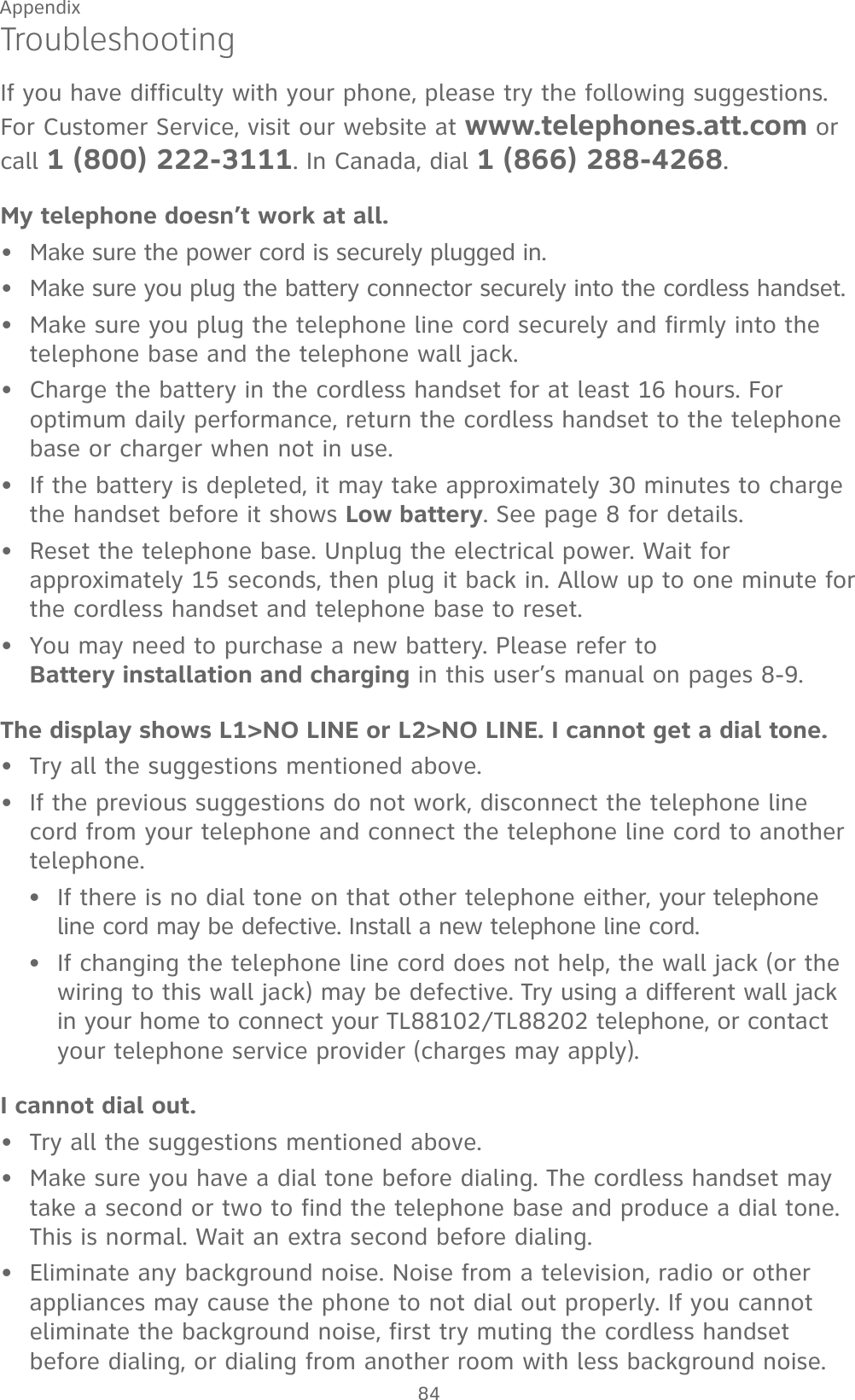
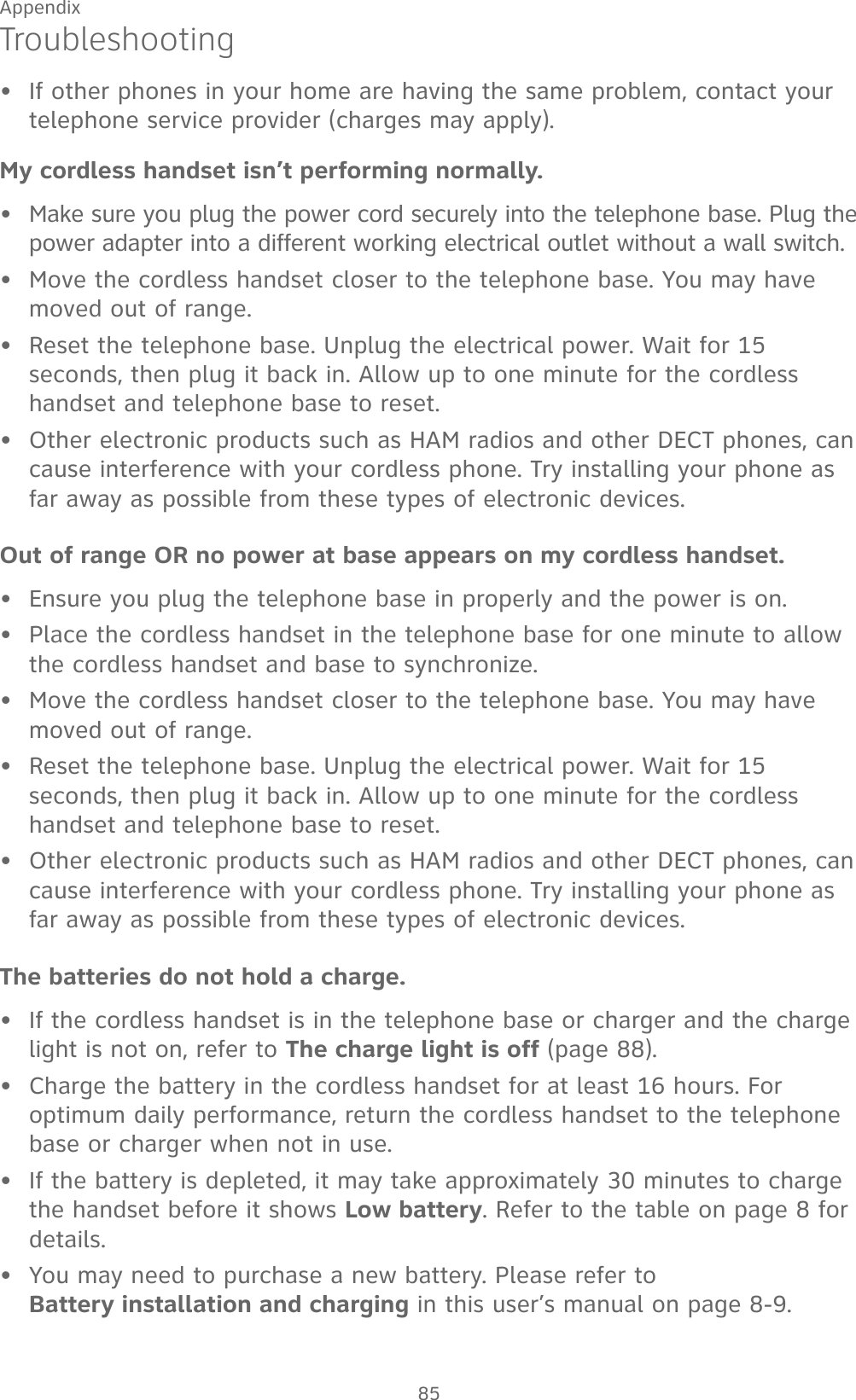
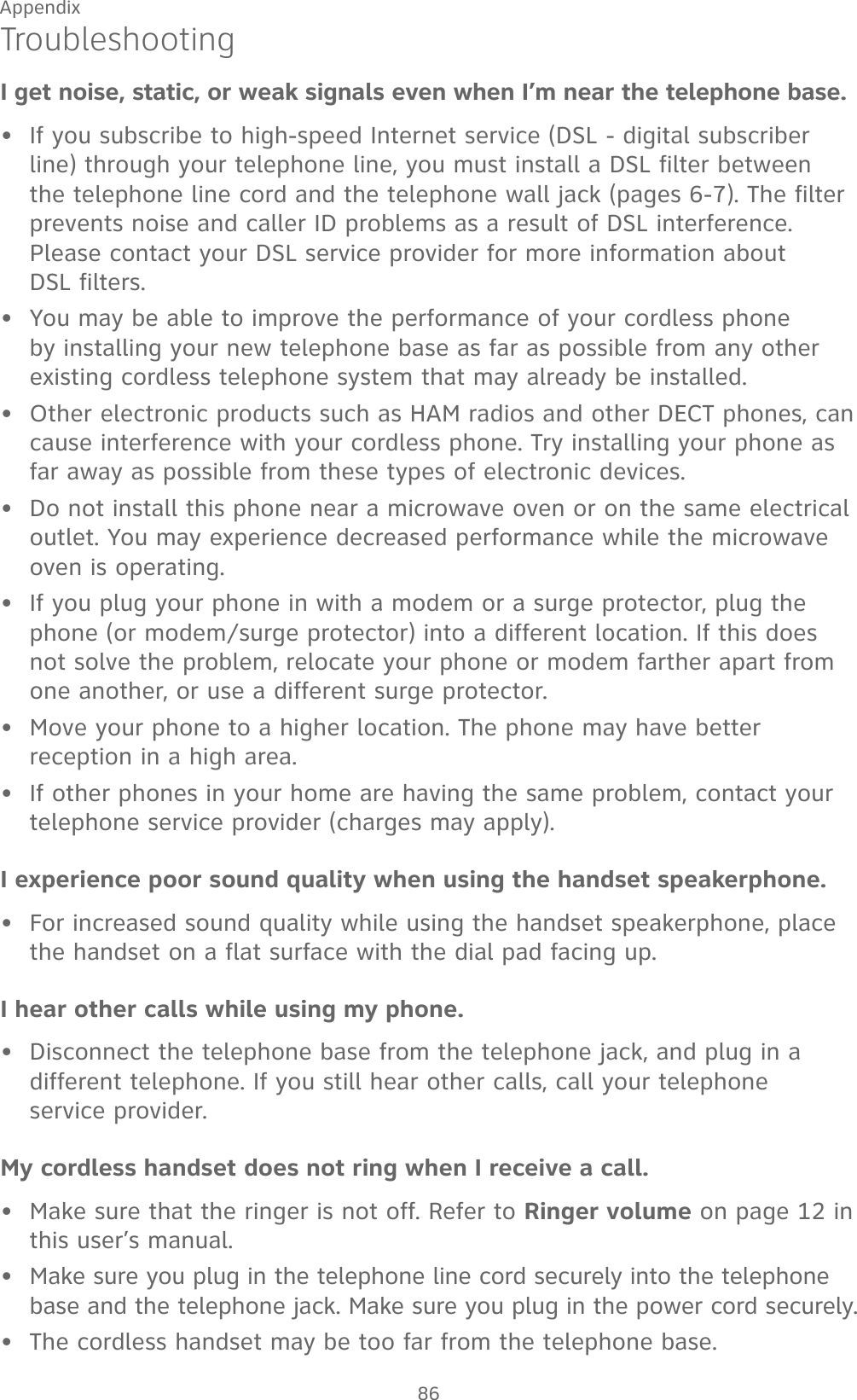
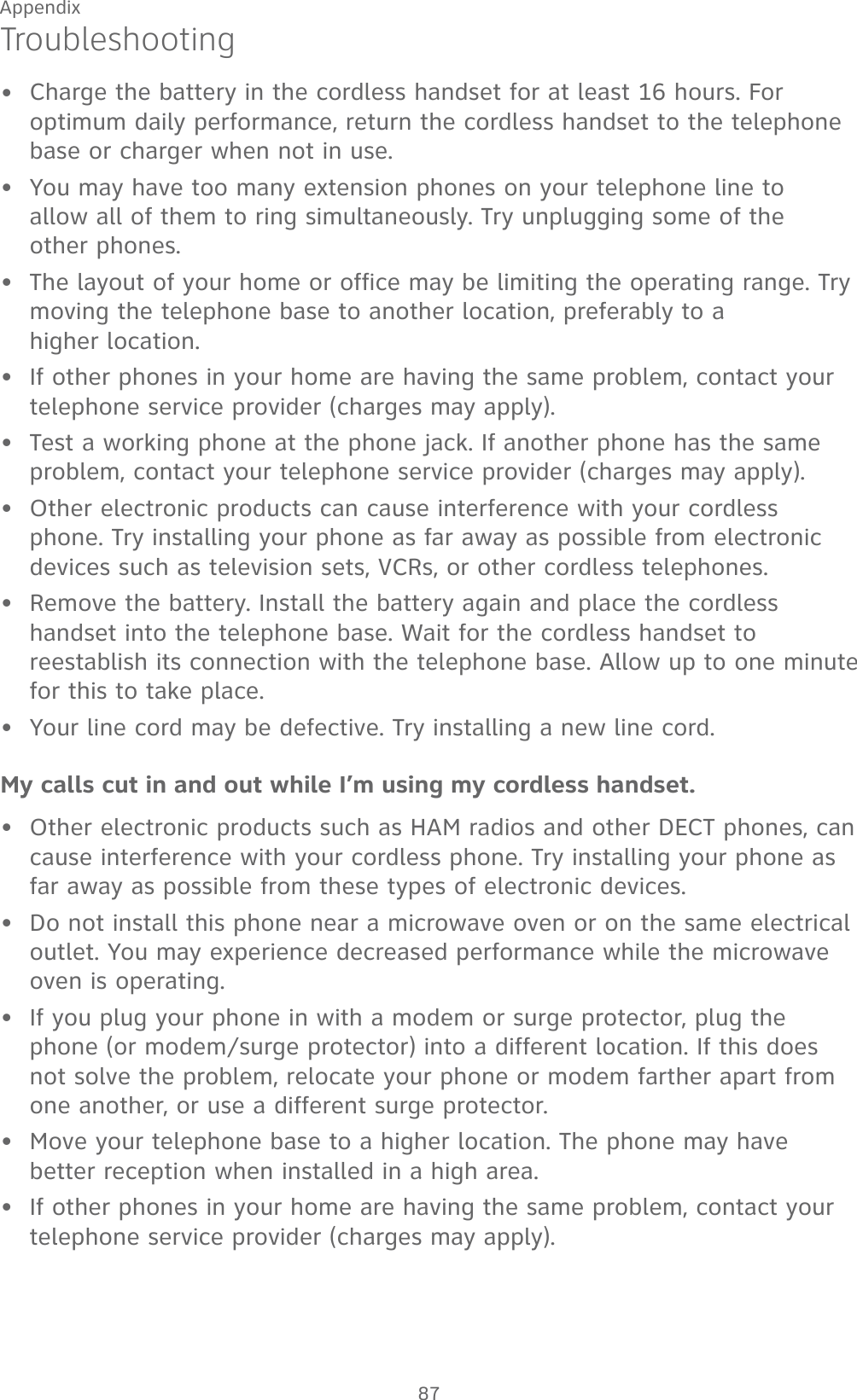
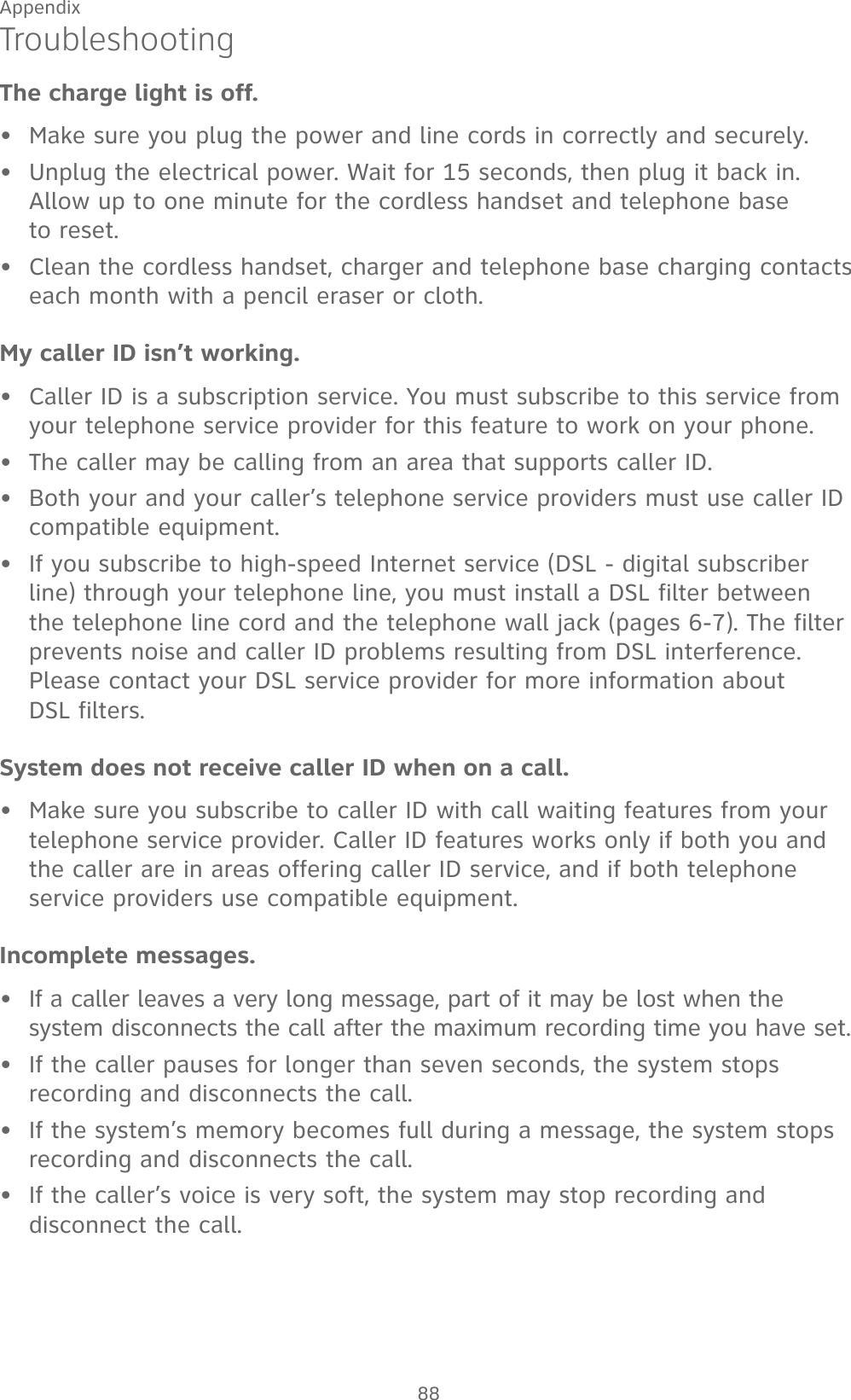

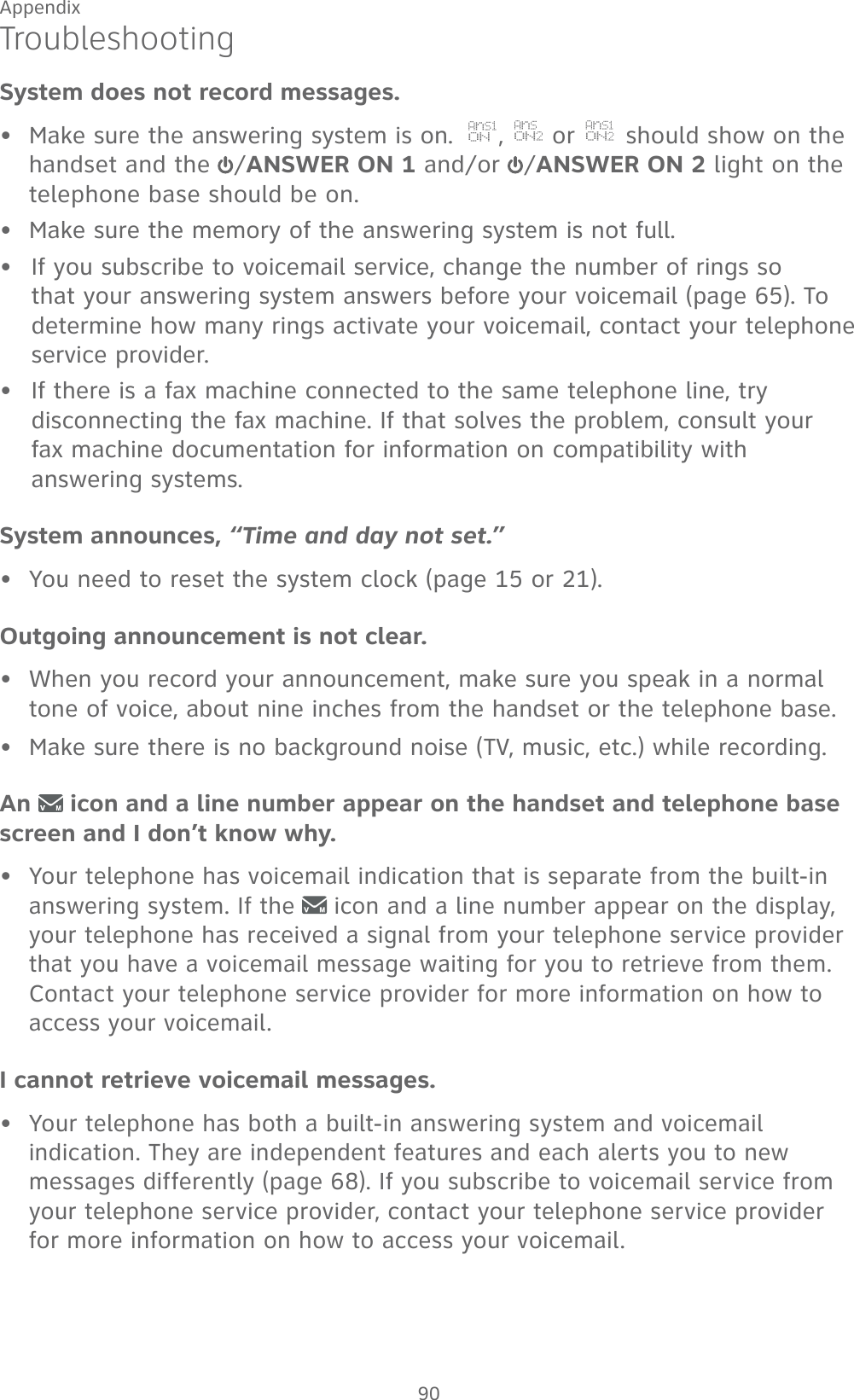
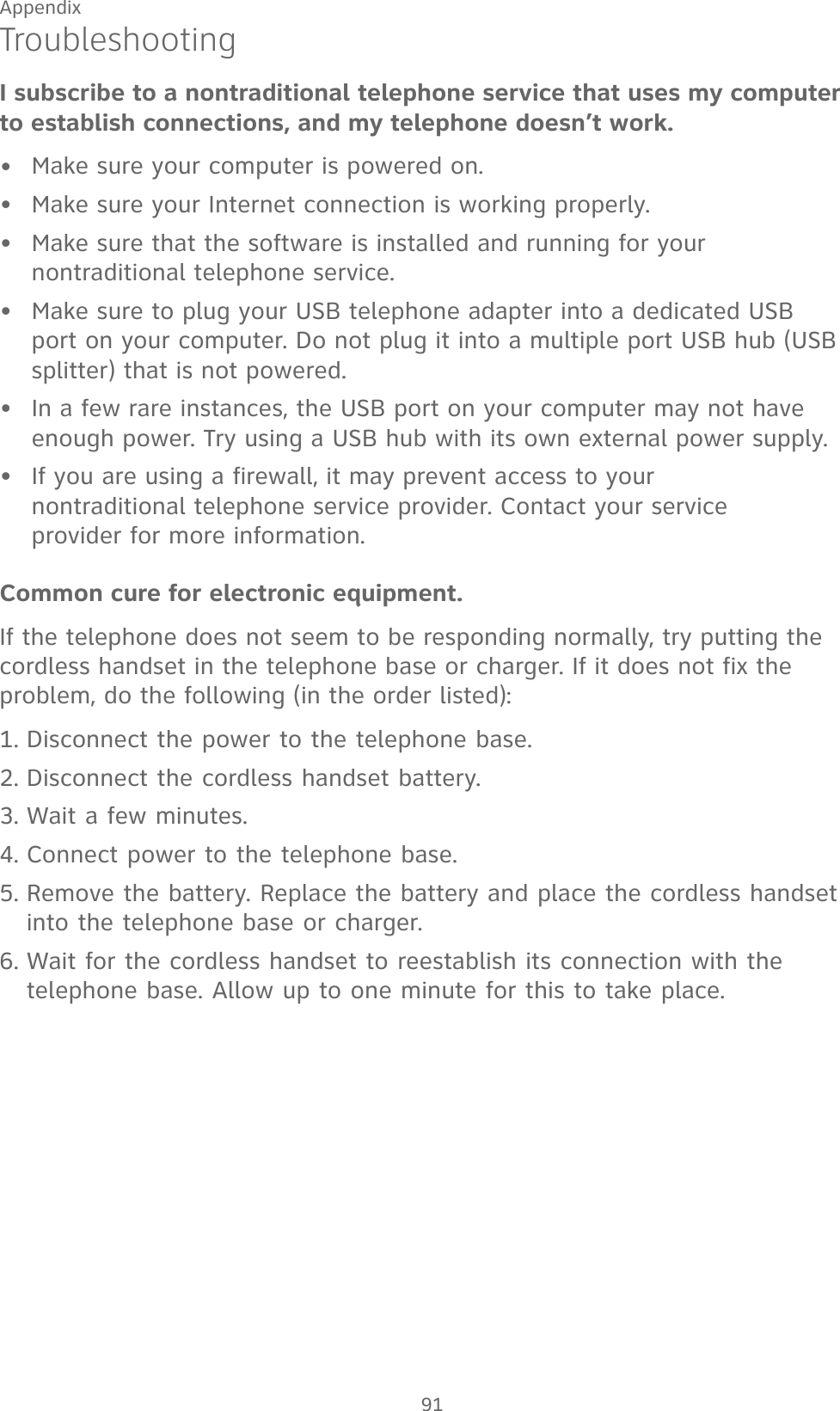
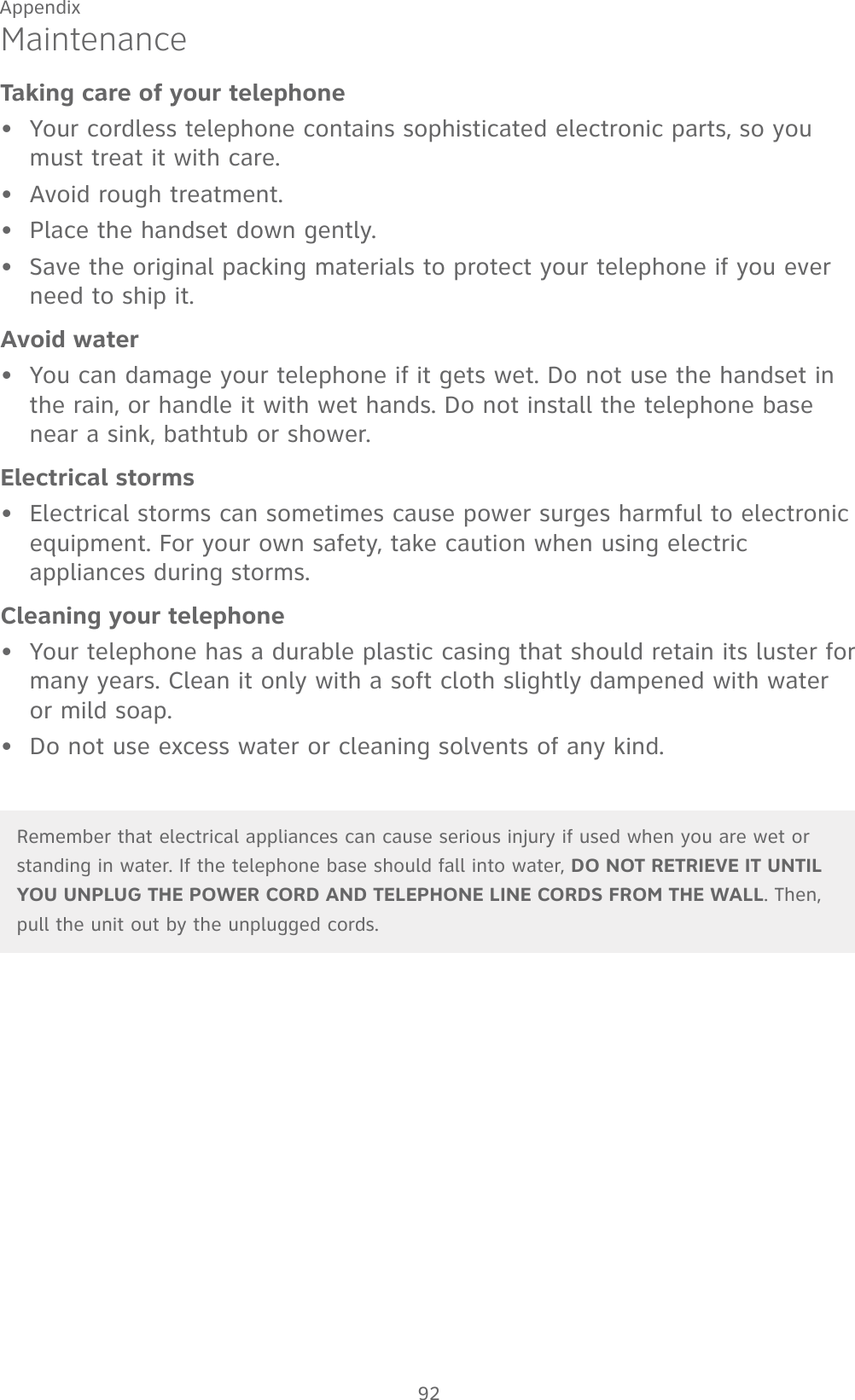
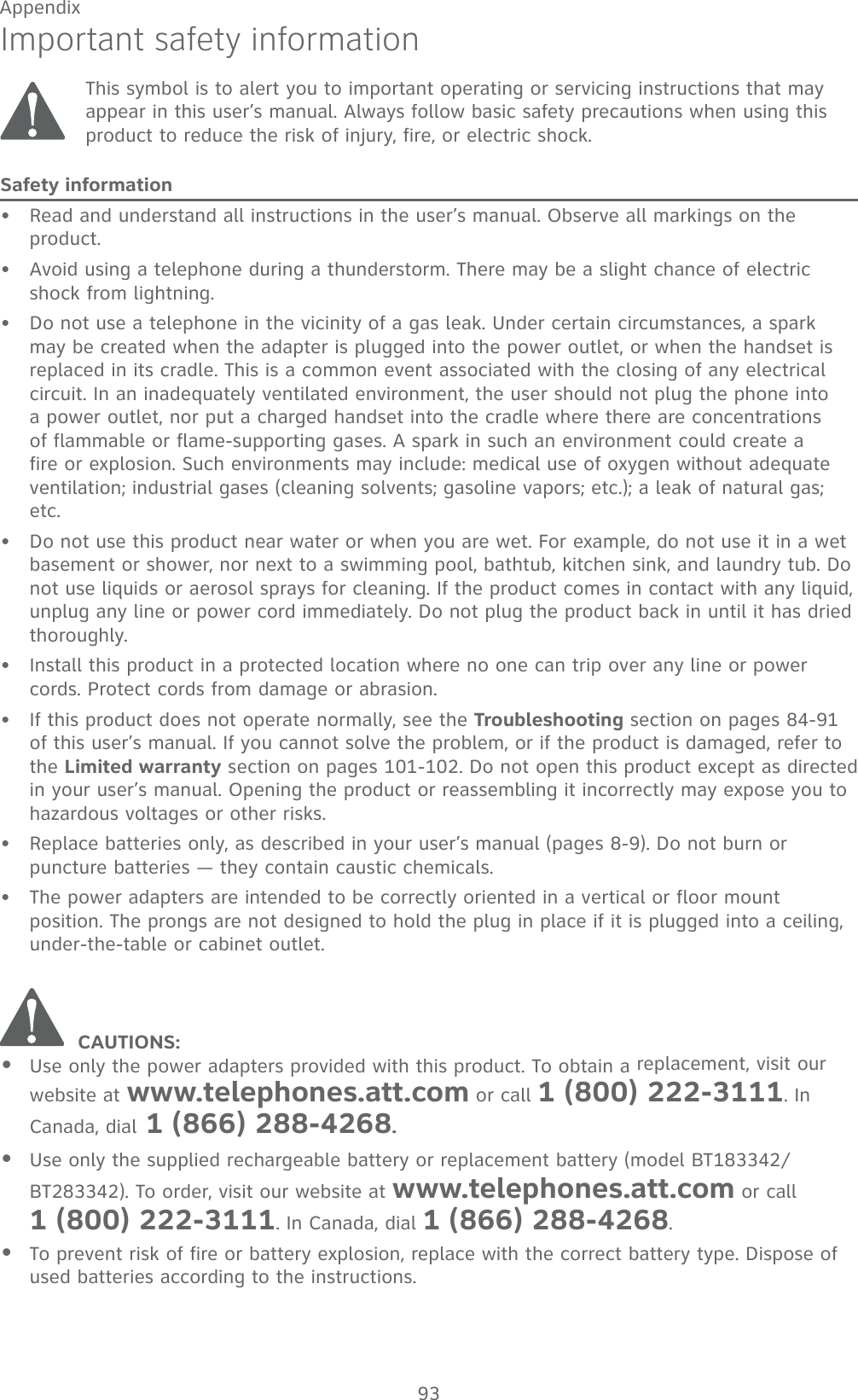
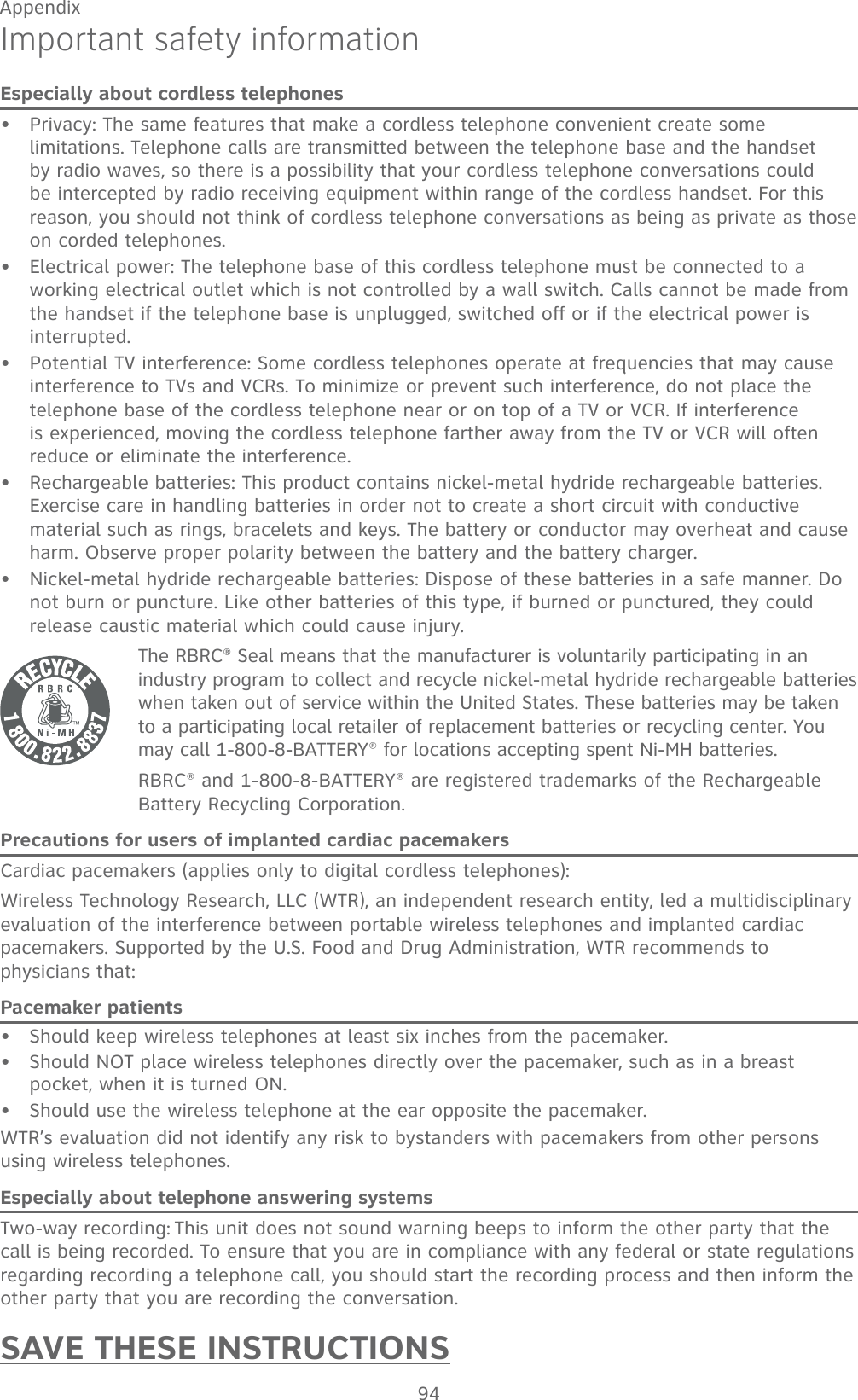
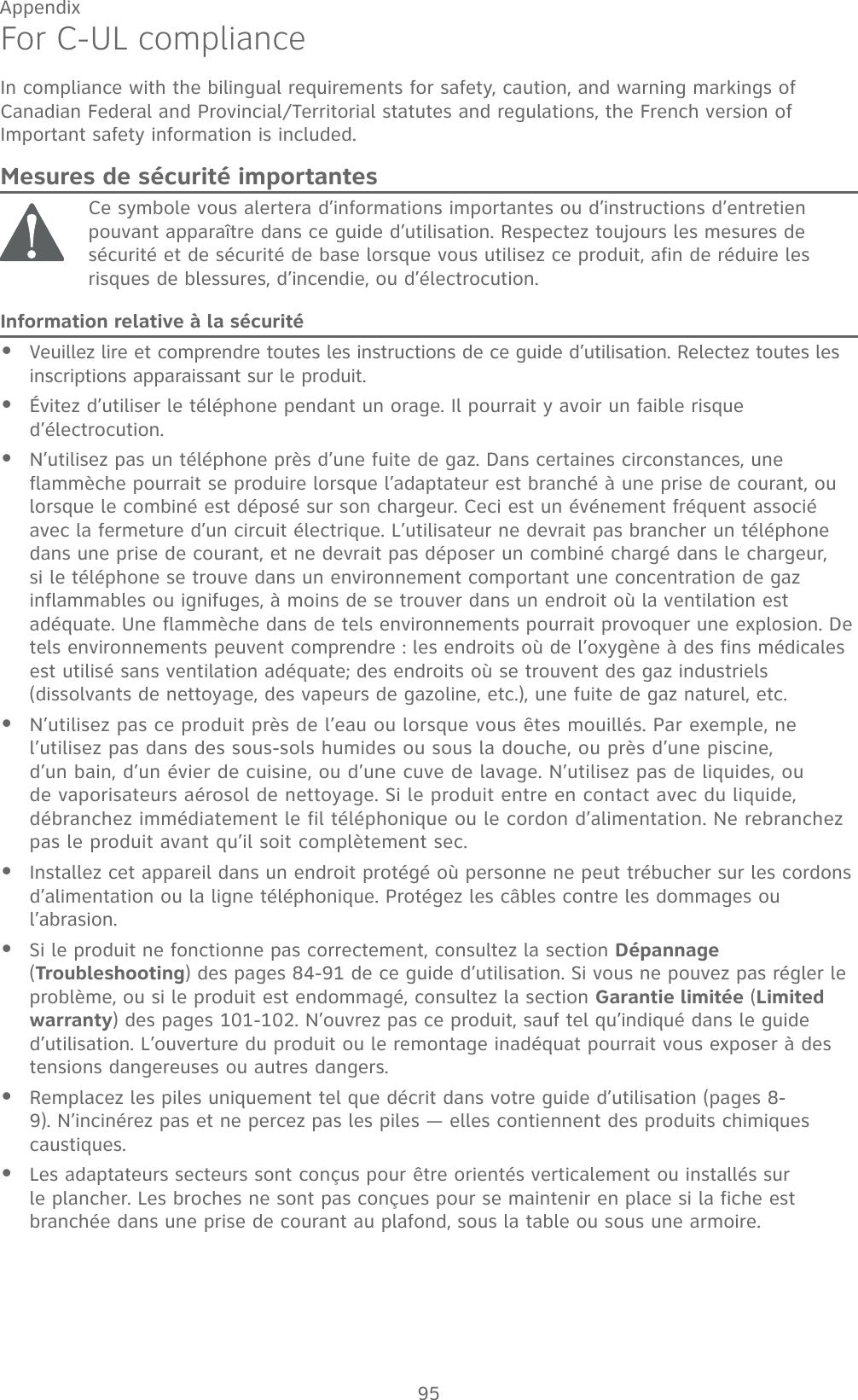
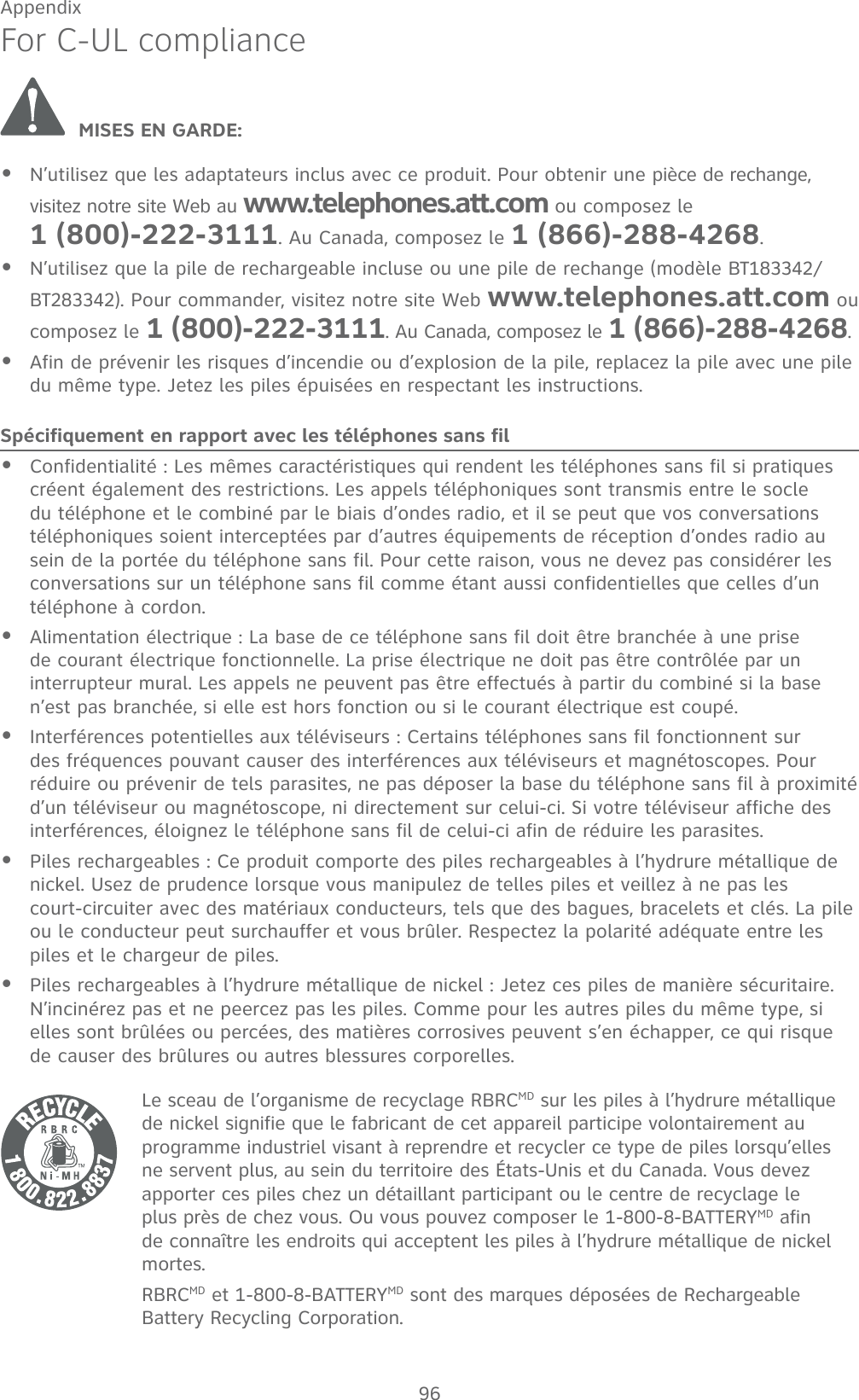
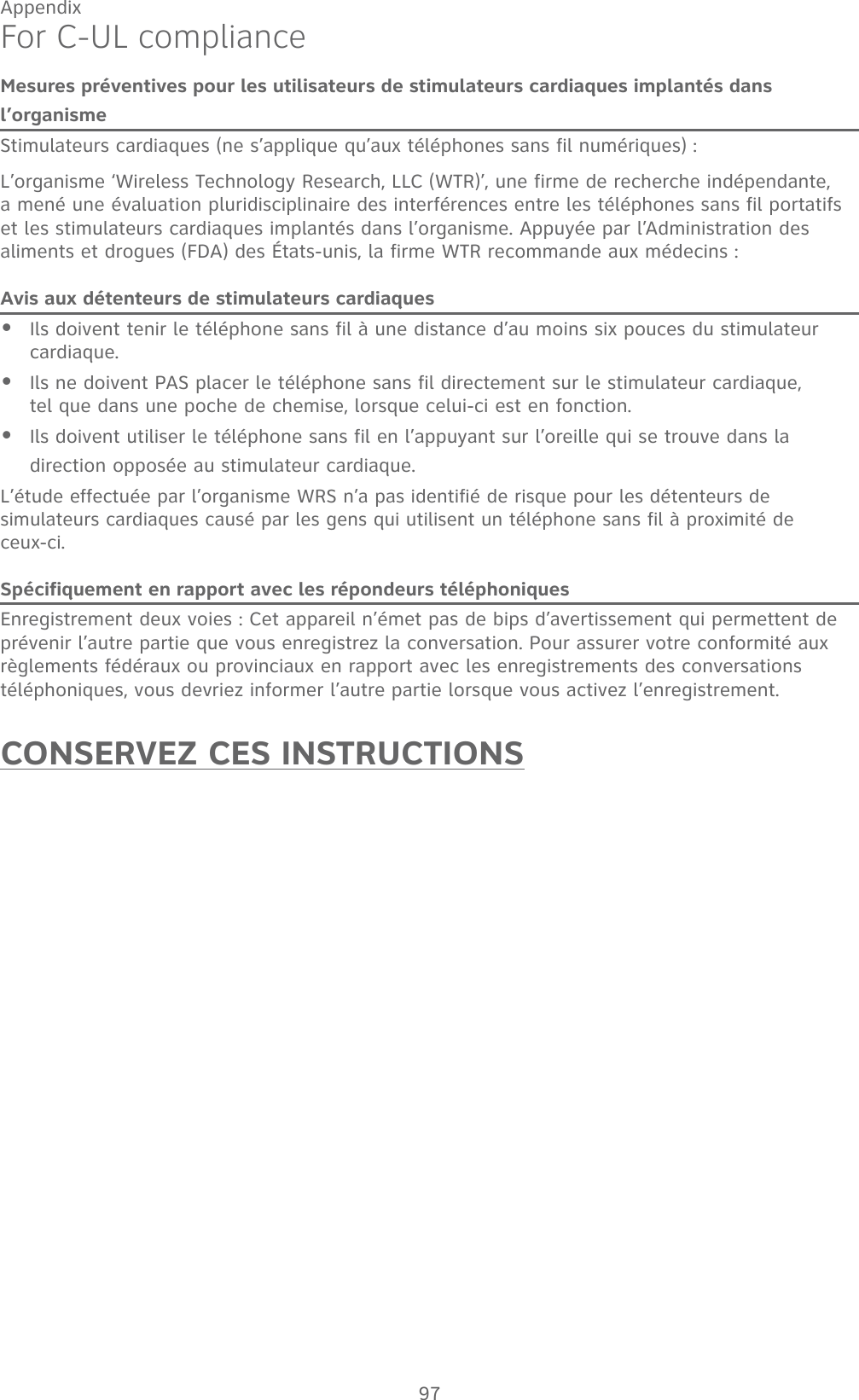
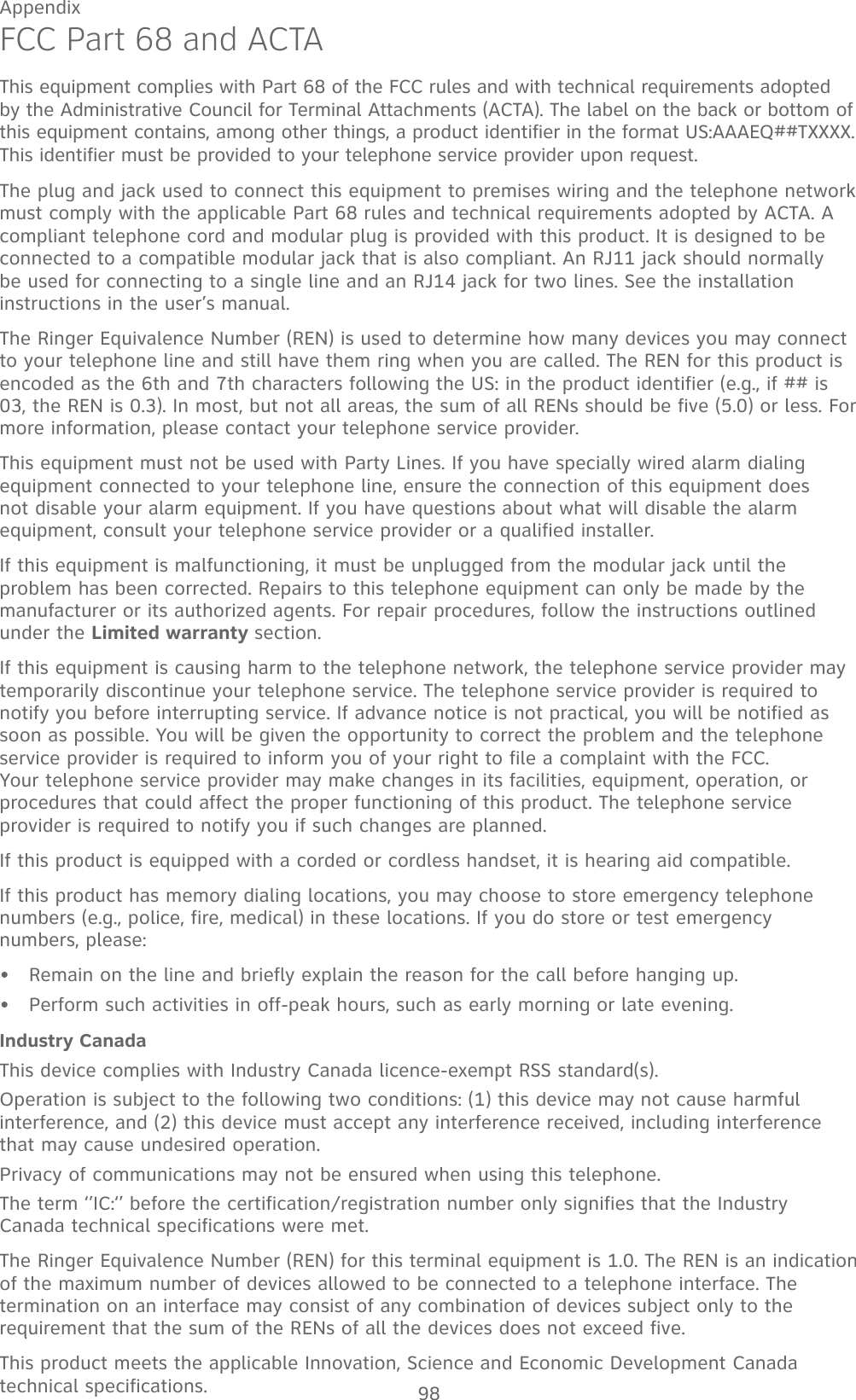
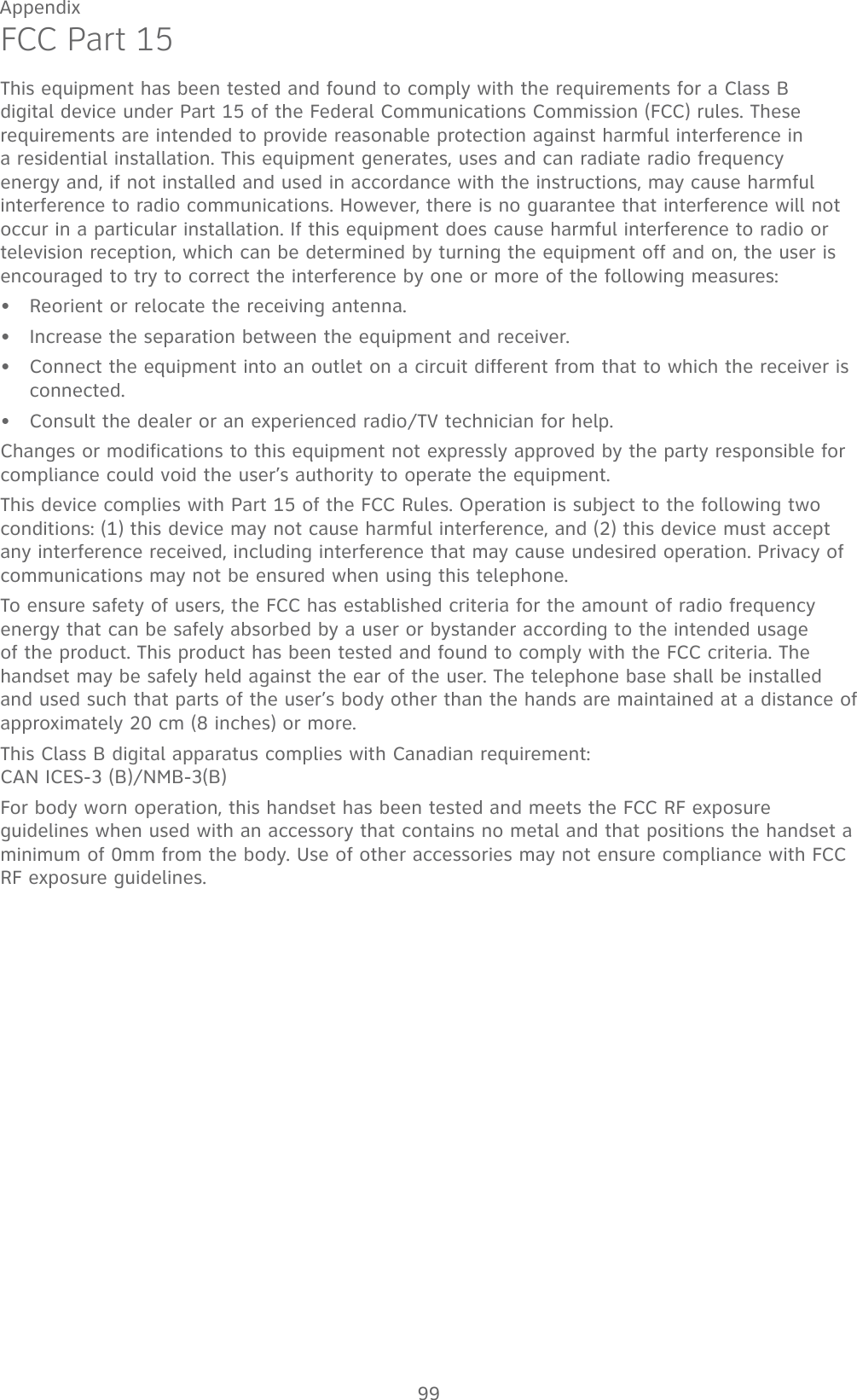
![100AppendixCalifornia Energy Commission battery charging testing instructionsThis telephone is set up to comply with the energy-conserving standards right out of the box. These instructions are intended for California Energy Commission (CEC) compliance testing only. When the CEC battery charging testing mode is activated, all telephone functions, except battery charging, will be disabled.To activate the CEC battery charging testing mode:1. When the phone is not in use, press MENU, , 2, 3, 2, 7, 3, 8, # and then the left soft key on the telephone base.2. The CEC battery charging testing mode will be activated in about 60 seconds. You hear a confirmation tone from the telephone base.When the phone successfully enters the CEC battery charging testing mode, all cordless handsets will be deregistered. All handsets show Press [HOLD] on base for 4 sec, then press [#] on handset.When the phone fails to enter this mode, repeat the steps mentioned above.To deactivate the CEC battery charging testing mode:1. Unplug the telephone base power adapter from the power outlet, then plug it back in. The telephone base is powered up as normal.2. Register your handsets back to the telephone base. See page 76 for handset registration instructions.BC](https://usermanual.wiki/VTech-Telecommunications/80-7009-01.User-manual/User-Guide-3171755-Page-106.png)
